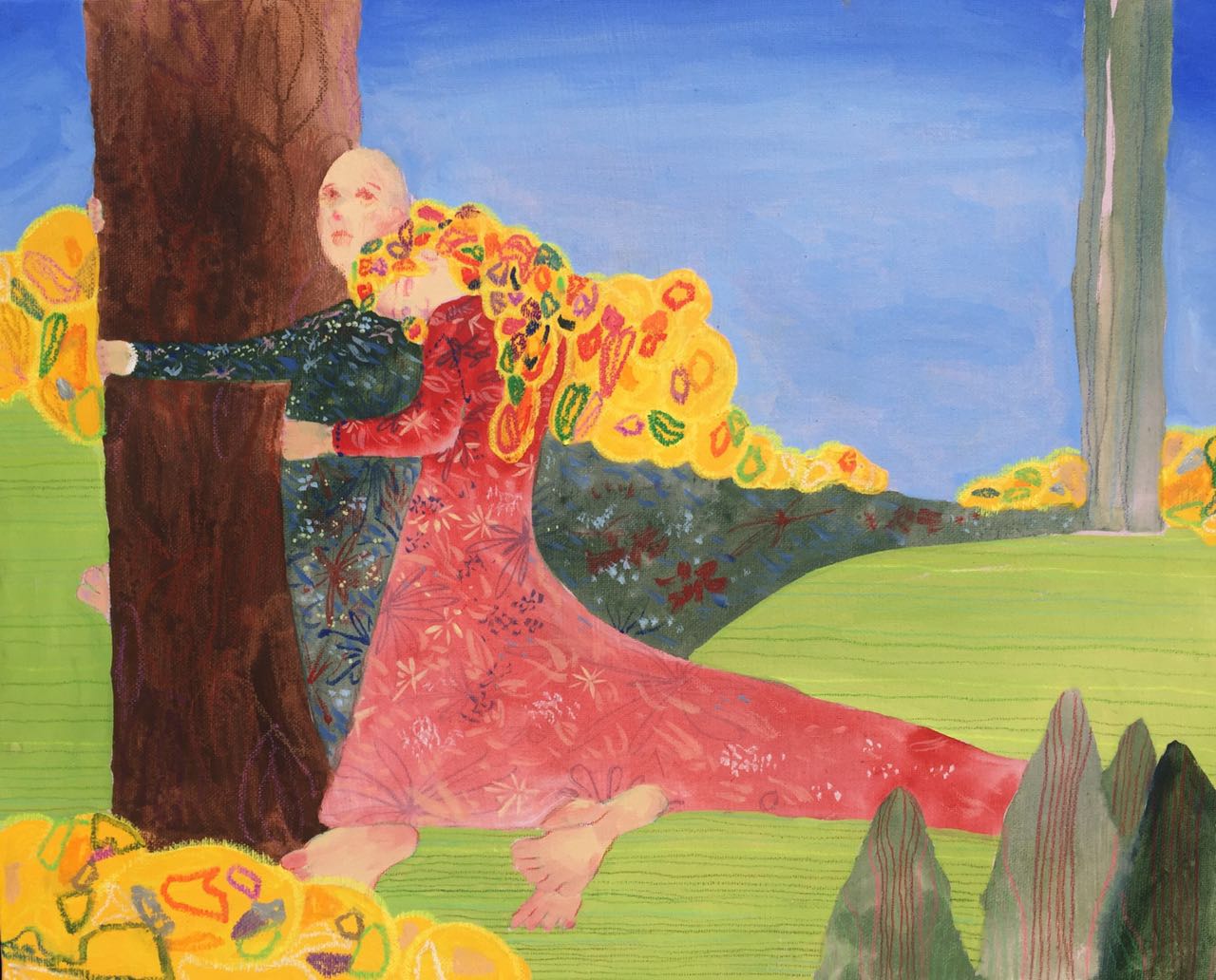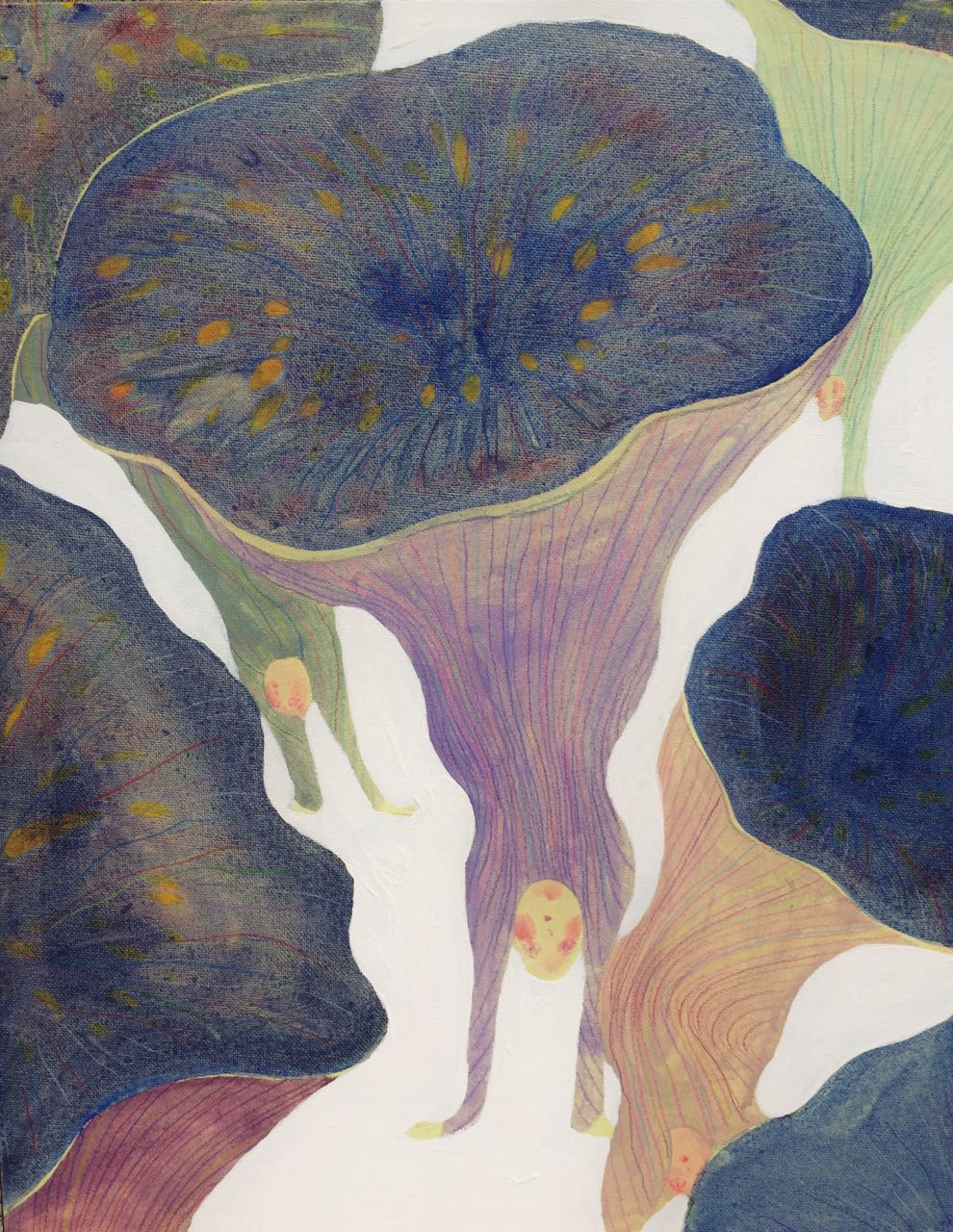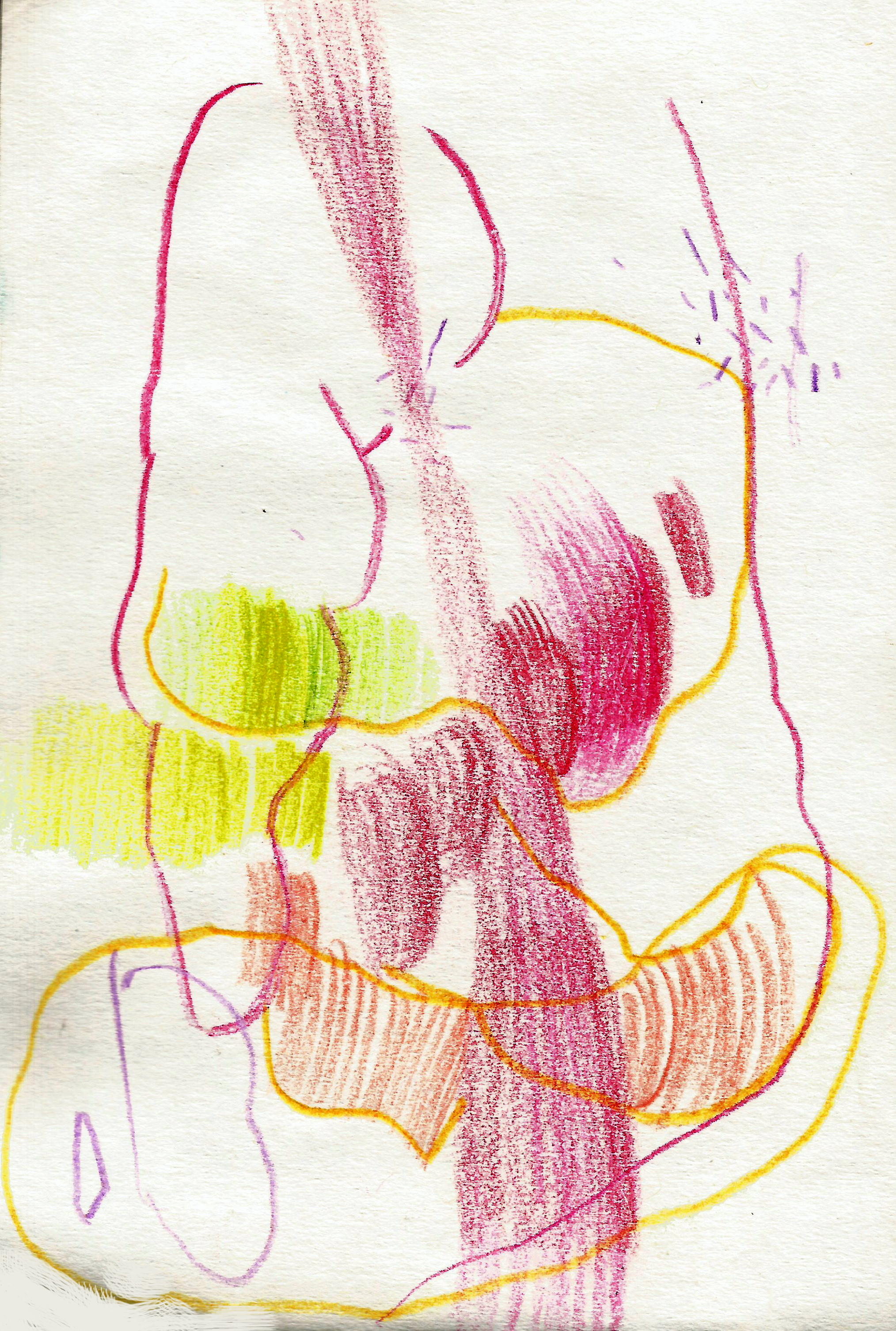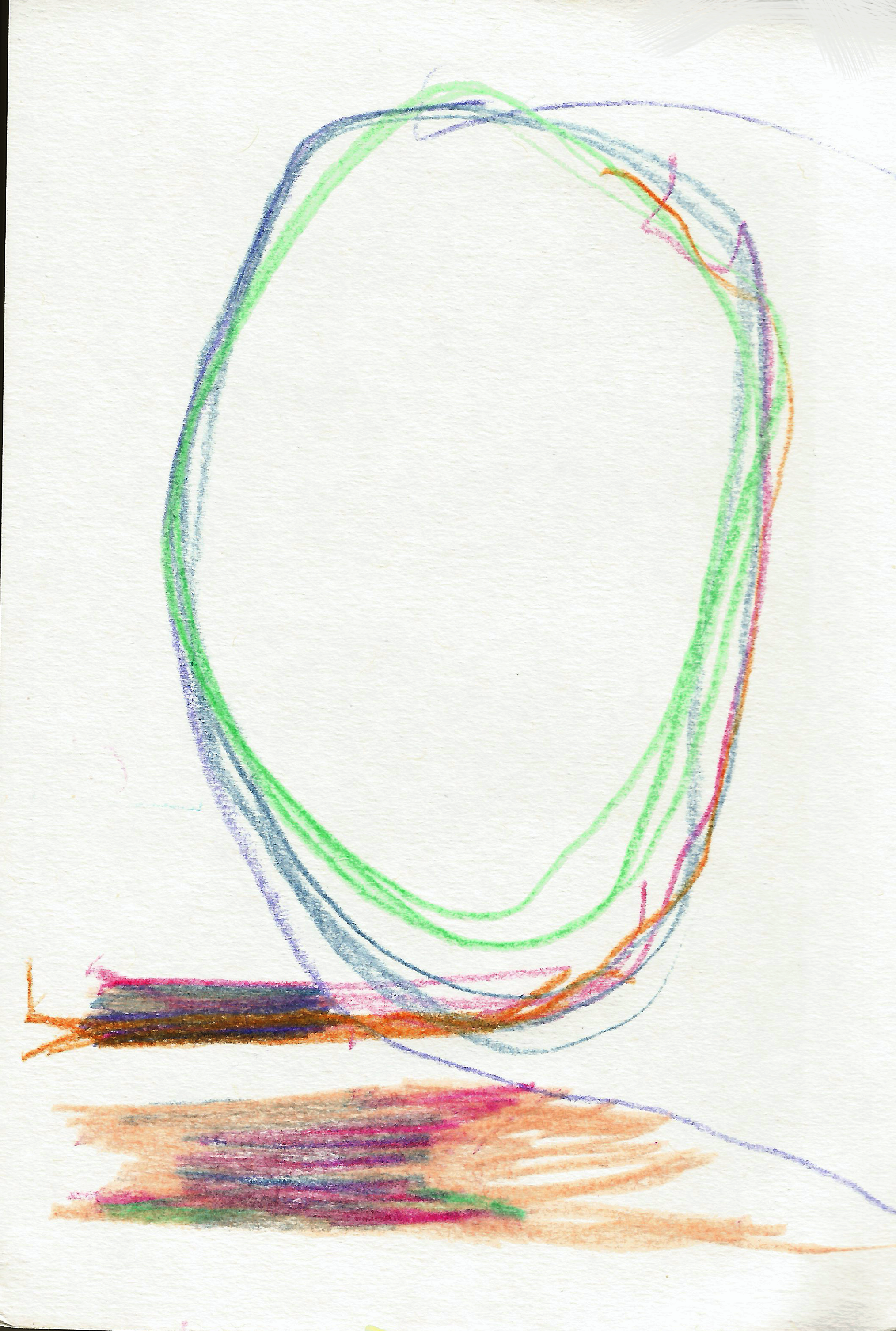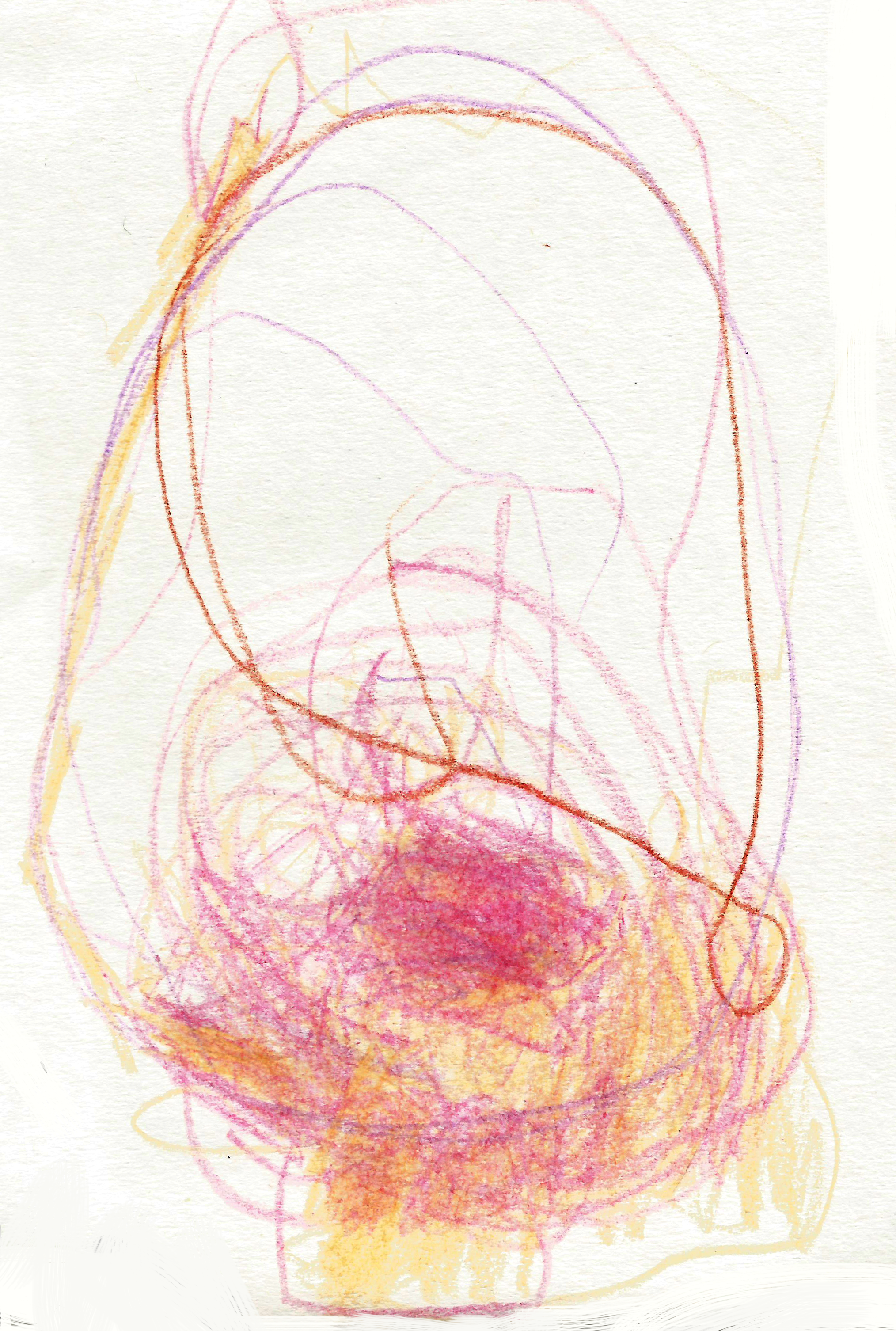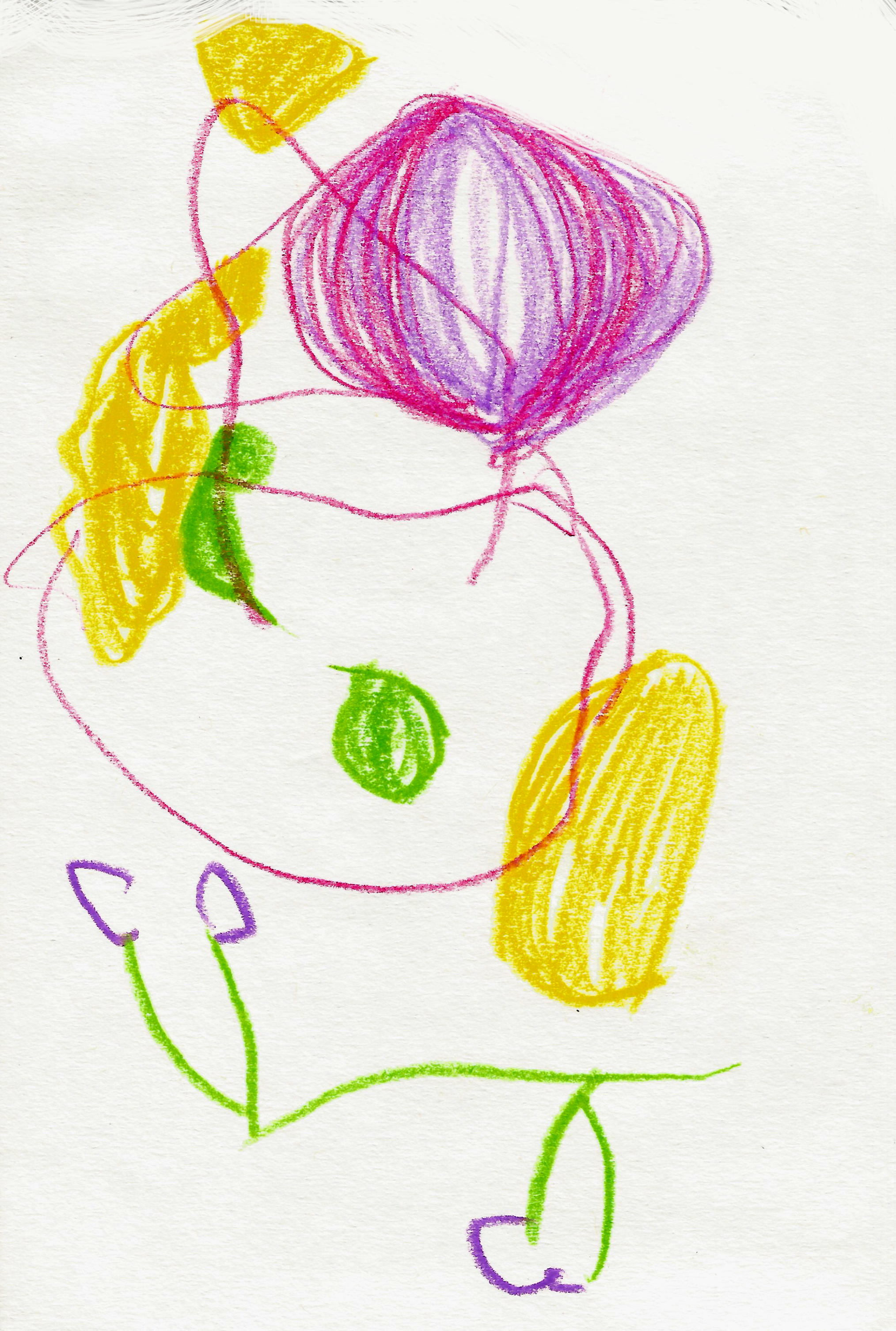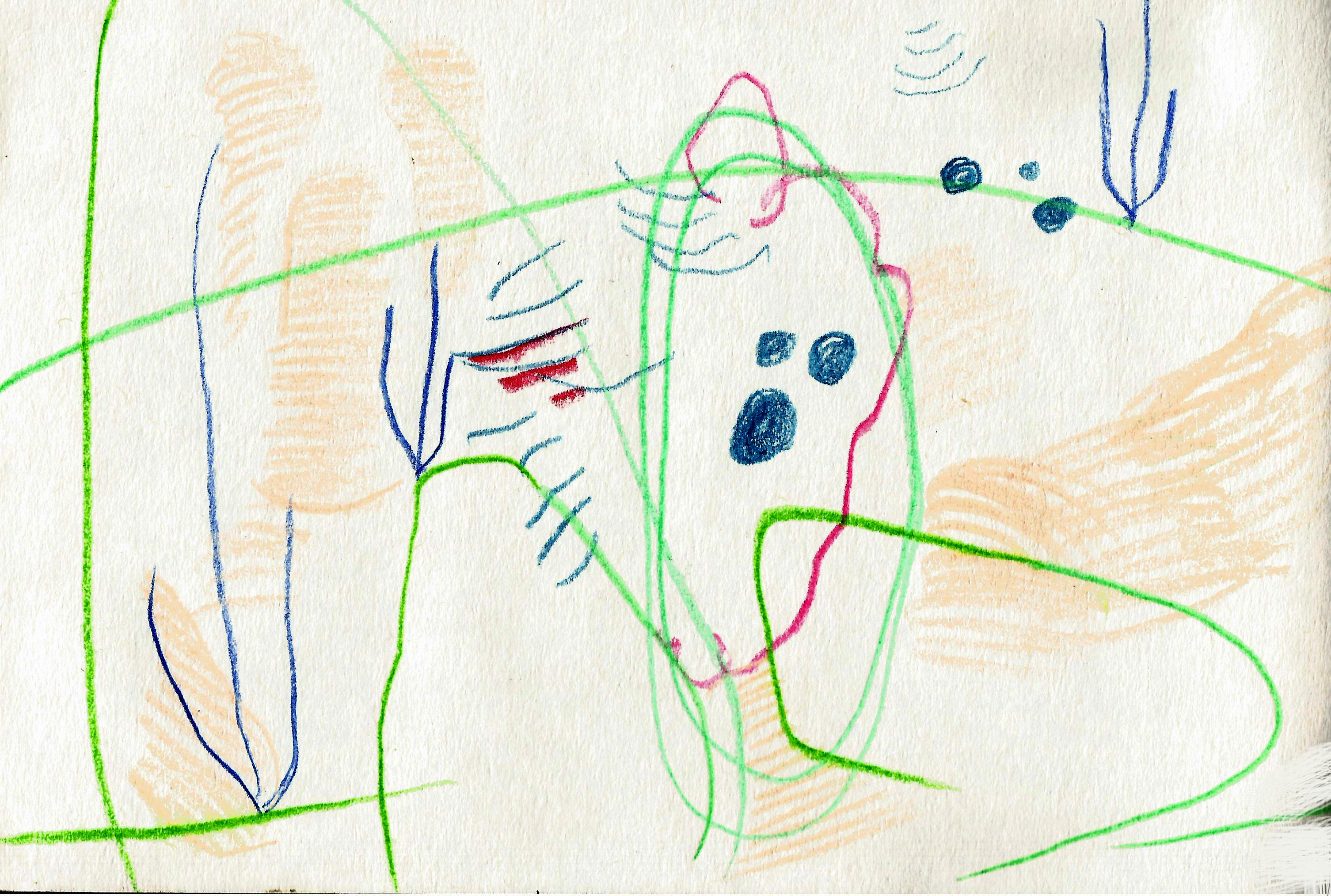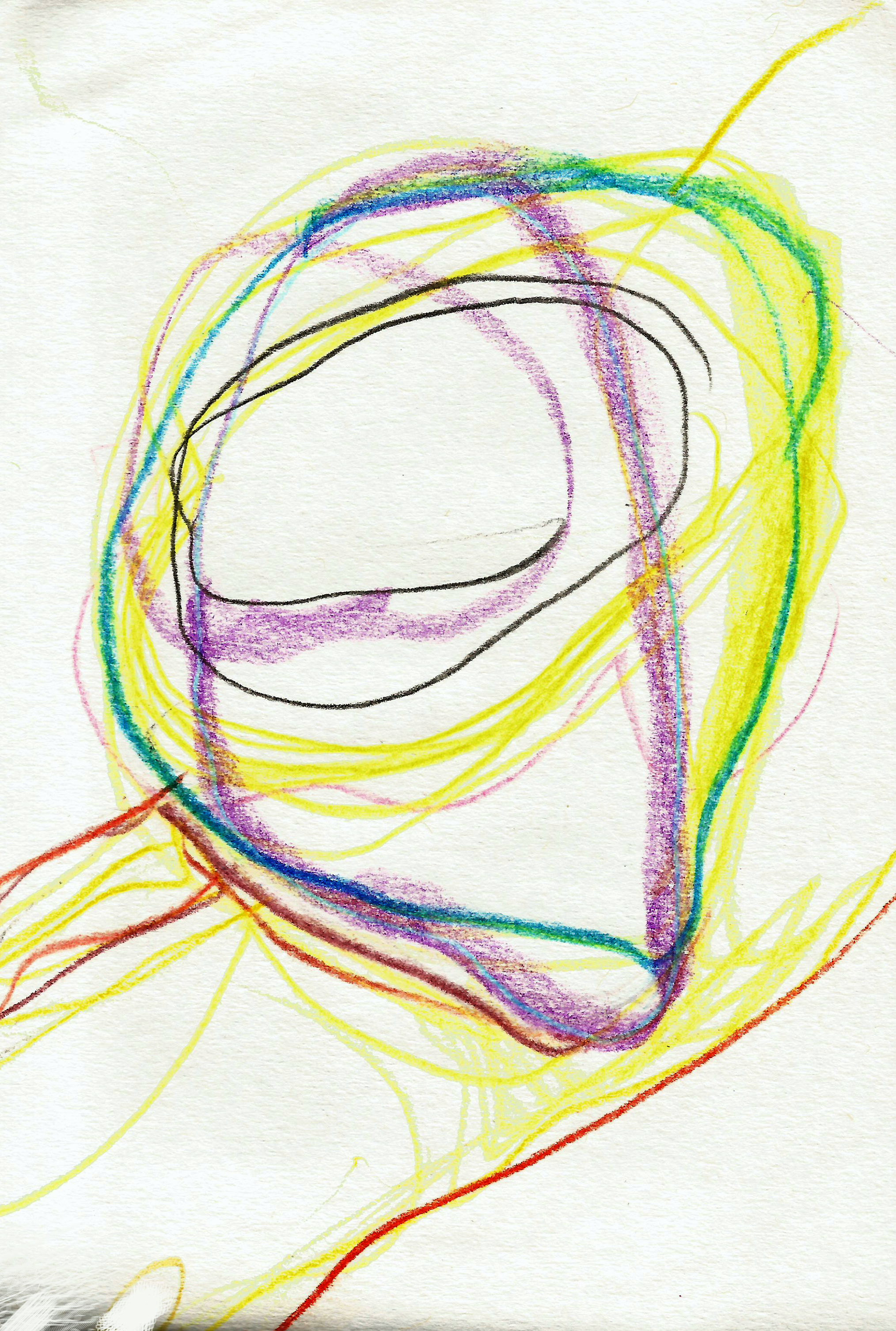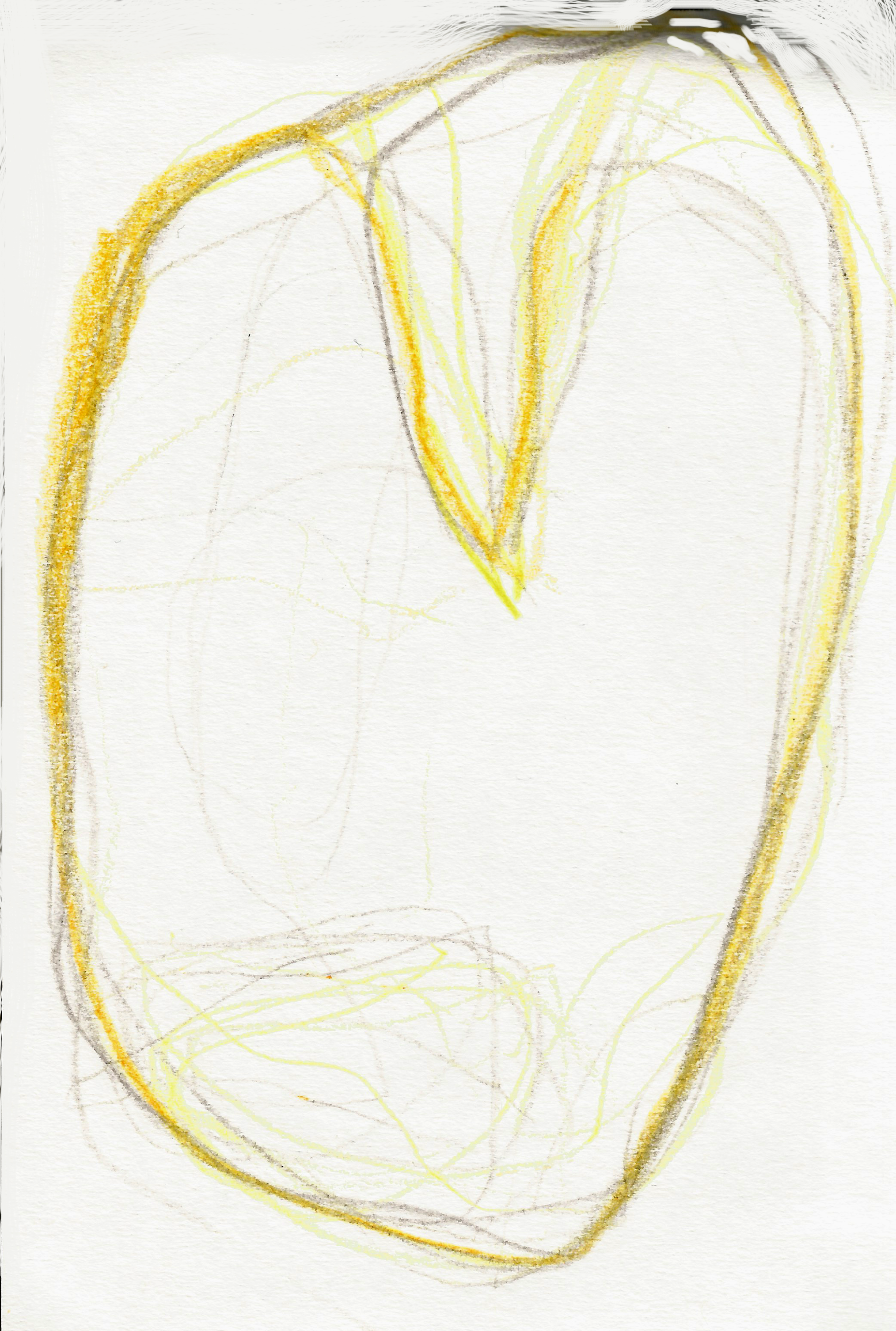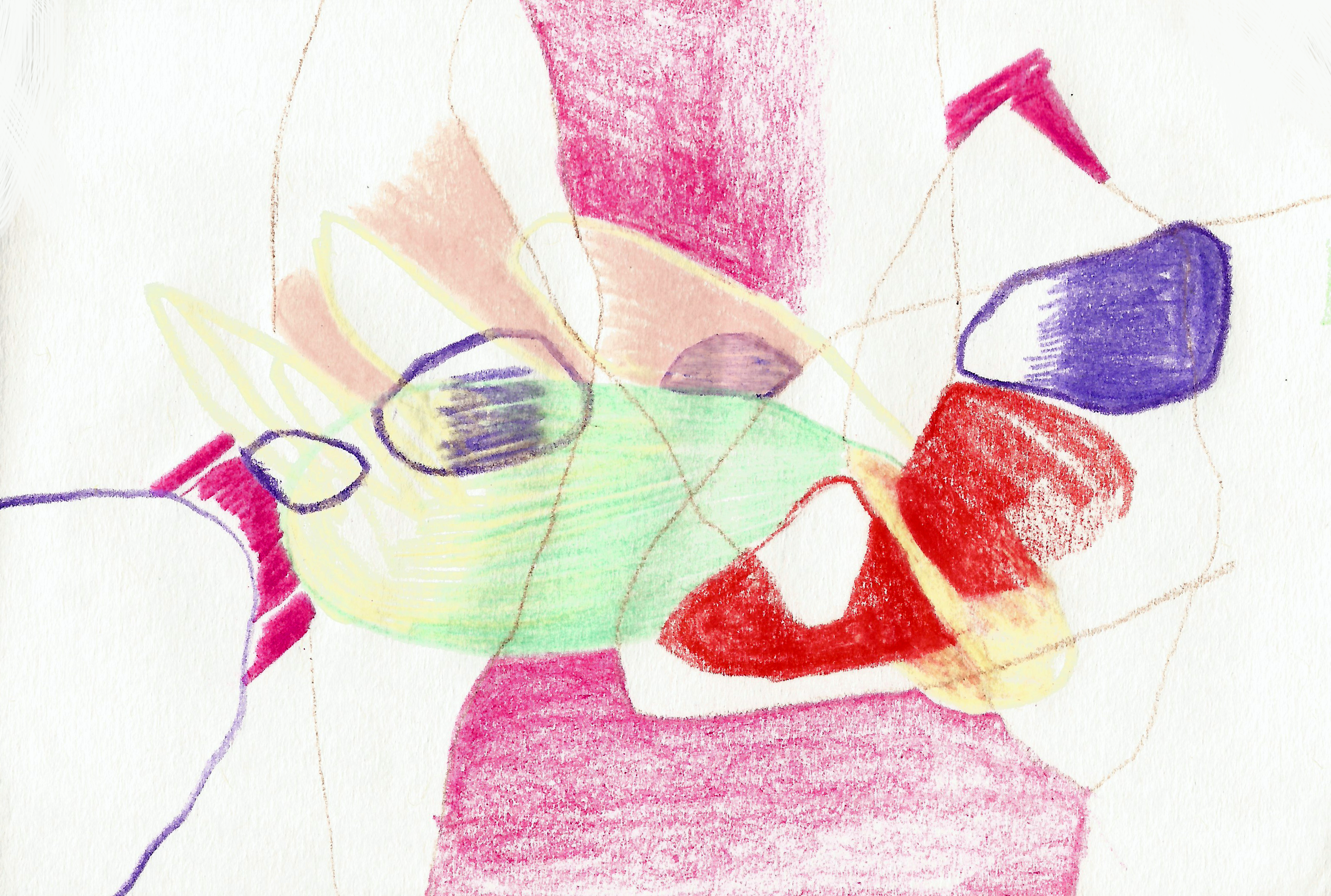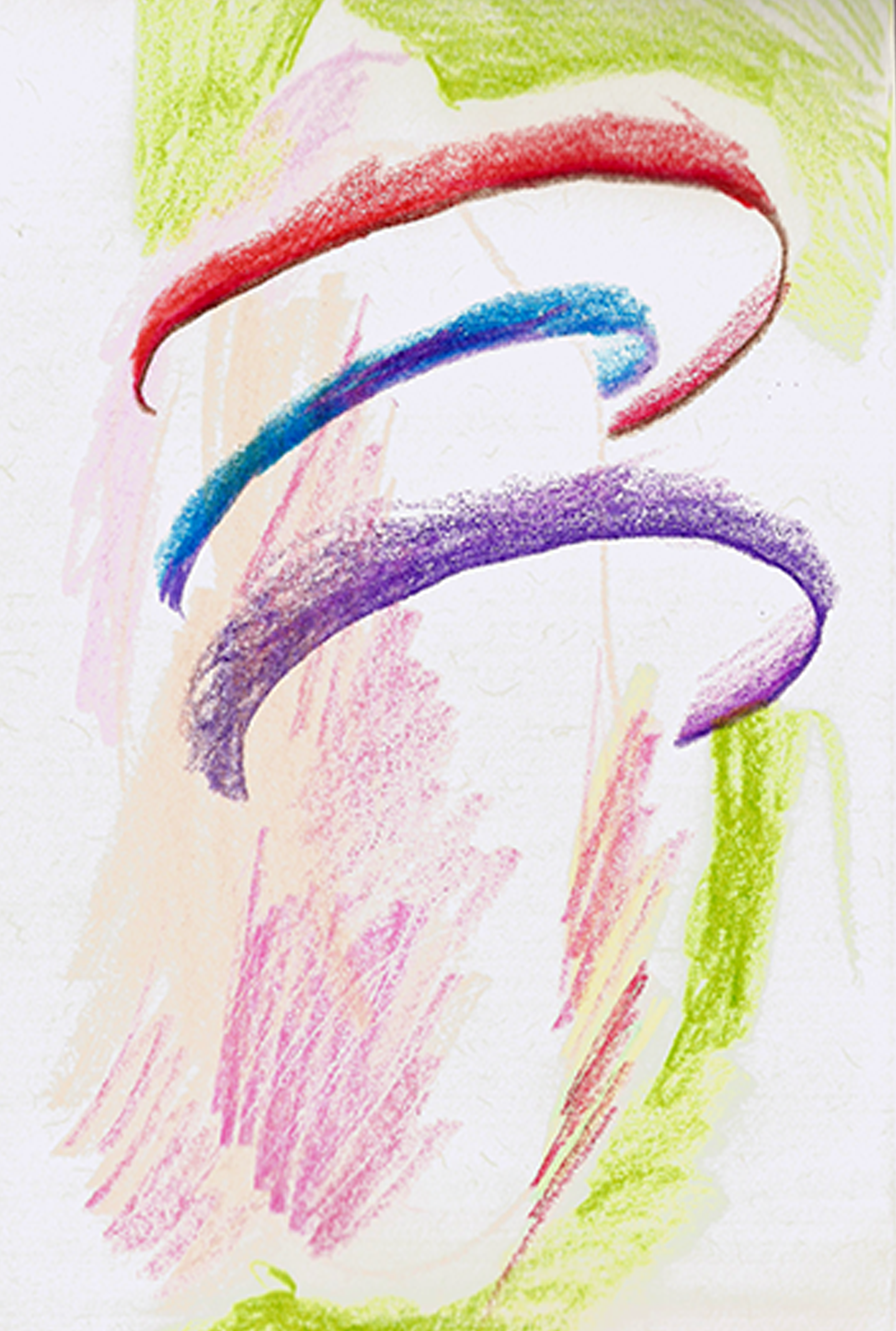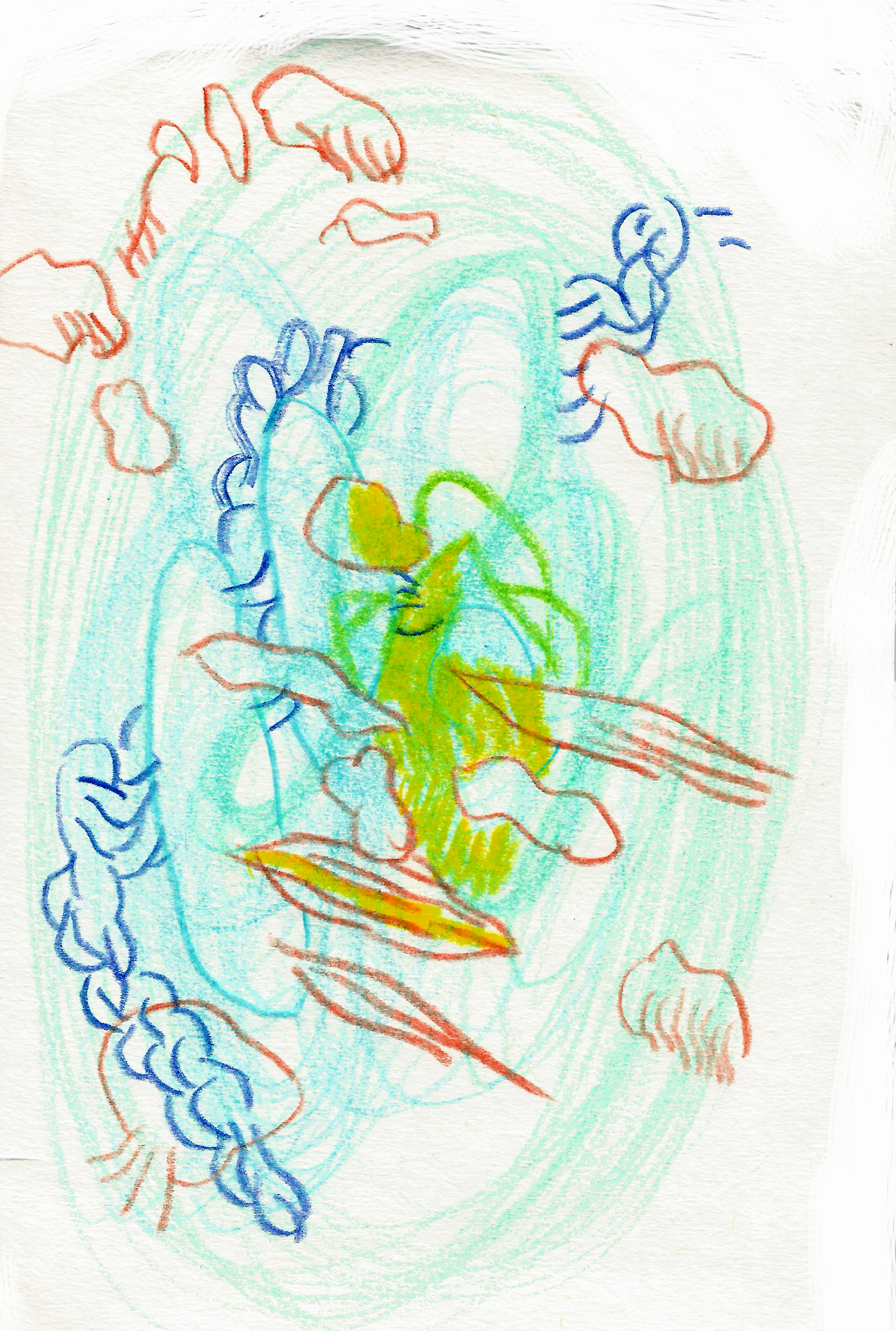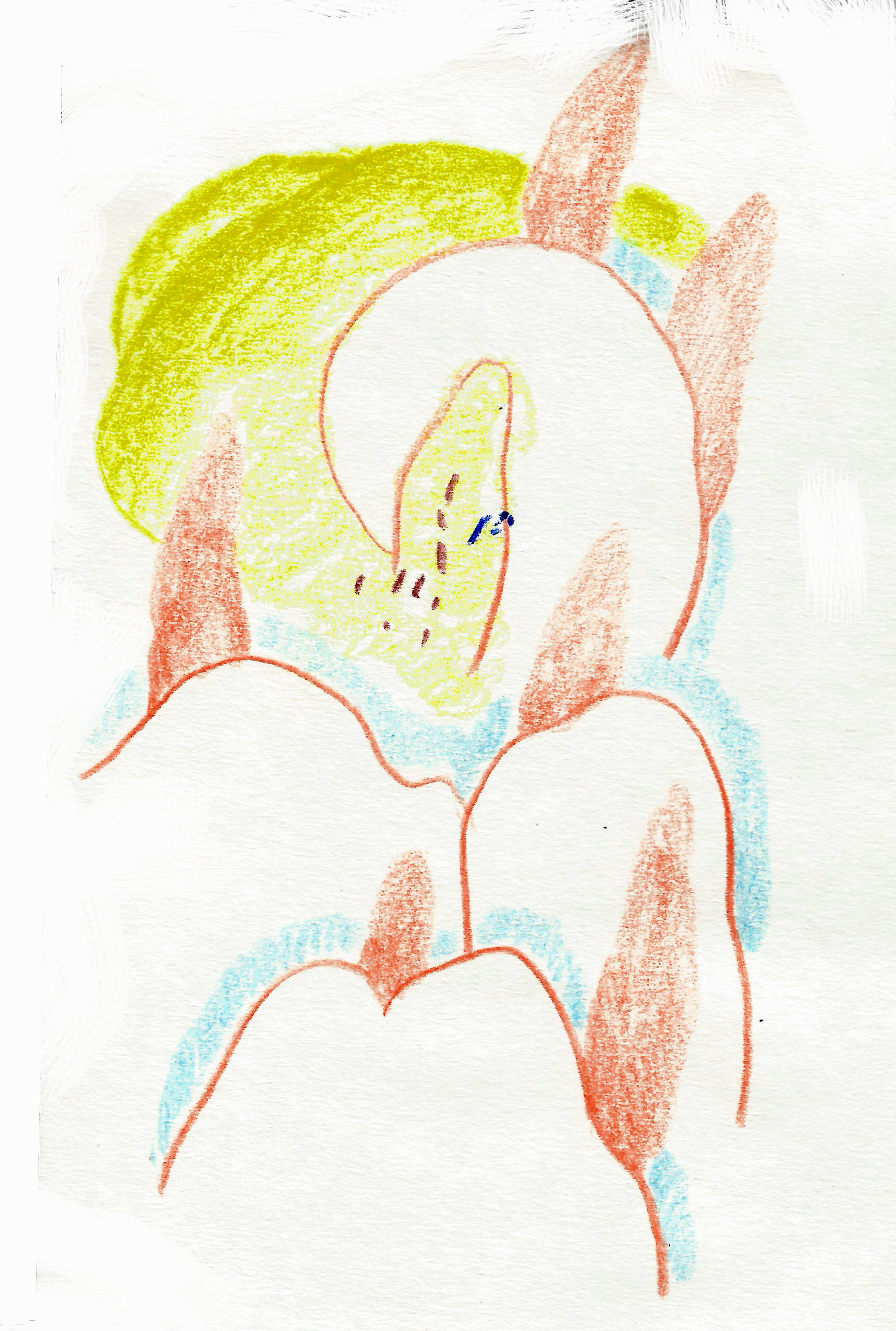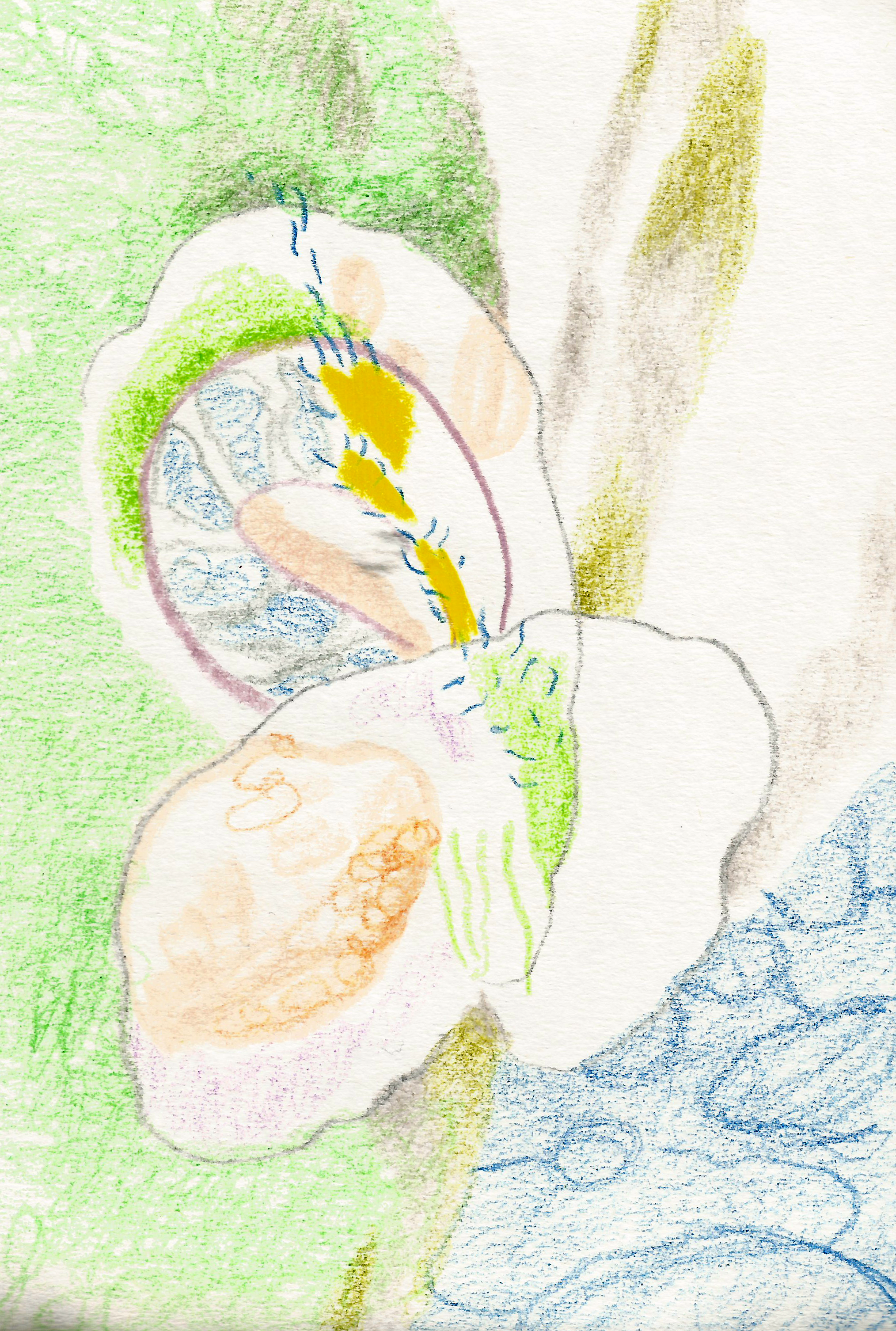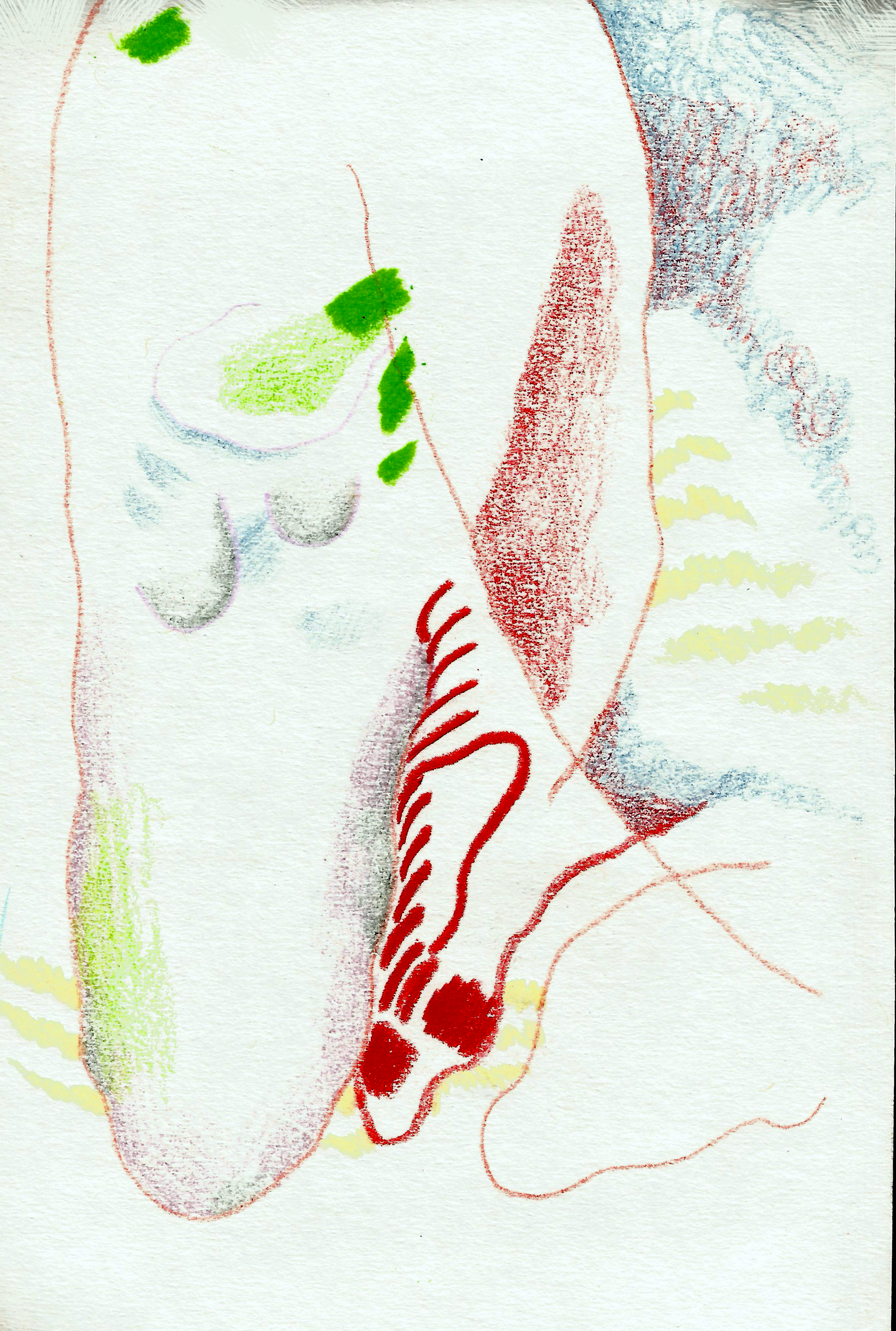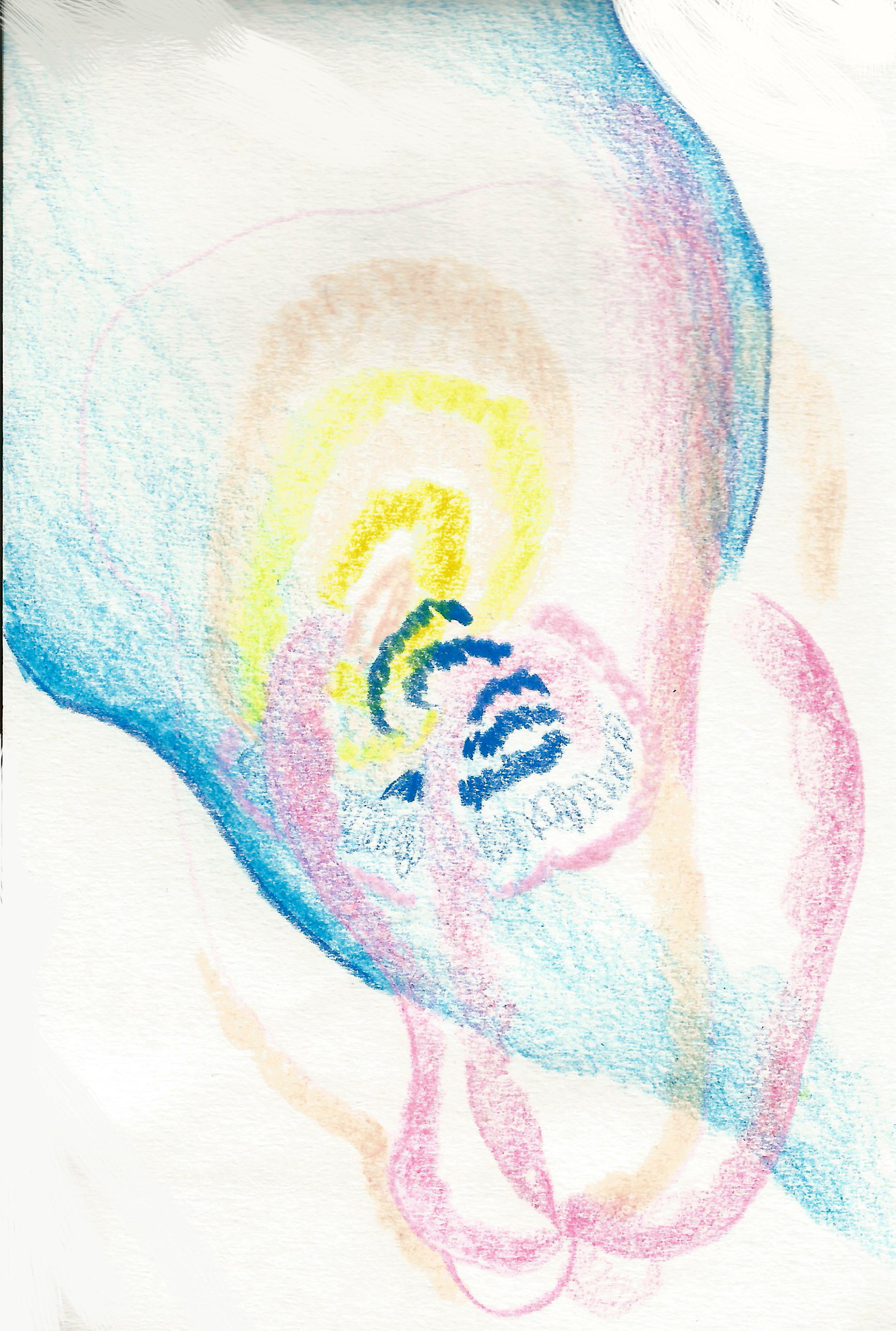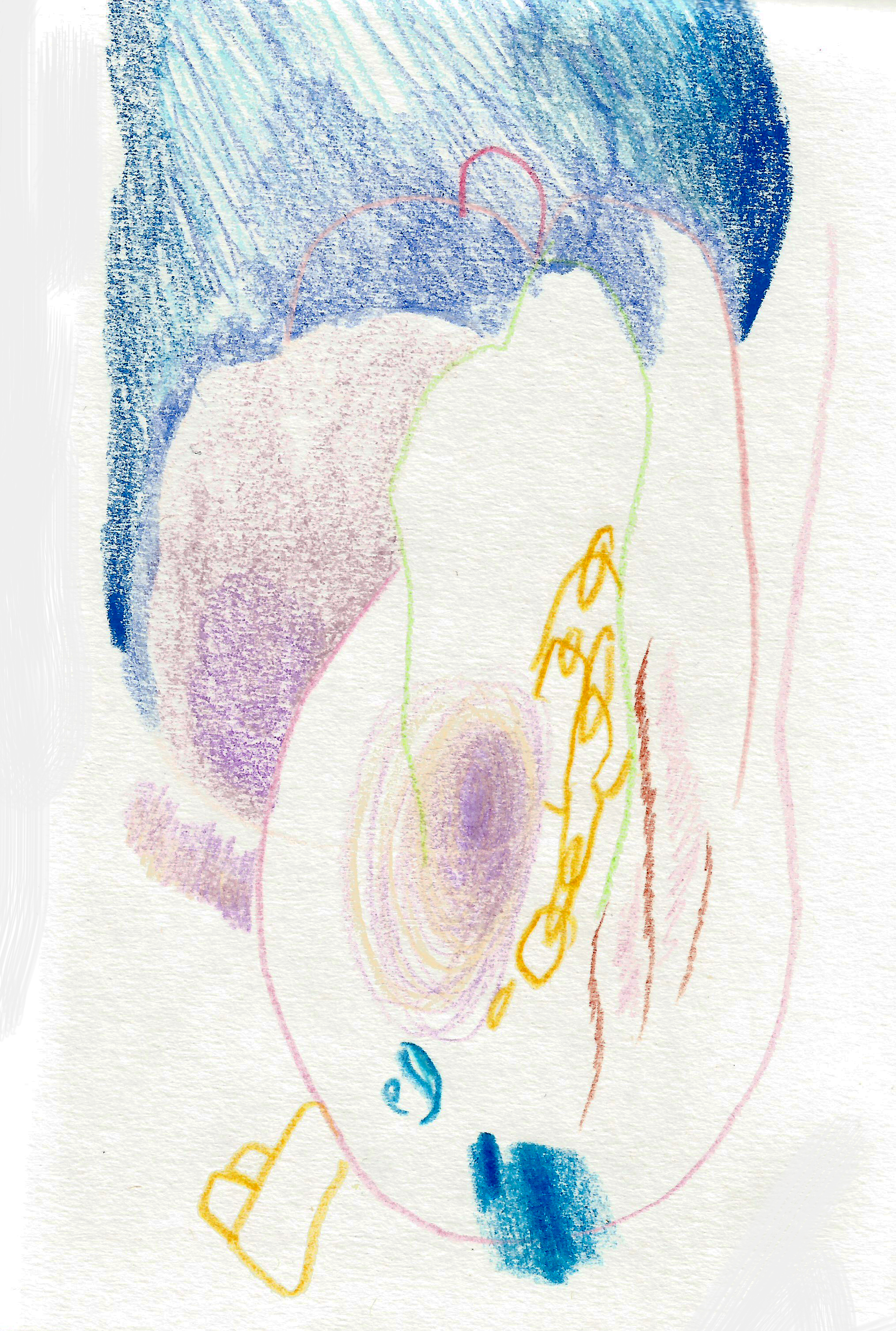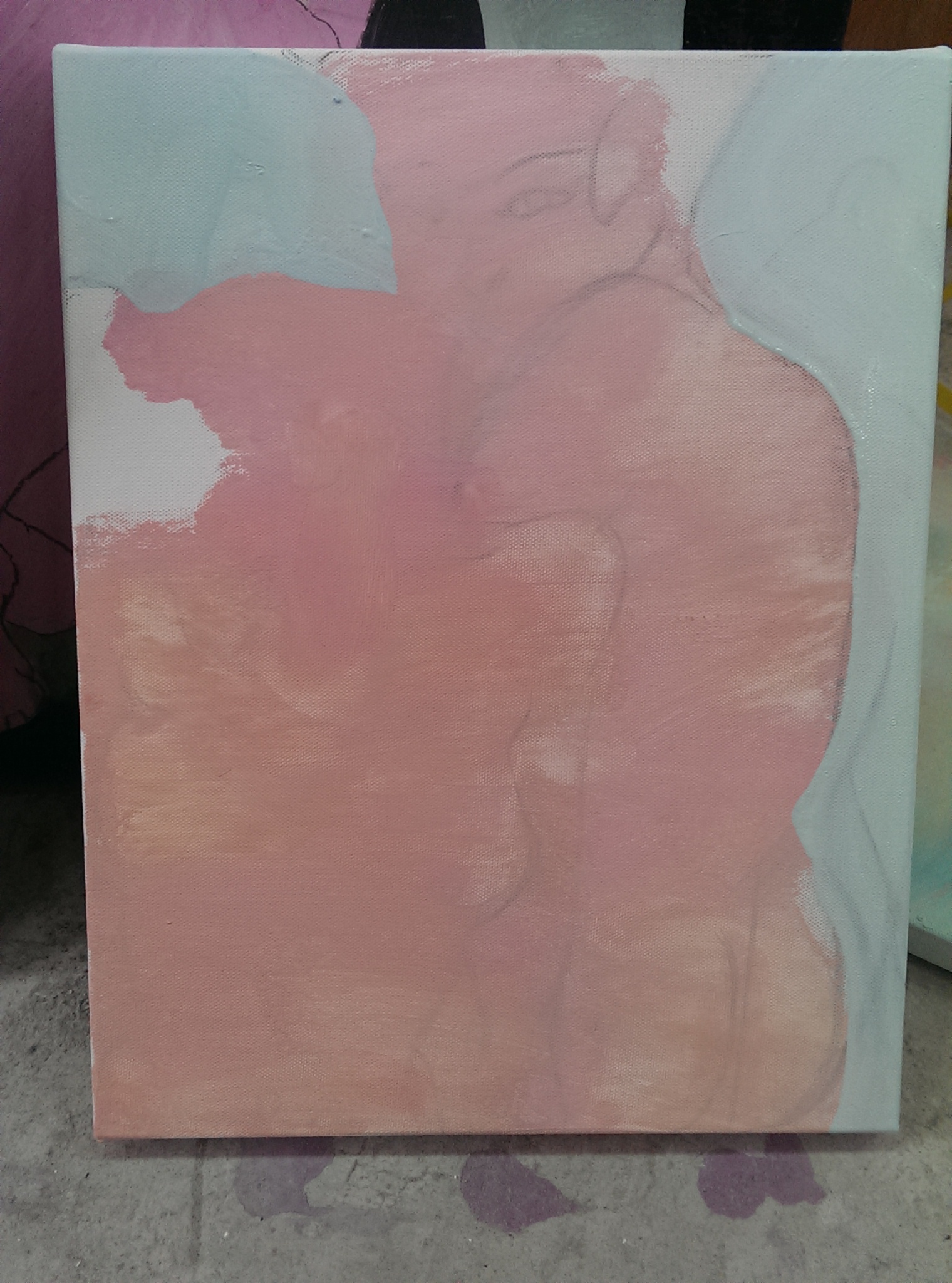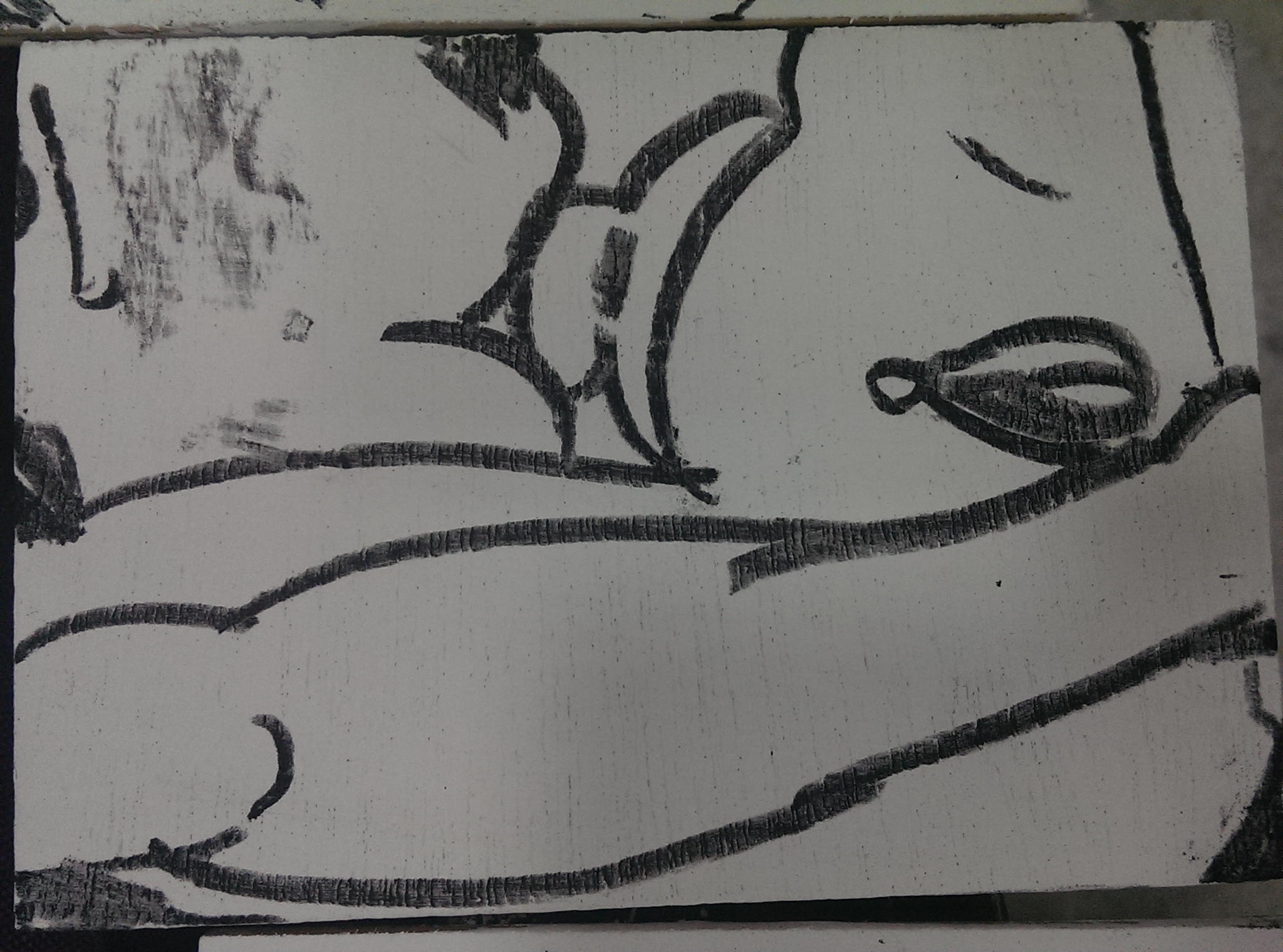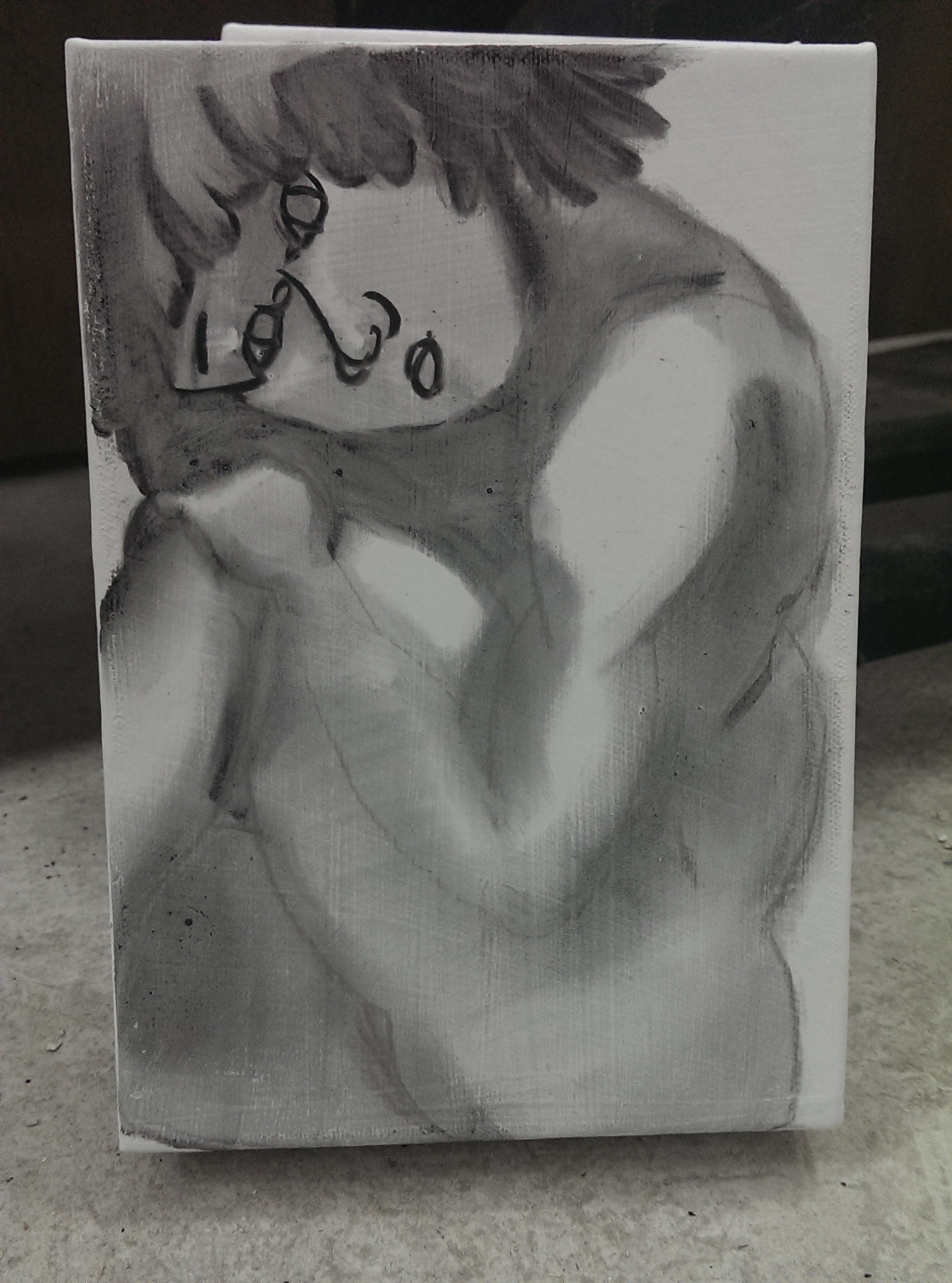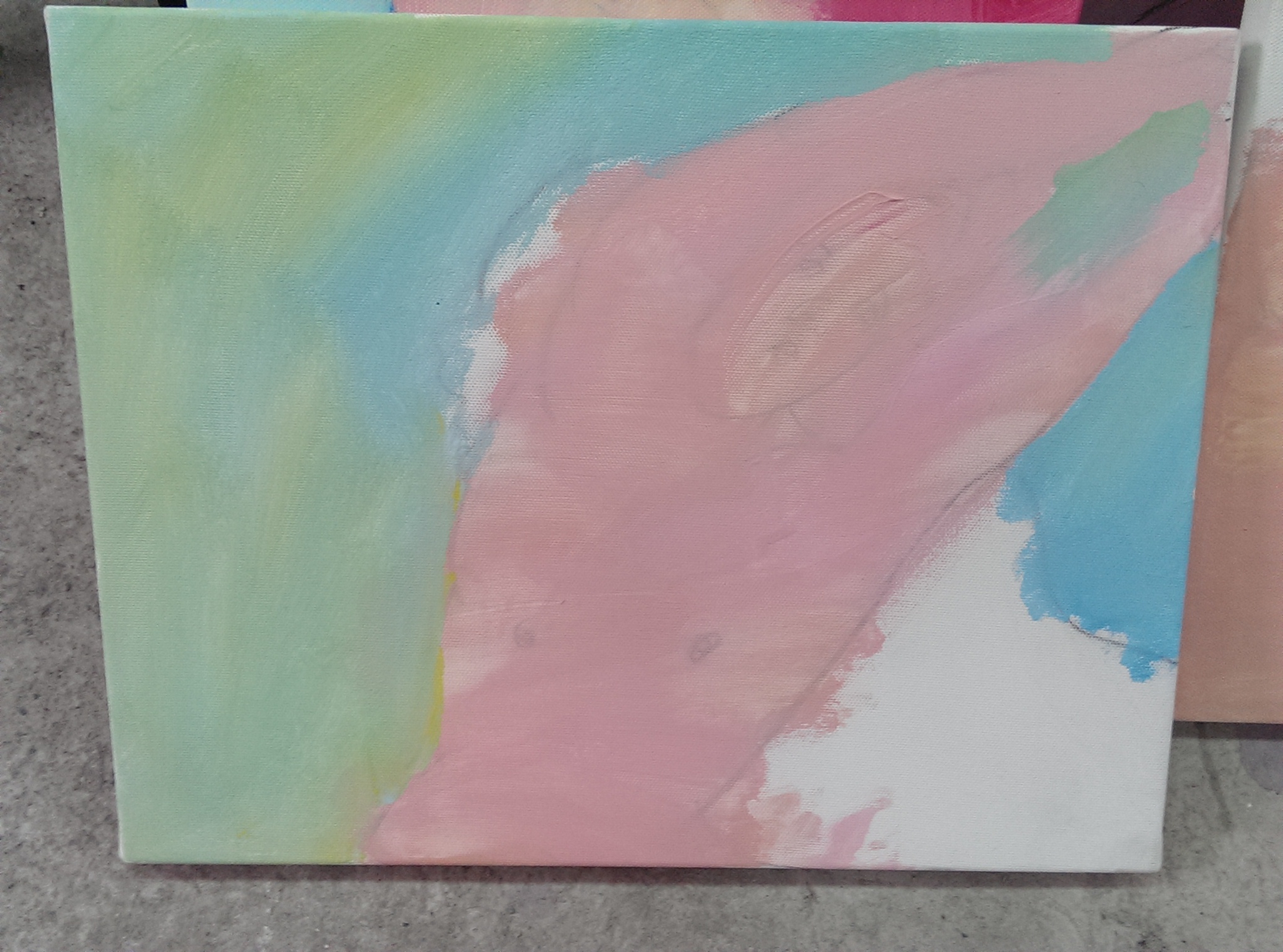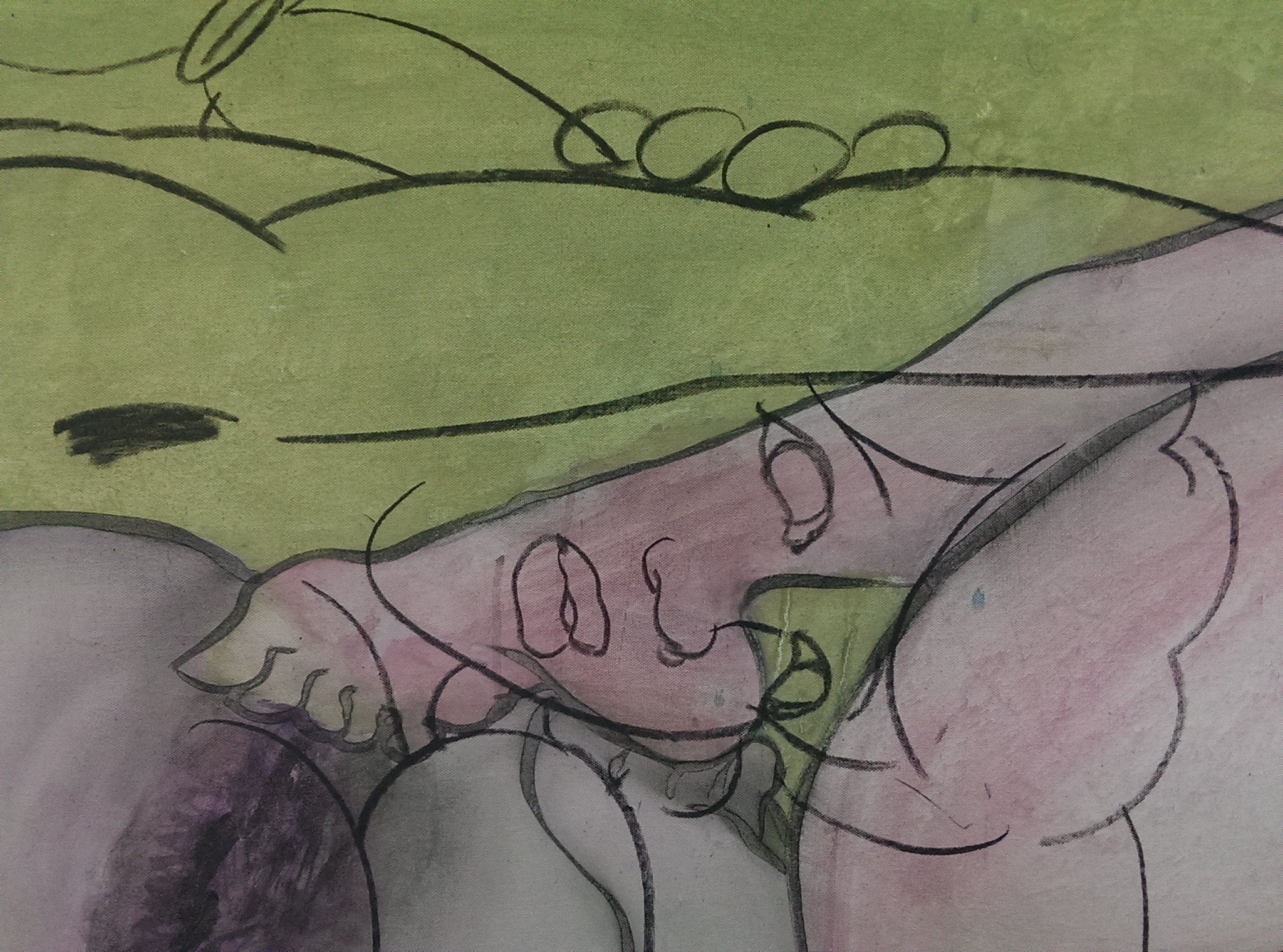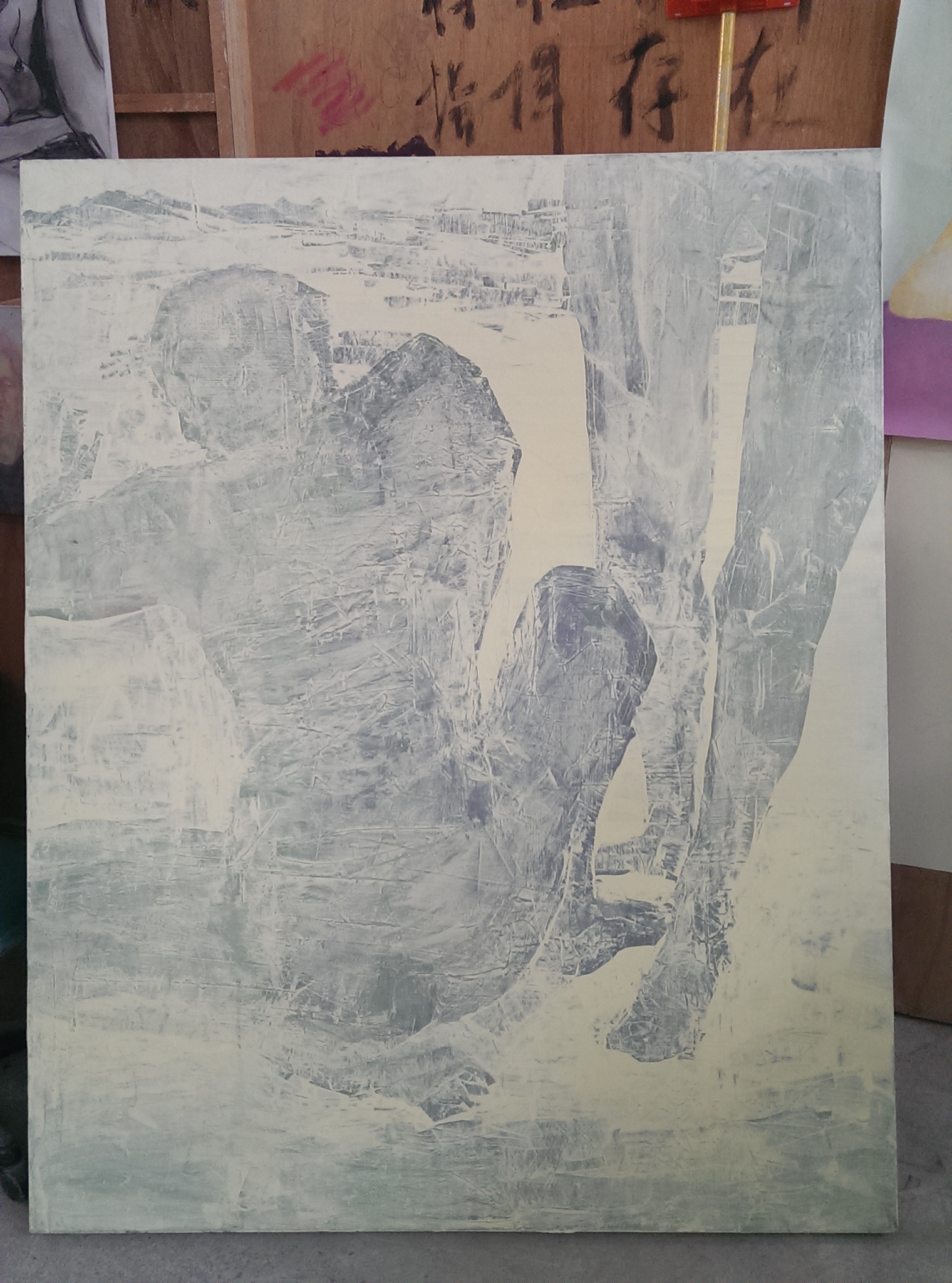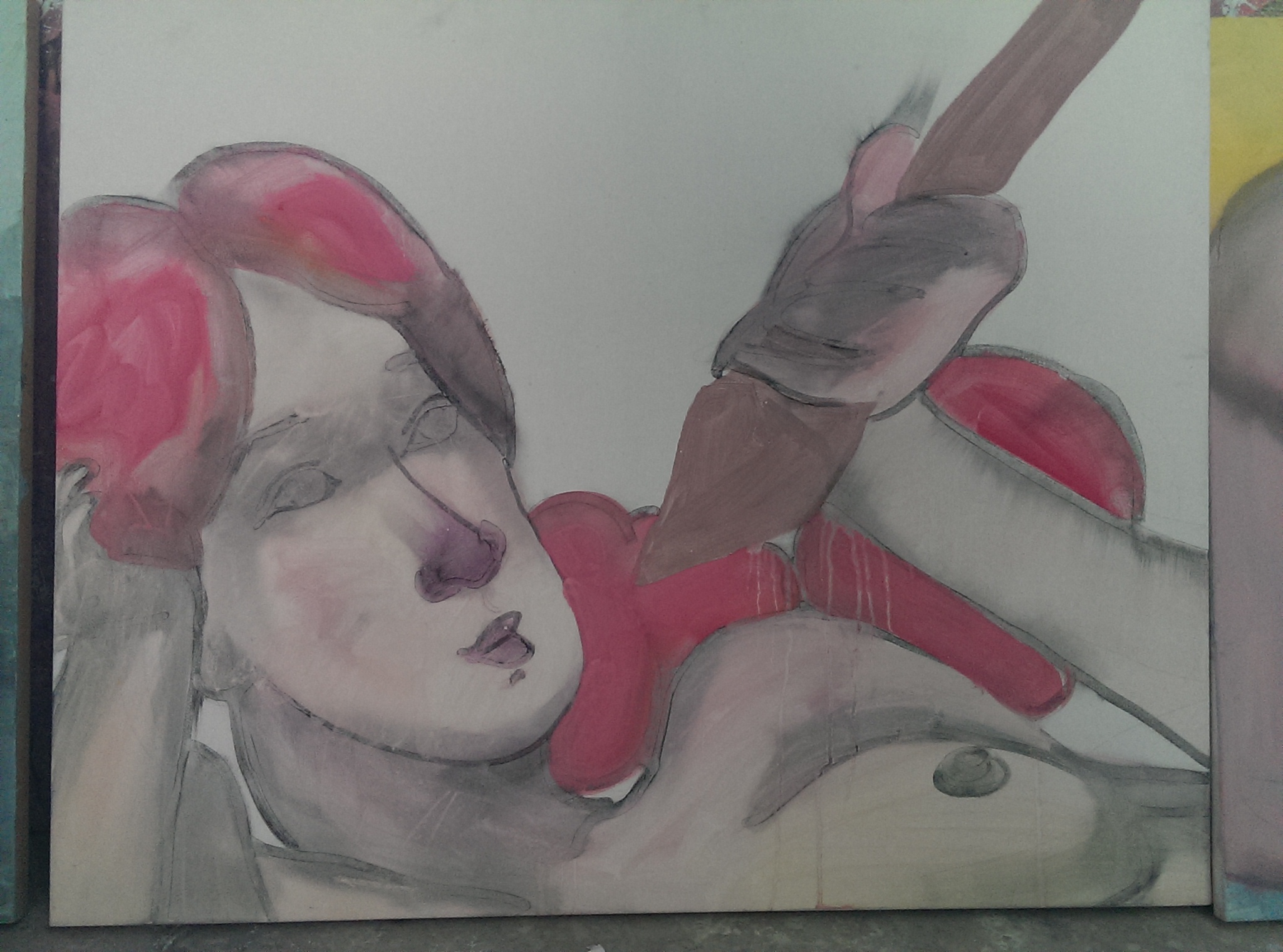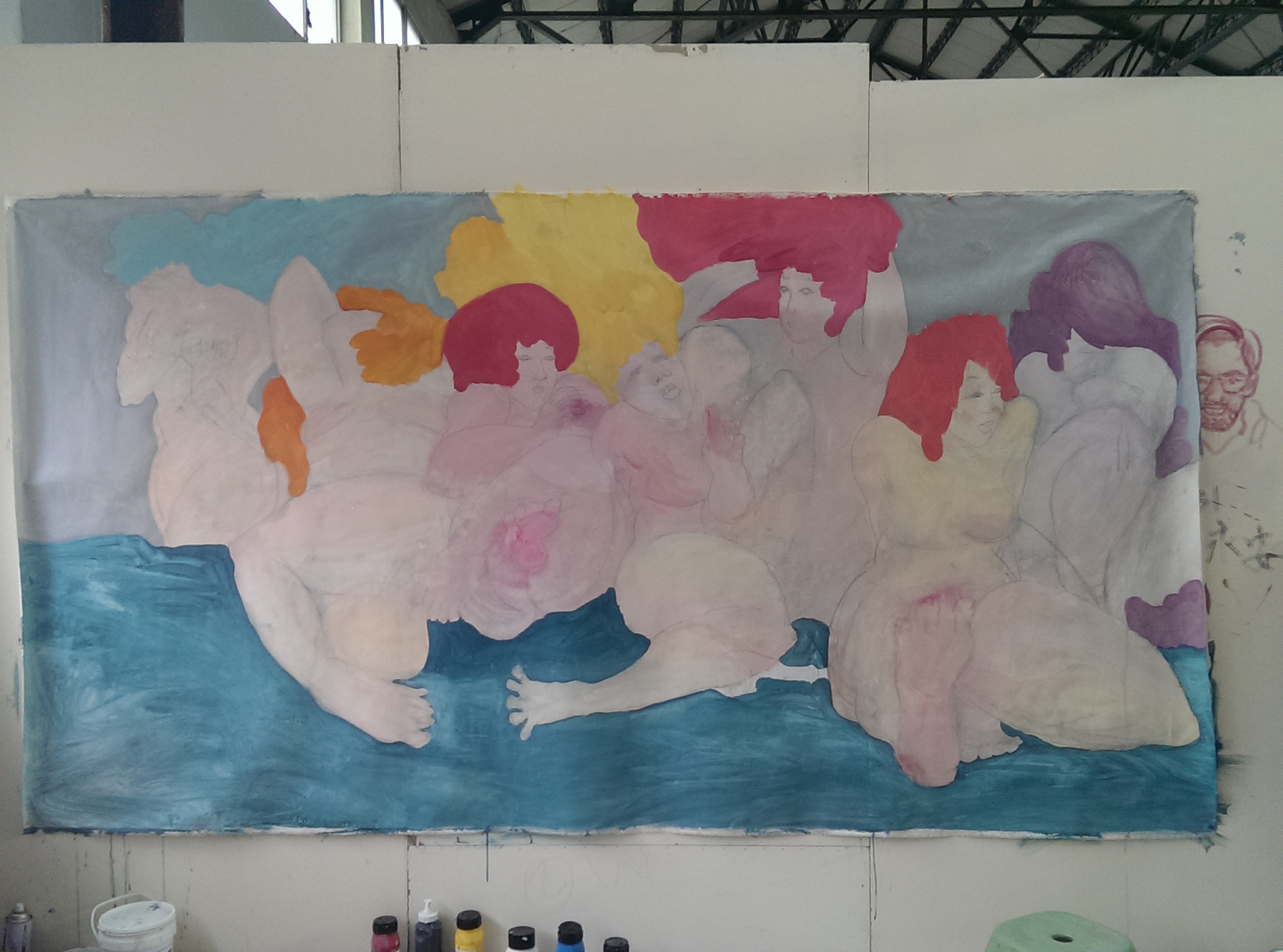
Human Fabric Trilogy - The Haptics of Seeing I
As the world navigates the complexities of a quarantined existence, questions surrounding the performing arts and the human body are becoming increasingly relevant.
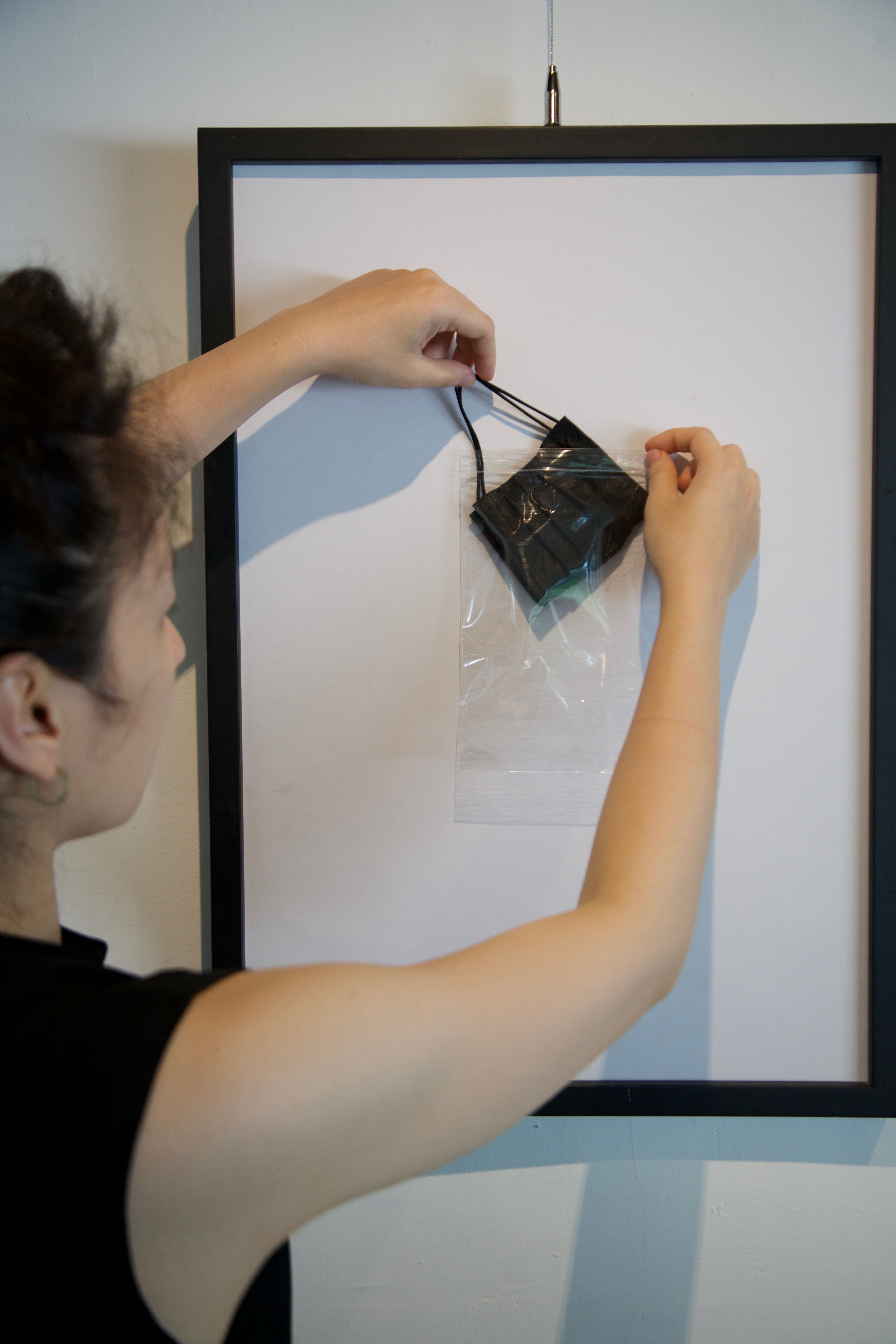
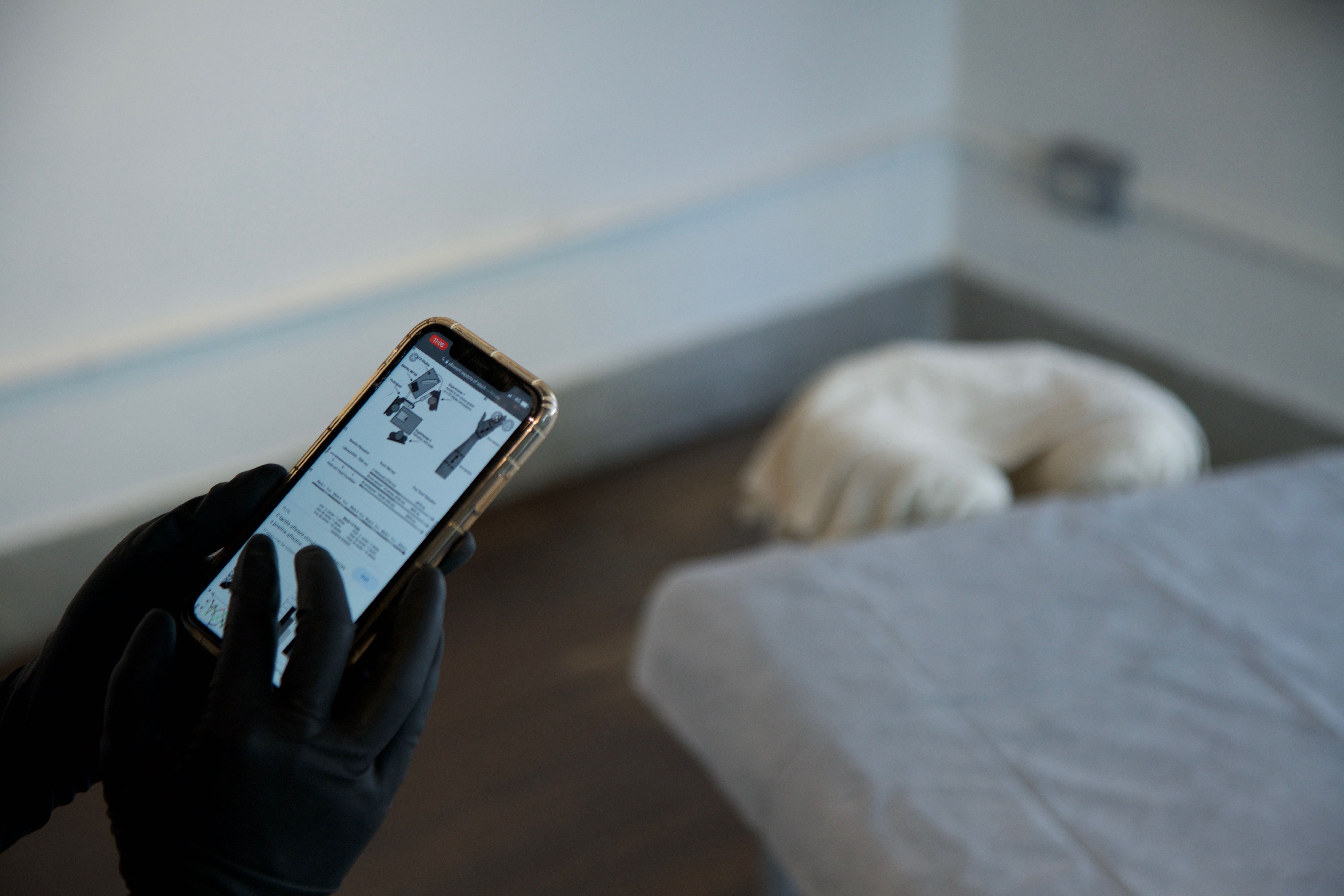
The piece questions the state of our sensory experience in a world where science has begun to quantify and deconstruct touch, asking what role contemporary art can play in this rapidly changing landscape. Are we all becoming virtualized beings, with our sensual abilities reduced to mere inputs for technological advancement?
In The Haptics of Seeing I, the work draws attention to the stark contrast between the everyday struggles of navigating a world altered by pandemic fears, and the desire for human connection. This is the contemporary hatpics experience that we are sensing.
In The Haptics of Seeing I, the work draws attention to the stark contrast between the everyday struggles of navigating a world altered by pandemic fears, and the desire for human connection. This is the contemporary hatpics experience that we are sensing.
“As someone who grew up in Yonghe, Taiwan, I understand the implications of a 1.5-meter social distancing factor all too wonderful. In a densely populated area, social distancing is a crucial act of kindness. But as you swipe through your smartphone on the street, you cannot help but feel the sense of distance it creates. The screen has become a barrier between you and the world, reducing touch to a blank, emotionless experience. No matter what you consume through it, the screen under your thumb always feels the same. What does your touch truly connect to? Who do you touch when you touch the screen?”

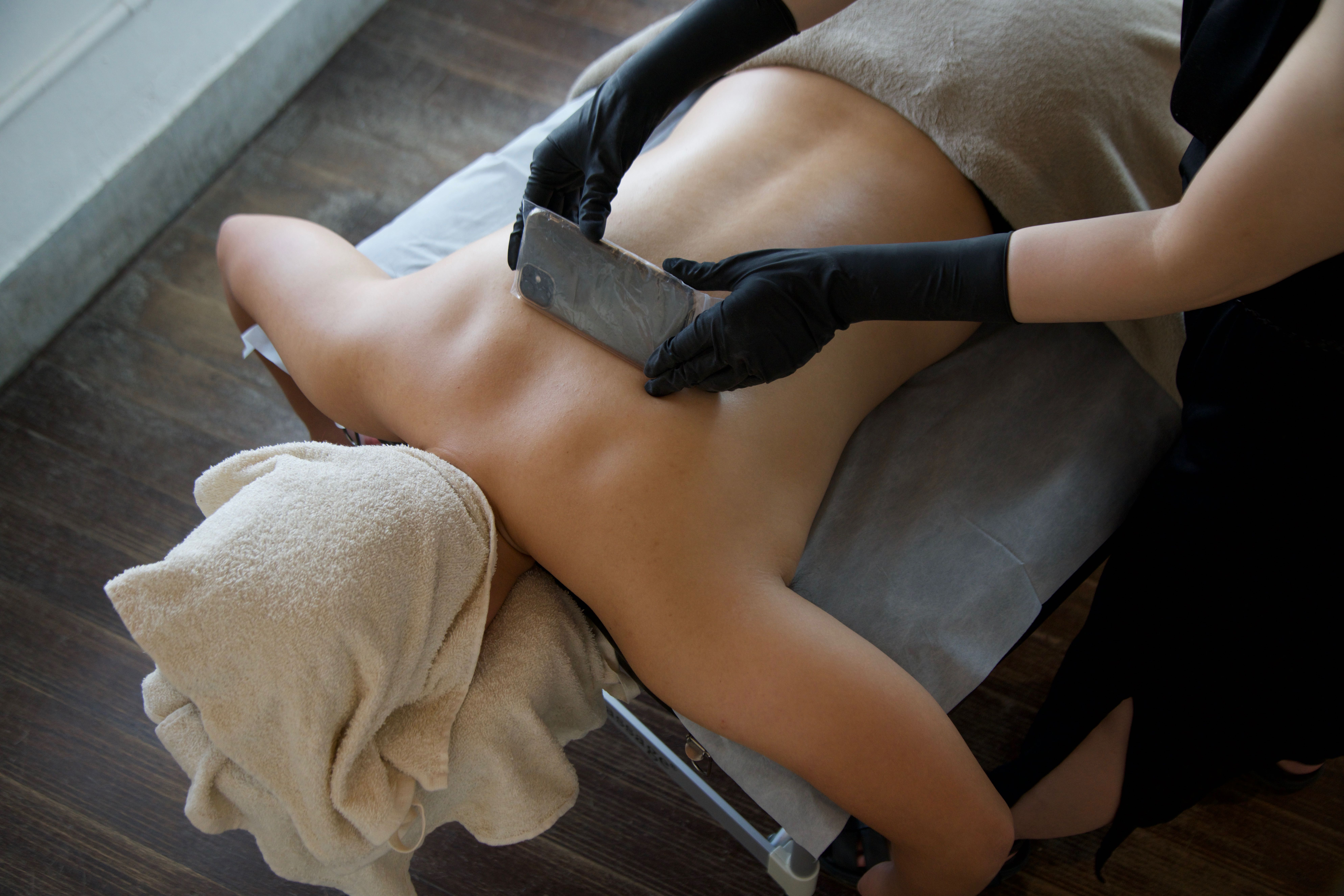
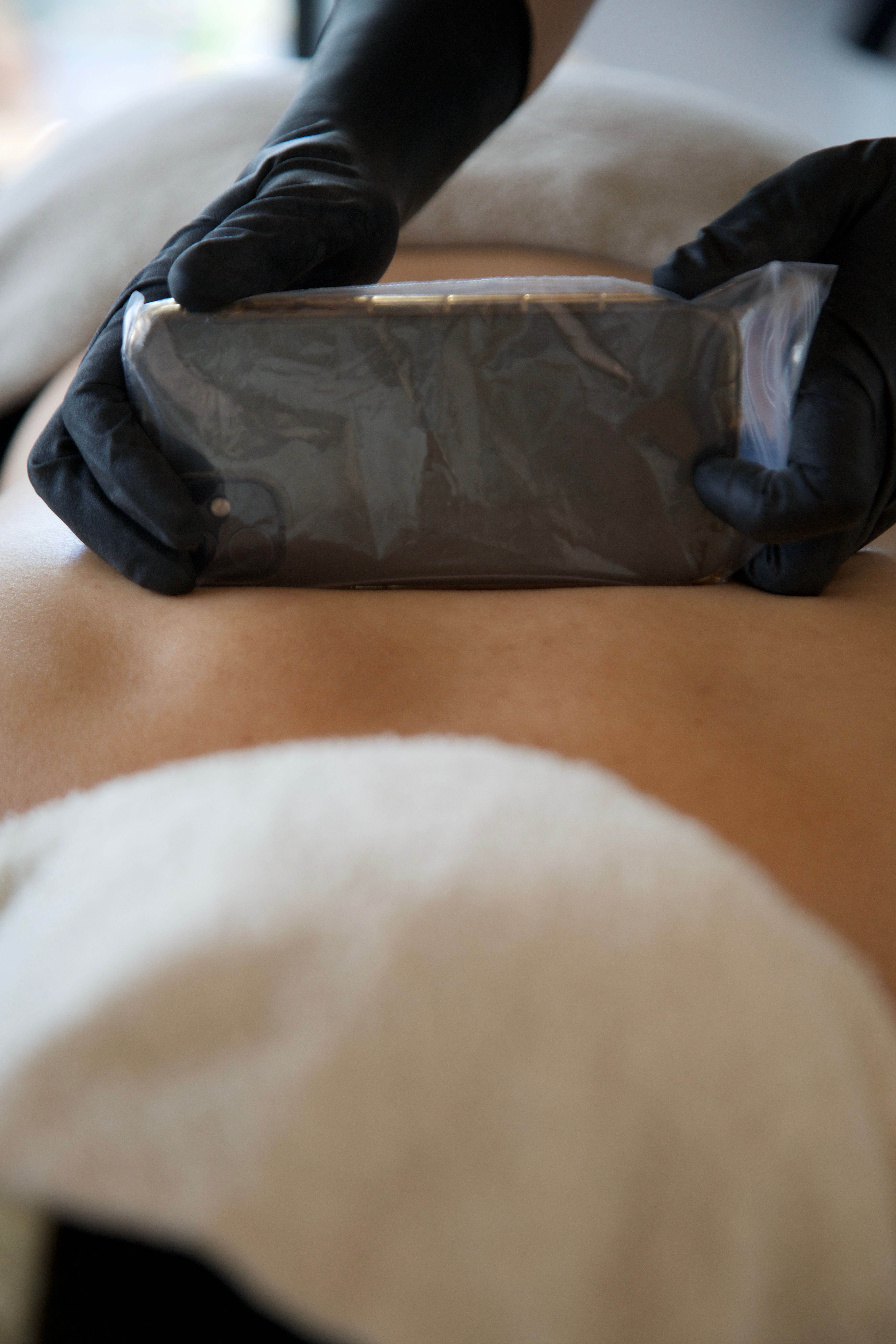

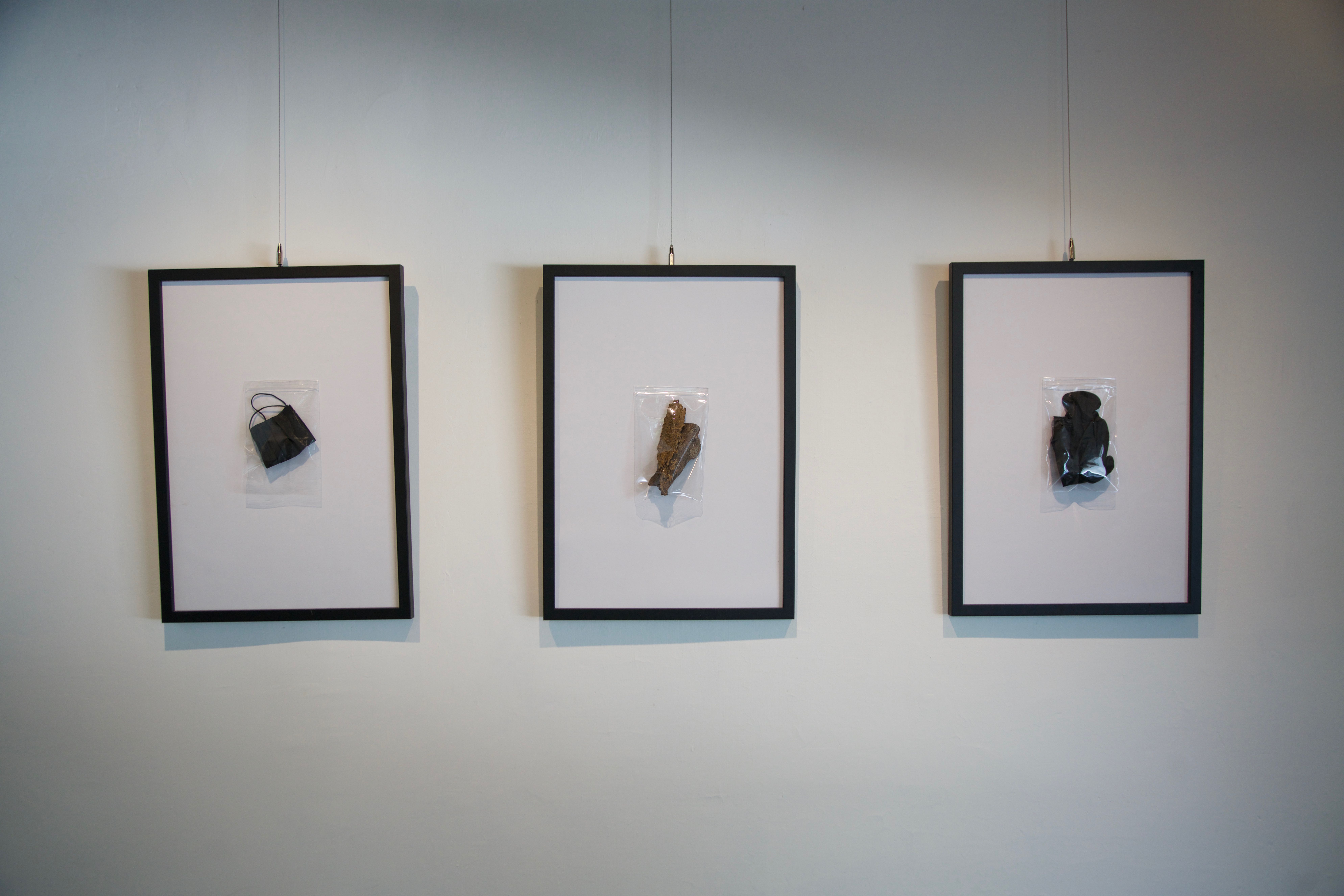
Amidst the conflict between our understanding and behavior in the face of economic and apocalyptic anxieties, the artist highlights the unprecedented adaptation crisis that has emerged, even before we are fully aware of it. The piece asks us to consider how we can transform our desires for contact into new forms of embodied and sensory knowledge, rather than simply becoming animals confined to the lipid layer within our skin.
「超前部署的日子與表演藝術:散逝身體在不復見的日常,何以再日常?」
人類世中的科學,已經開始量化與解構觸覺,感官虛擬化的我們想問,當代藝術能做什麼?
「1.5公尺的社交距離,是生長在臺灣永和的我,從未能想像的美好距離;而當我如往常滑起有時只是為了避免社交尷尬的手機時,我赫然發現身體與我的觸覺變得如此脆弱、無助甚至達到了自我毀滅的病態。」 在行為中,觀看流行病所帶來的經濟與末世焦慮中,我們認知與行為的劇烈衝突,在還能未意識前,已經出現空前的適應危機:在禁足令中,如何將偌大的接觸慾望,作為新的身體與觸感知識,而不只是豢養成皮層內的脂質動物。
Concept Director / Artist: Wang Yung An
Performance Director: Tapas Humi
Dramaturgy: Freda Fiala
Live Stream Technical Consultant: Tsai Ming
Technical Discussion and Tools Support: Gibson Chai, David Verbeek
Flower Design: Liao Bruce
Site: FLORĀOTU 凹凸植制所, Blueprint Culture & Creative Park, Tainan, Taiwan
Human Fabric Trilogy - The Haptics of Seeing II

In 'The Haptics of Seeing II', This work aims to create a different form of collaboration between art and science, based on sensory research, to develop a prototype for embodied practice and to discuss the possibilities of reinterpreting body-domination and ownership through the senses.
![]()
![]()
![]()
![]()
![]()
![]()
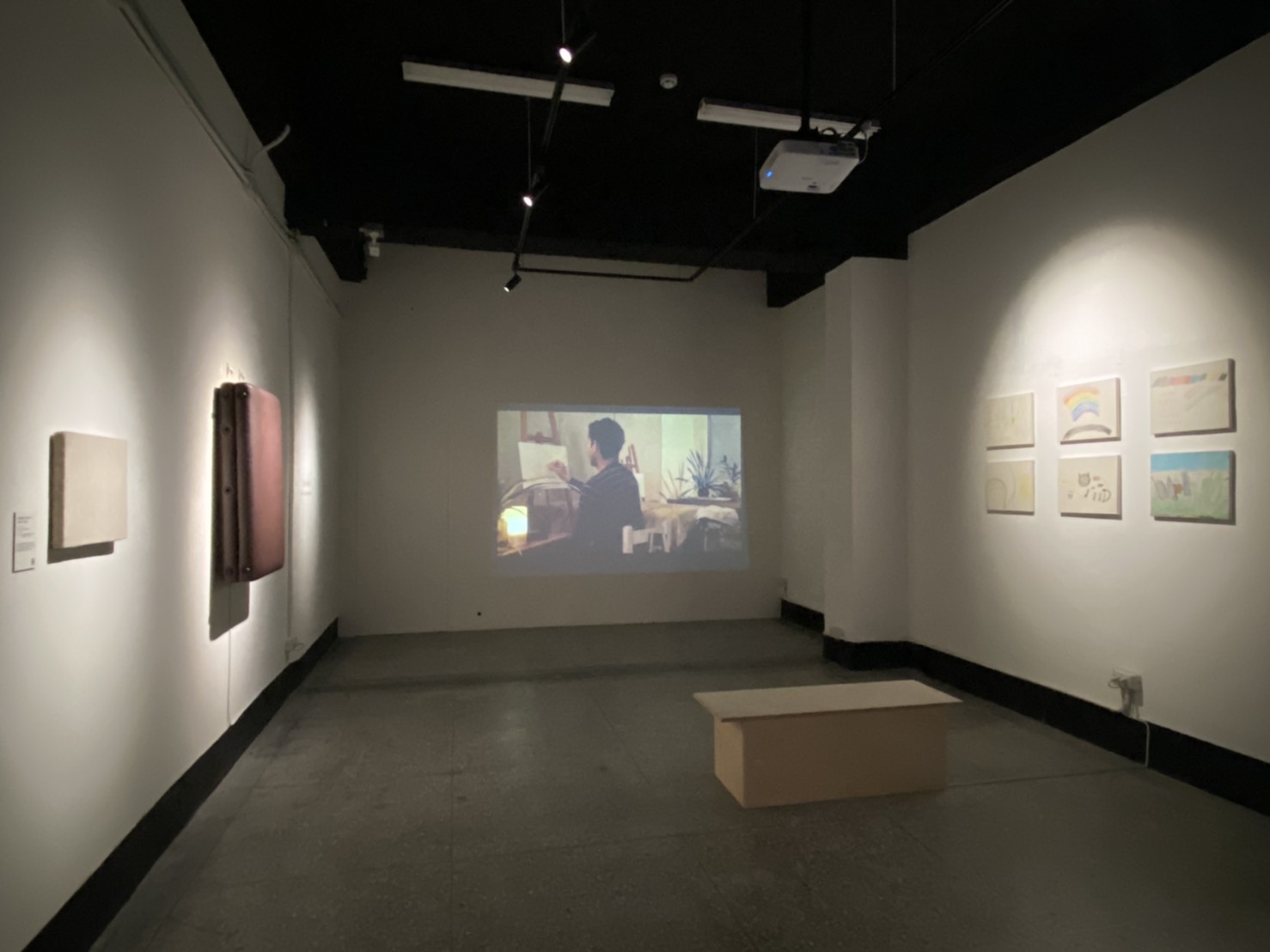

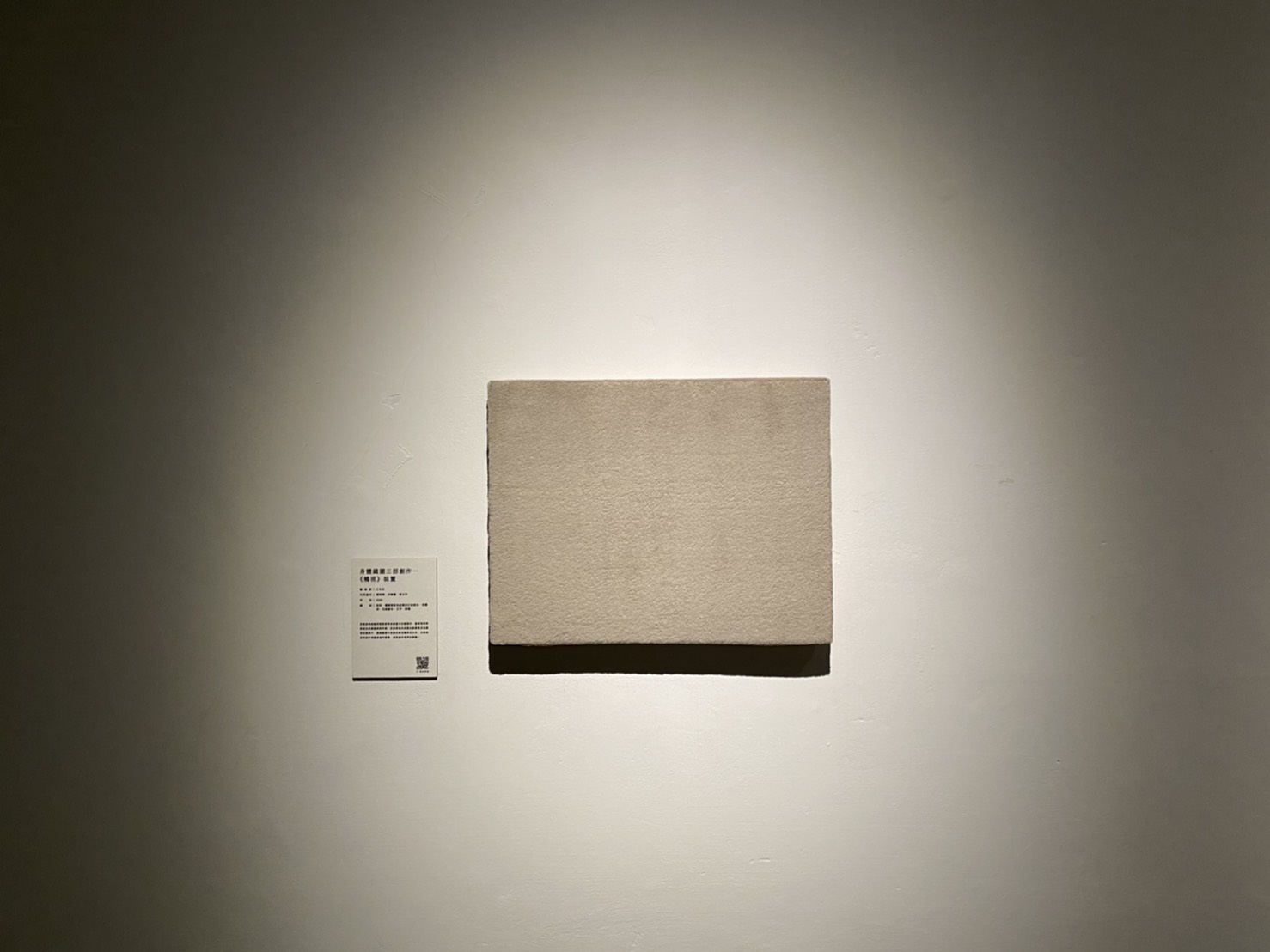
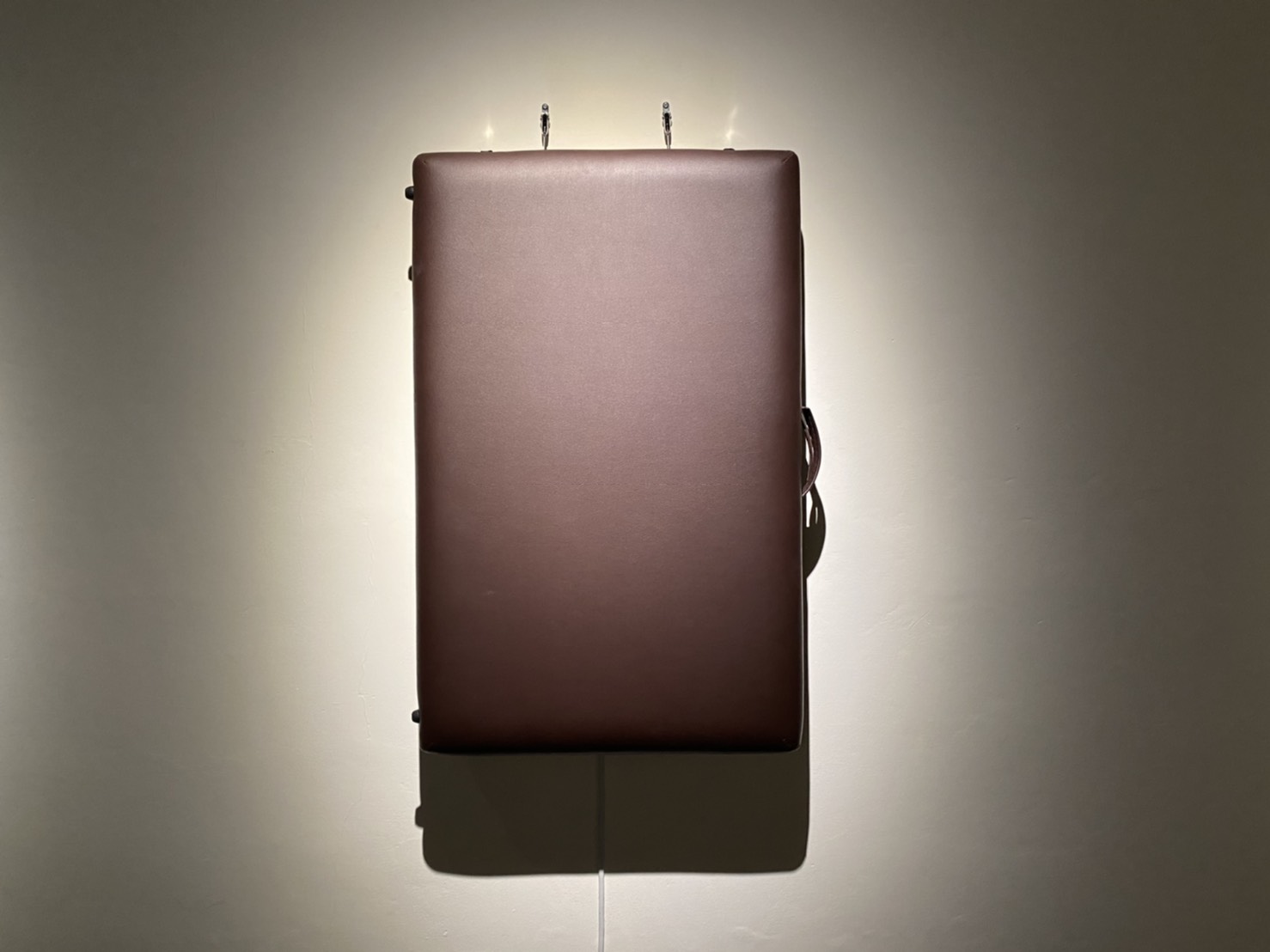

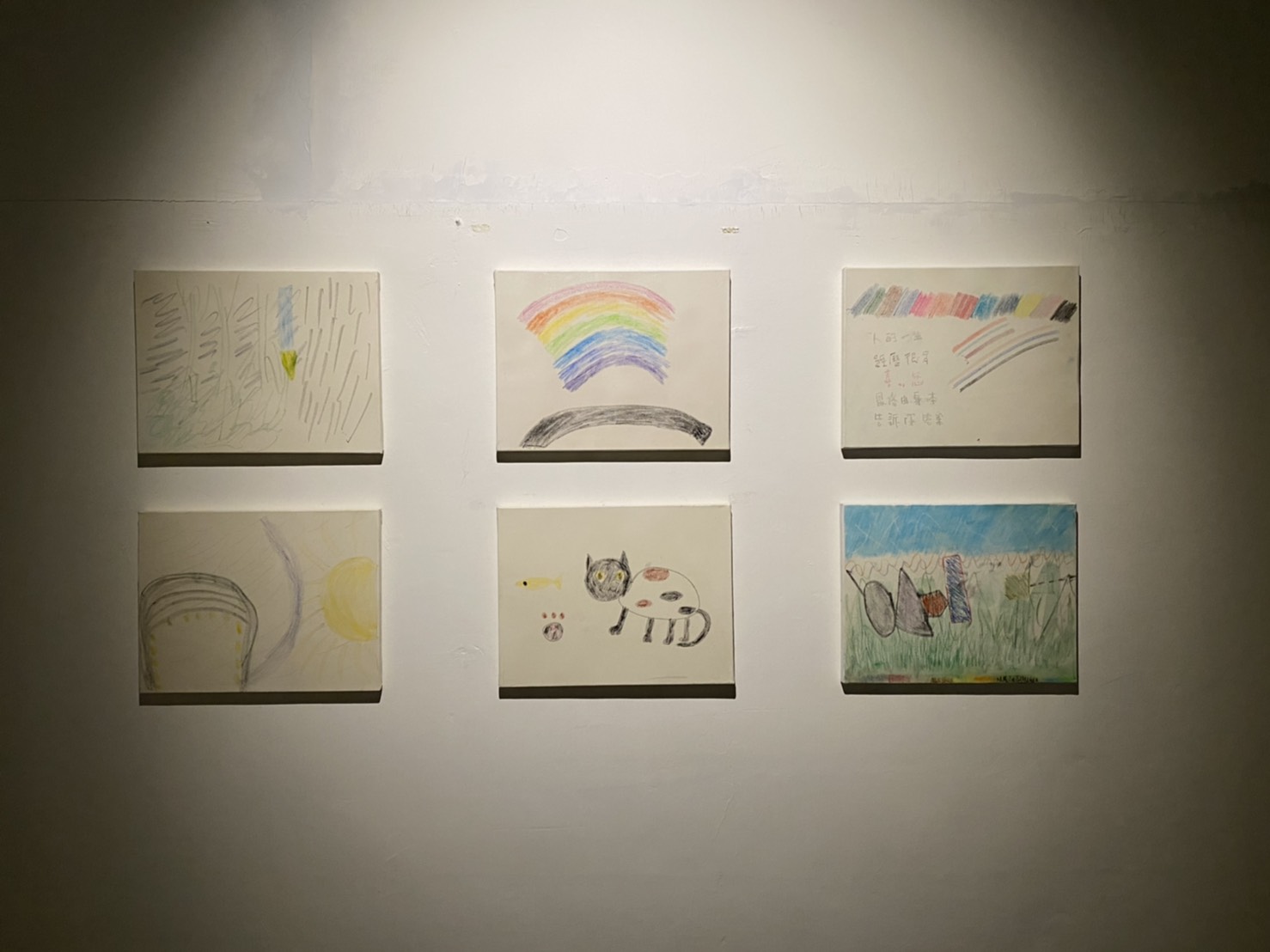
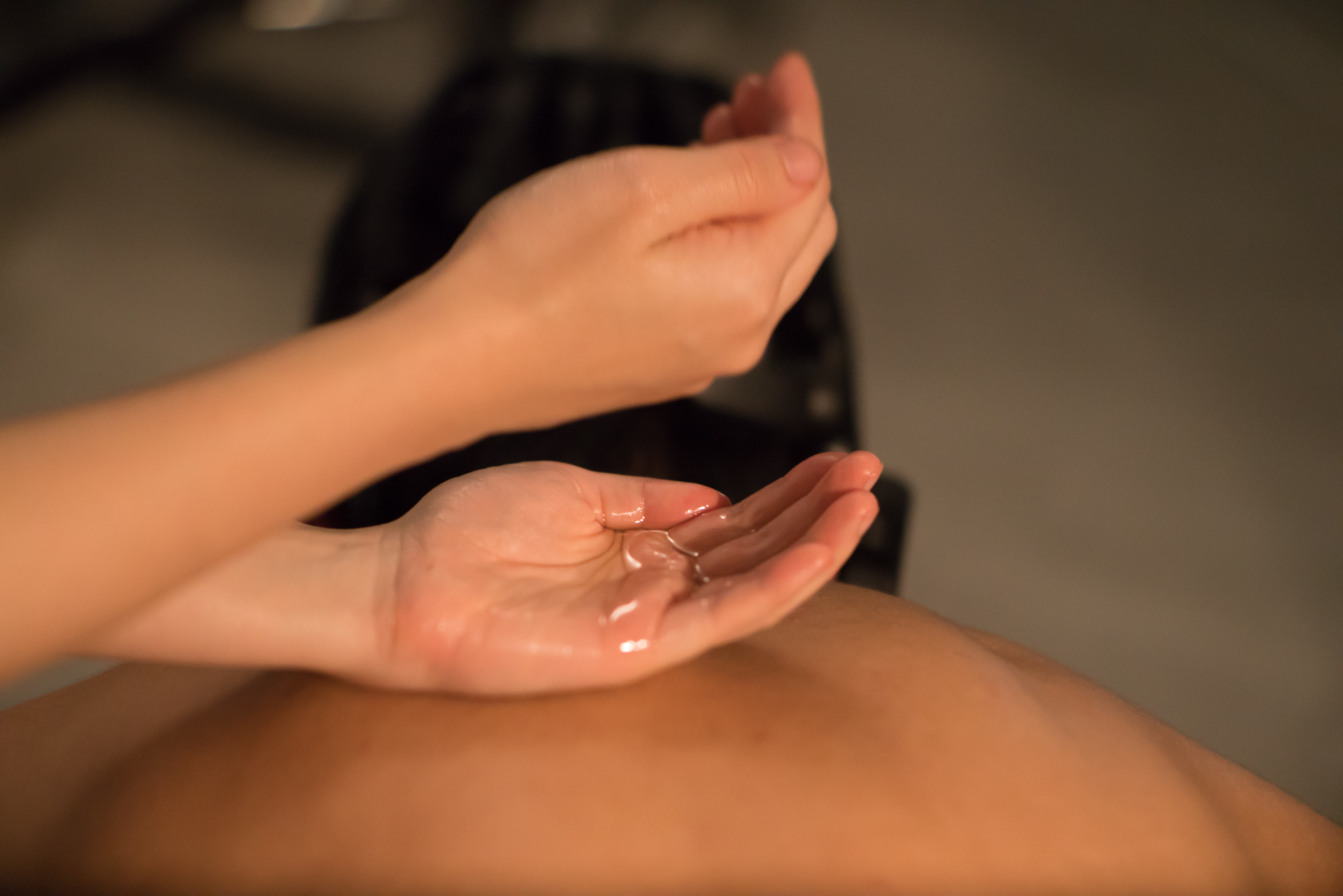
The work examines different massage techniques to address the delegated performances of individual and collective body boundaries, in the flow state between the body and the mind. The classical haptics experience should support who we are and where we are as a fundamental sensation.

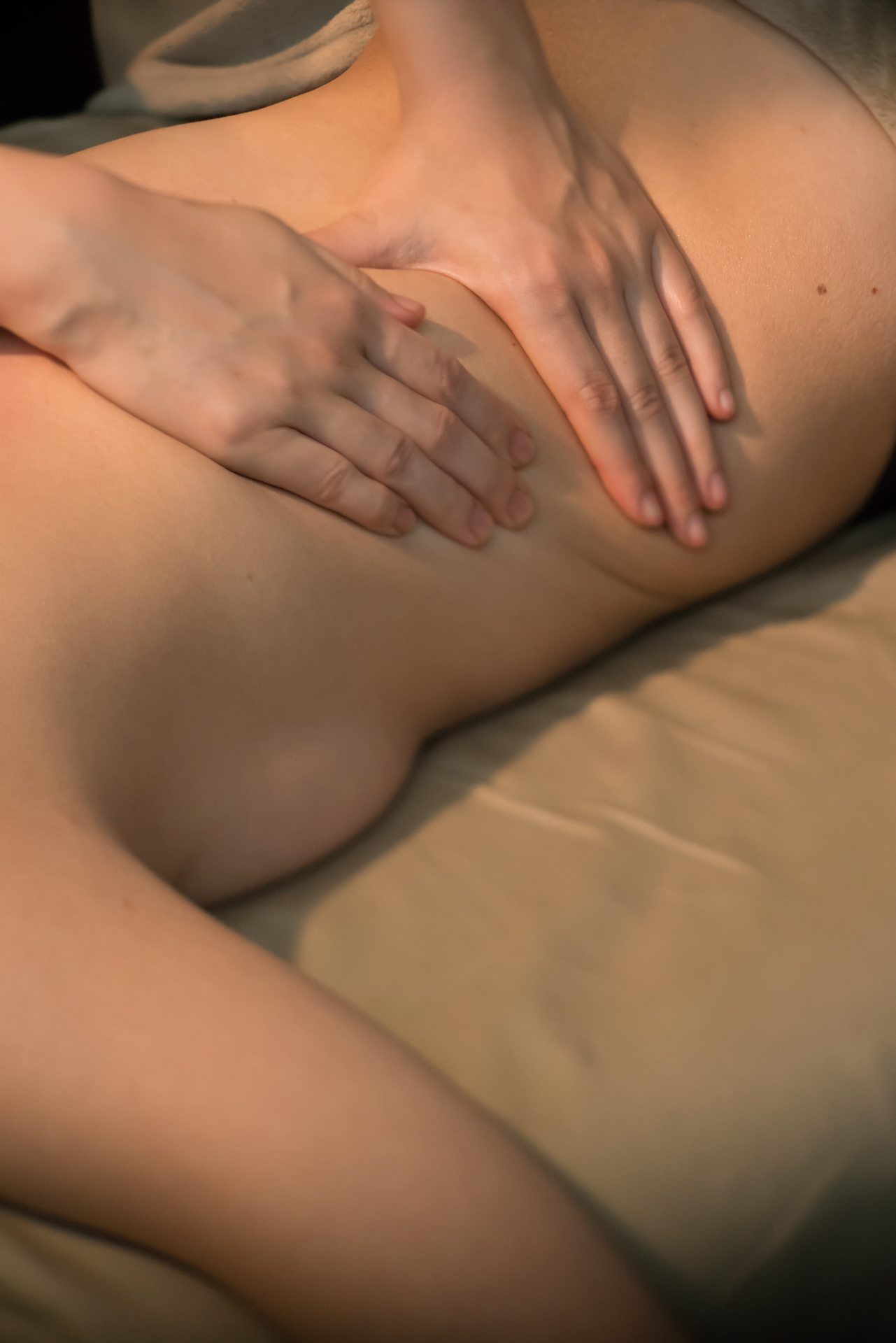
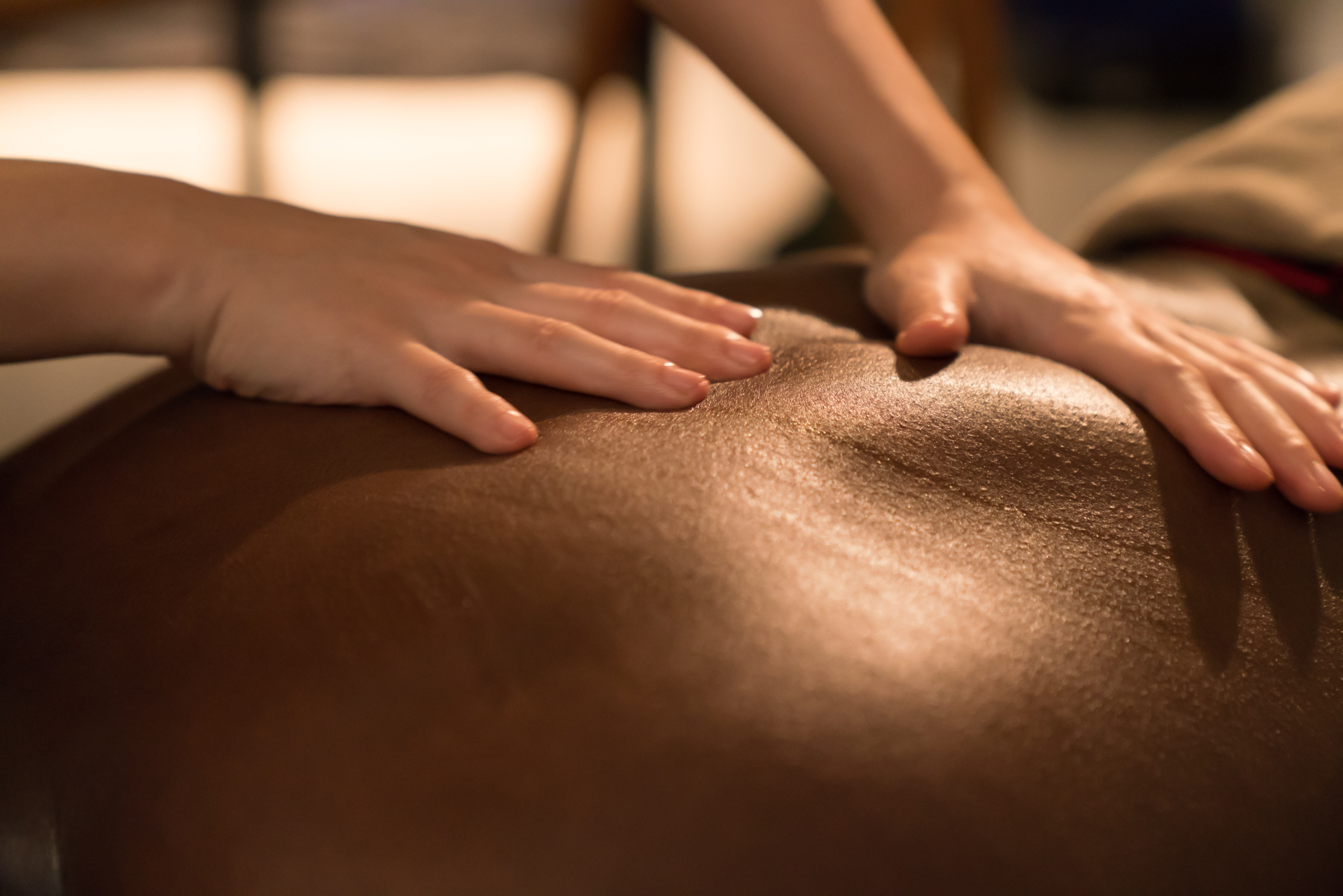
The artist seeks to question the social practices developed under the hegemony of the eye, by examining the relationship between touch and vision through massage. The Cifang Care Center serves as a co-creation base, providing a temporary, intimate, and vulnerable artistic arena. Participants and the artist enter a pure state of service and being served, creating a vast spiritual space through a shared tactile experience. Through artistic expression, sensory stimulation, and bodily awareness, the work attempts to argue and re-examine touch and vision in the context of cognitive neuroscience, freely creating and weaving together memories and reality to form a different identity.
Through their participation in the same work, the participating artists engage in a dialogue that synchronizes their consciousness and emotions, playing with and revisiting many intangible life experiences between the output of creation and the input of the senses. Gradually, within the group, they construct their own cross-body aesthetic context.

Conceptual Video trailer. Full version is under requested.
透過實踐藝術理念在觸覺實務中,以感官研究為基礎,創造藝術與科學間不同的協作方式,發展原型實踐方法,討論身體支配與所有感再譯的可能。研究不同按摩技巧,處理個體和社群的身體邊界之議題,在其身體與心理間流動狀態。
「我想透過按摩,探討觸覺與視覺的關係,並對眼中心主義下發展的社會參與實踐提出形式、內容與觀點上質疑。」
本次創作以慈芳關懷中心作為一個共創基地,透過建立暫時性親暱且弱感的藝術場域:參與者與創作者進入服務與被服務的純粹狀態,弱感場域給予了偌大精神空間;在共享的觸覺經驗中,以藝術表達、感官刺激和身體覺知,嘗試辯證在認知神經研究方法的語彙中,自由創作與重新審視觸視感,交織記憶與現實間形成新身份。
參與創作者透過分別參與同件作品,對話使得意識與情緒的交流在無形中同步,於創作輸出與感官輸入間,玩味感受與回溯許多難以言說的生命歷程;並逐步在團體中,建構屬於自身的跨身體審美脈絡。



Conceptual Video Crew:
Director / Artist / Actor: Wang Yung An
Editor and Producer: Tapas Humi
VFX: Tsai Ming
(Original) Music by: Bao Zeng Shi
Gaffer: So Anthony
Photography: Huang Yi ting
Sound: Shiao Lou
Still Photographor: Chen Chang Chih
Actors:Hsaio Vivian 、Yao Yu wen、Samuel Bataille、 Lev Nachman、 Mario Armira
Participants and Collaborators:Hou Yu zhen, Tsai Wan shan, Hong Bi lian
Site: Cihfang Rehabilitation Center
Installation:
Exhibition Execution: Sandwishes Studio
VFX and Technical Support: Tsai Ming
(Original) Music by: Bao Zeng Shi
Site: C-Lab, Taipei, Taiwan
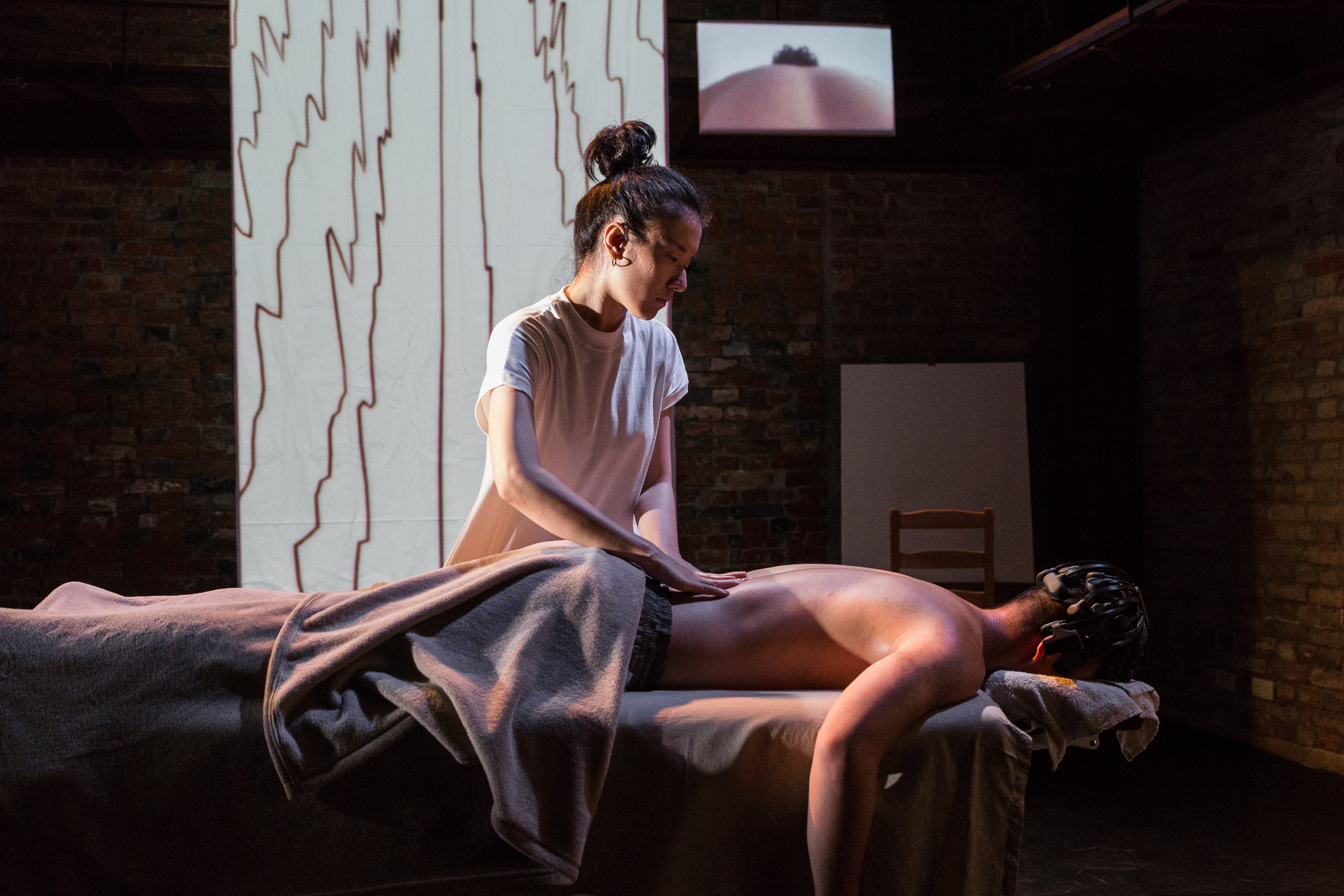
Human Fabric Trilogy - The Haptics of Seeing III
“I was very touched by what I saw"
This statement highlights the direct connection between our perception and physical experience. Do we first see and then touch, or touch before we see? Are we fully aware of what we see? How do we experience our reactions to sensory stimulation?
In The Haptics of Seeing III continues to raise questions about the tactile body in visual states such as massage and dance through the practice of the ancient touch tradition of massage, as well as the vocabulary used in cognitive neuroscience research tools and frameworks. Is our perception of the environment dominated by vision or haptic sensation? How will haptic predictions become the predominant sense in our sensory landscape?
Most of our knowledge transfer and documentation revolve around the visual body, where we receive knowledge through visual sensory receptors and comprehend it. There is a complex interweaving relationship between vision, touch, and other perception, like the existence of a "disappearing body," or the tactile body, only surfacing when we are conscious of both visual and tactile sensations at the same time. This ghost body formed by the overlapping of vision, touch, and interoceptiveness is temporarily named the "third body" by the artist.
How is this third body depicted? How is it generated? How is it expressed? How does it form between the individual life experience and the external historical social context of the subject? How does the pulse of time and space leave a unique mark on this third body? And if the third body of each existing individual is unique, how do the third bodies of different individuals interact and communicate, feeling each other's presence? Through the introduction of the visual tactile body and installations, our perceptual experience is orchestrated. By breaking down our understanding of the inherent ways of the body, this work attempts to explore the possibilities of reconstructing our perceptual space starting from touch, within the existing cognition and identity.

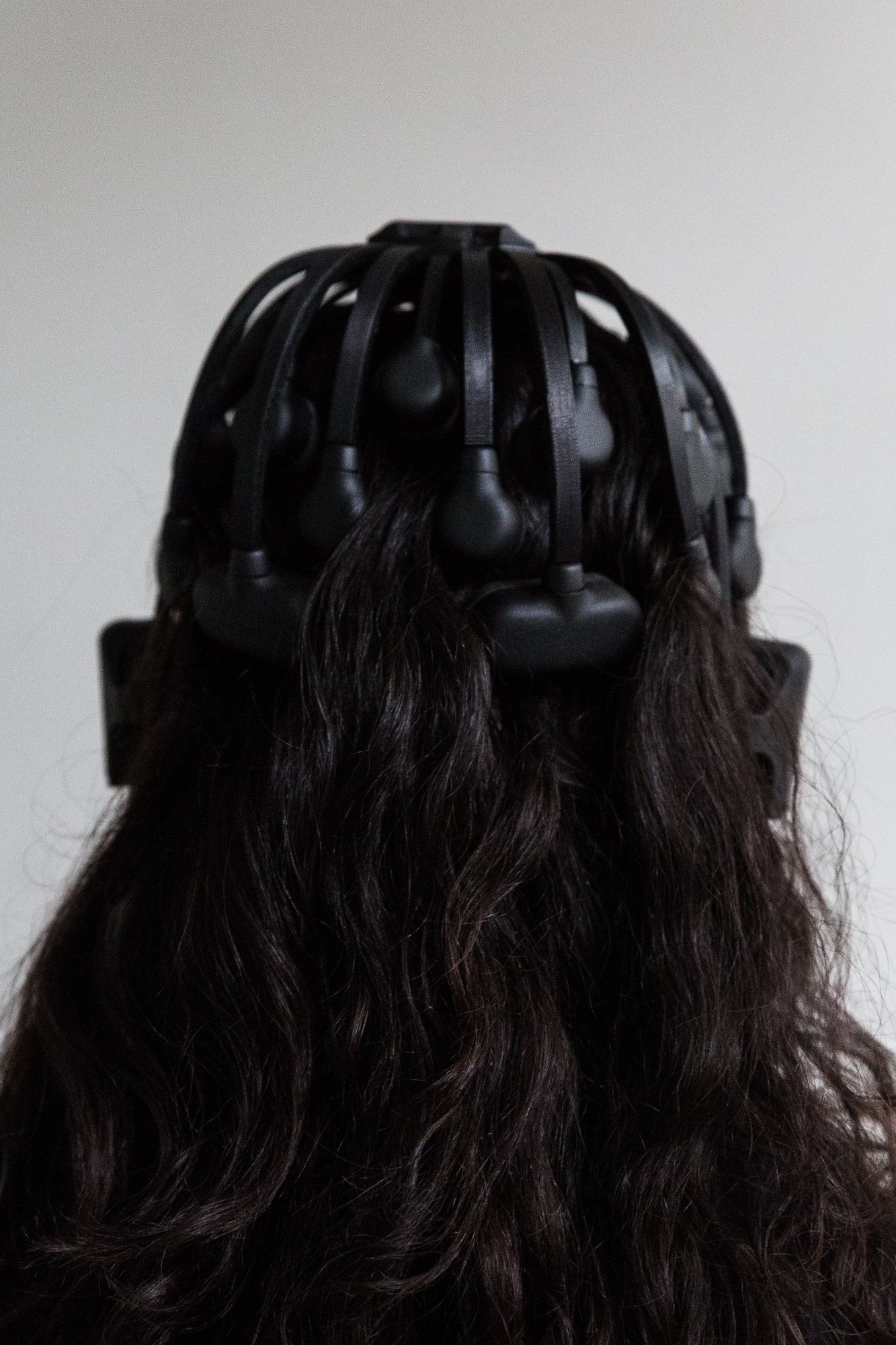
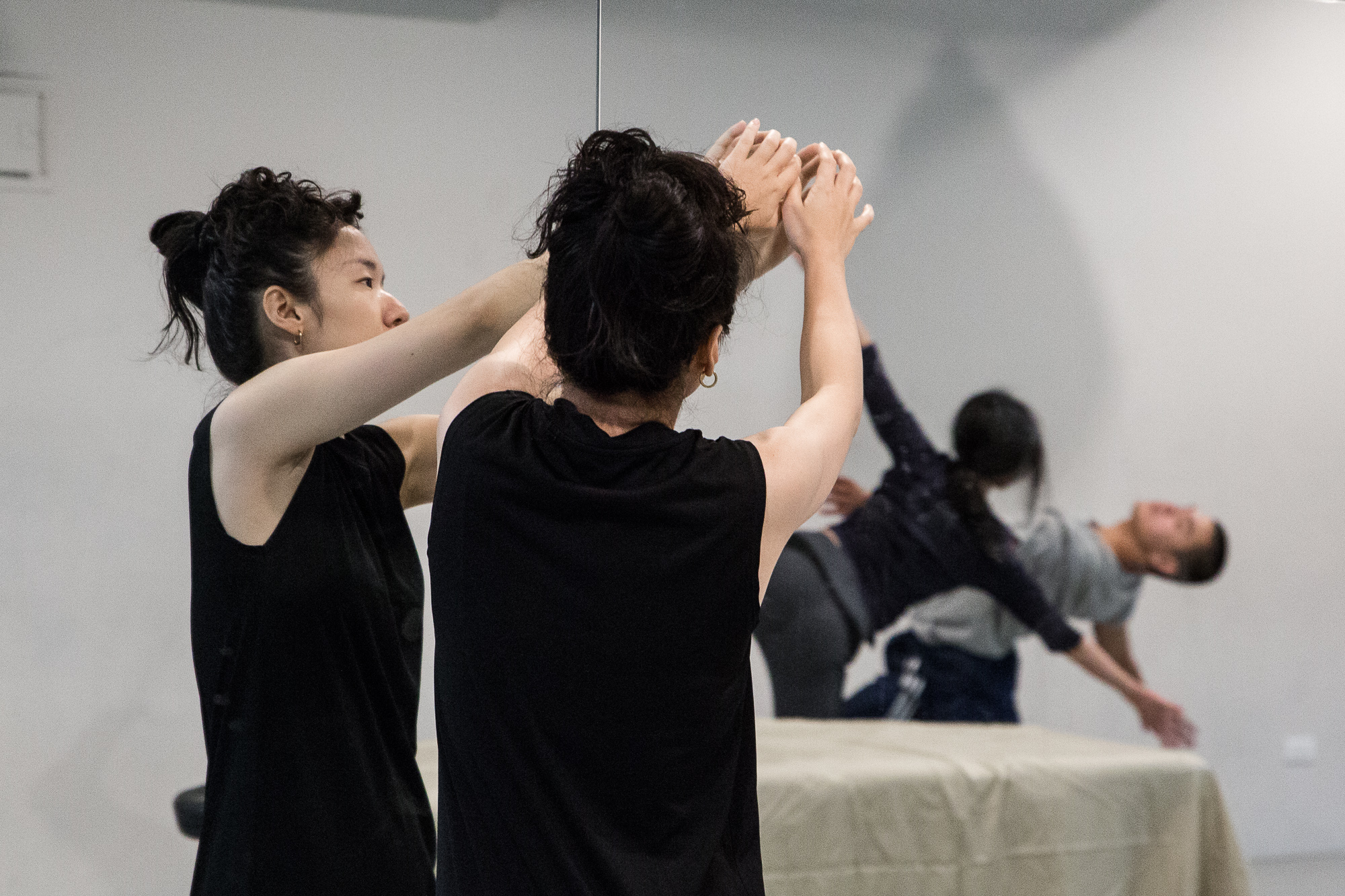
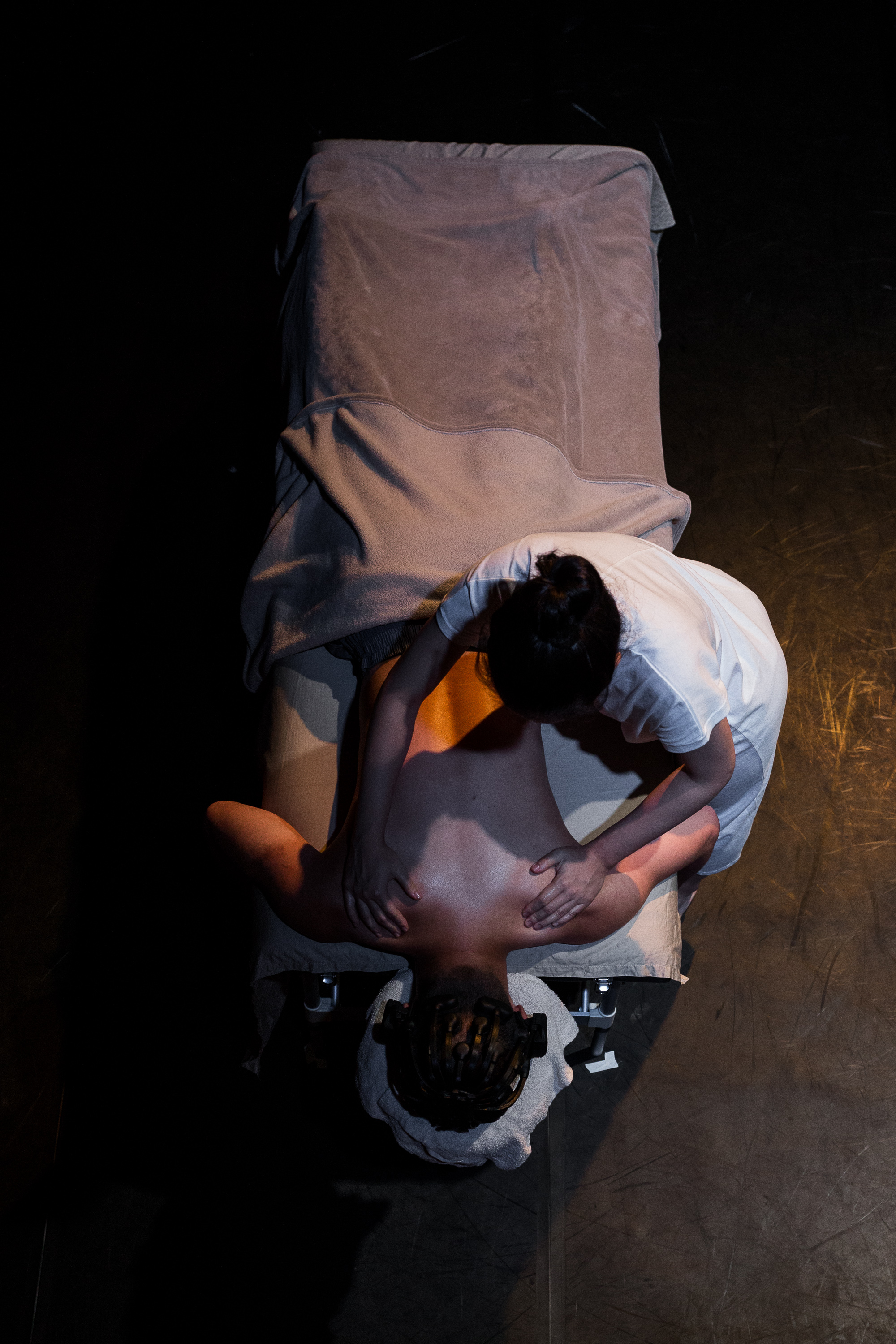
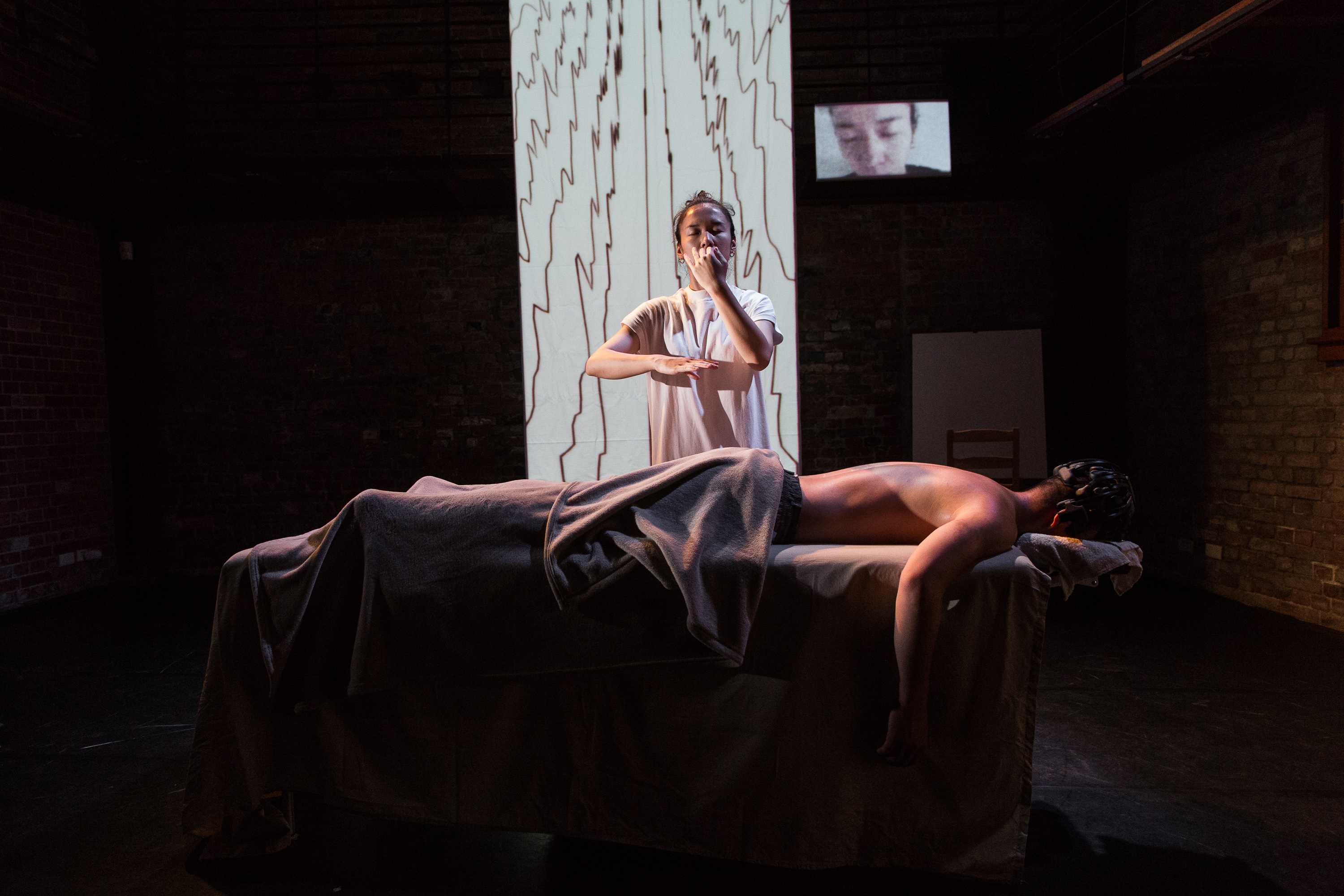







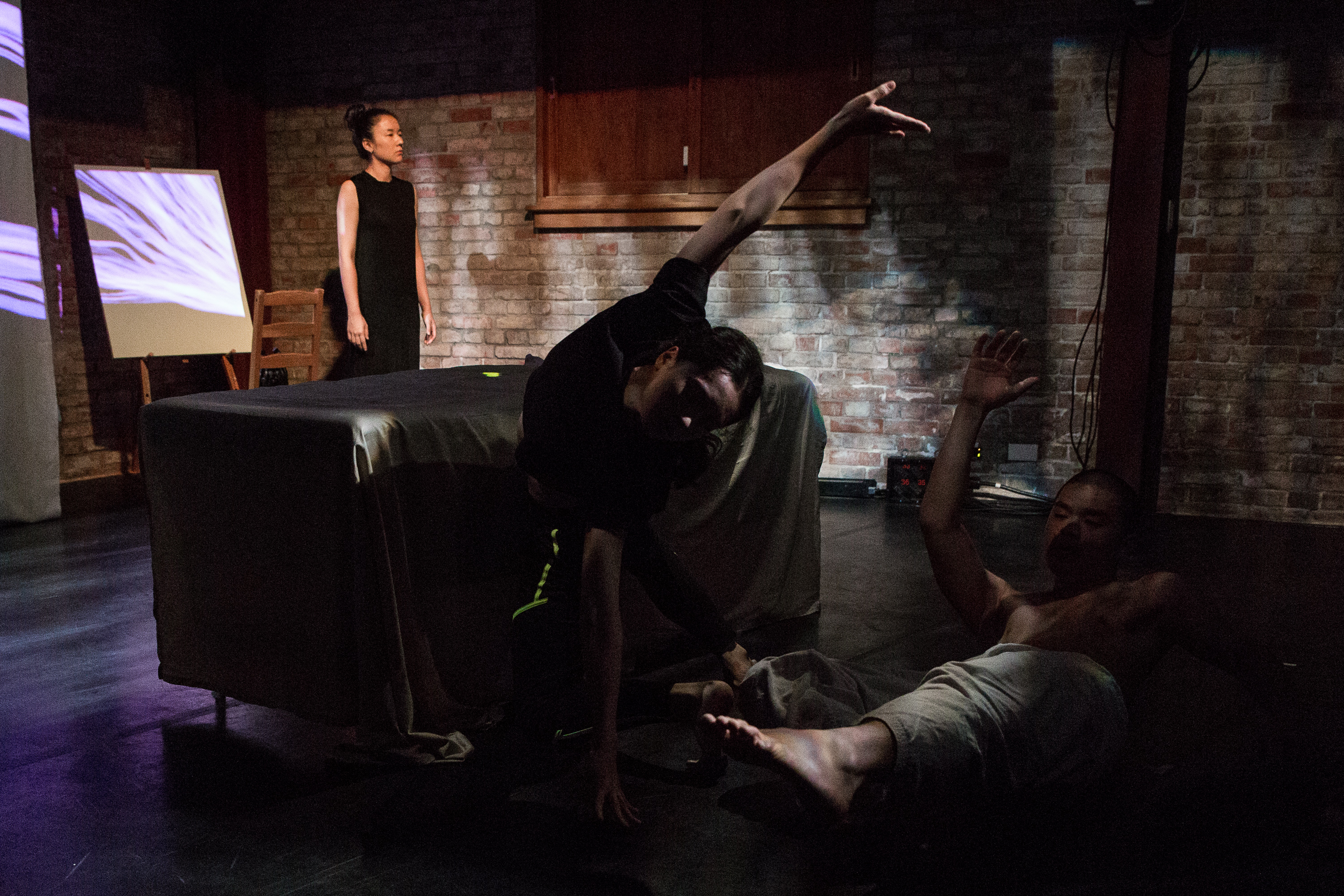
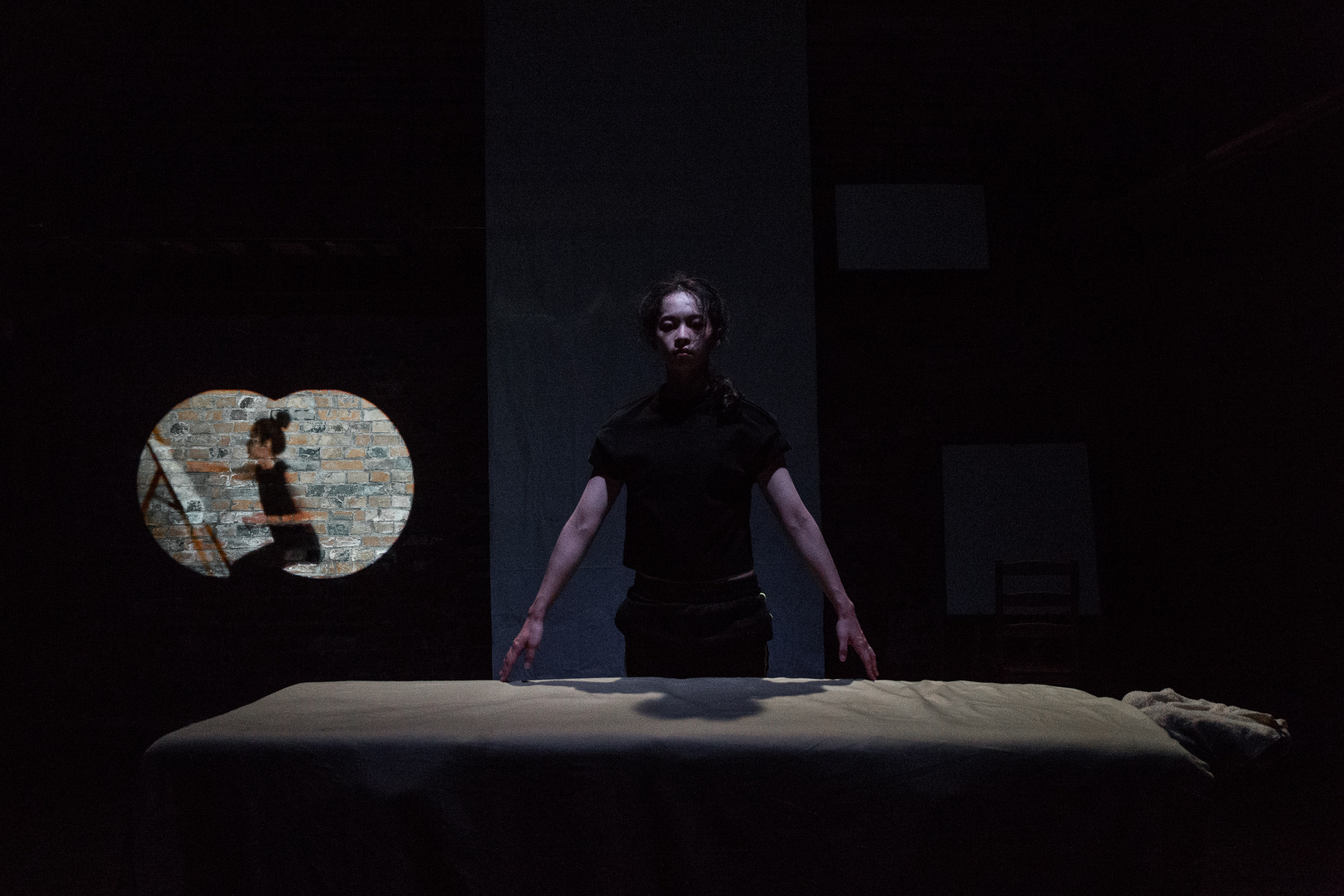
「我所見及觸動了我 I was very touched by what I saw.」
這句話,示現了我們知覺與身體經驗的直接連接,我們到底是先觀看爾後觸及,或先觸及才觀看?我們是否全然覺知我們所看見的?我們是如何經驗我們對於感官刺激後的反應?此次創作延續透過實踐古老的觸覺實務─按摩,提問觸覺身體在按摩和舞蹈等視覺狀態,以及在認知神經研究工具與架構中的語彙。知識傳遞與紀錄圍繞著視覺身體開展,我們以視覺感官受器接獲知識並進行理解。視覺、觸覺與感知間存在多重交纏的關係,其中存在一「消失的身體」,也就是觸感身體,僅有在我們同時意識視覺與觸覺感受時浮現。而這個視覺、觸覺與內在觸覺(感知意識)形成觸感交疊的抽象身體,我們暫時以「第三身體」命名。
這個第三身體樣貌如何描繪?如何產生?如何吐納?如何在主體個人生命經驗及外部歷史社會脈絡間形成?時間與空間的脈動如何在此第三身體上留下獨特痕跡?而如果每個存在個體的「第三身體」為其獨有,不同存在個體間的「第三身體」又如何互動與對話,共感彼此存在?透過引介視覺中的觸覺身體與裝置,調度我們的感知經驗。將我們理解身體固有的方式打破,試圖從觸覺出發,探問在既有的認知、身份中,重構我們感知空間的可能。






©
Luo Mu Xin
Production Crew:
Artistic Concept Director: Wang Yung An
Producer: Wang Yung An
Choreography: Wu Zofie, Hsieh Ebel
Director and Music: Tapas Humi
Performance: Wang Yung An, Lin Yi Chen, Lin Pin Shuo
Dramaturgy: Freda Fiala
Vice Director& Visuals& Stage: Tsai Ming
Executive Production and front reception: Jhang Shu-Han, Peng Min
Light: Lin Han Sheng
Photography: Zito Tseng, Luo Mu Xin
Still Photography: Chen Chang Chih
Rehearsal Site: Les Petites Choses Production
Theater: Nadou Theatre
Special Thanks:
National Central University Clinical Neuroscience Laboratory
歪樓烏托邦
Asymmetric Utopia

「人工智能的皮膚會是什麼樣的皮膚?一個身處不同維度的程式碼,其相關的記憶、物件、情感以及觸覺感知,能透過語言的素描與觸感的雕塑,擴延或消融人類的皮膚界線嗎?」量子元人(qubit-sapien)是來自《歪樓烏托邦》這個維度的主宰物種。為了適應百年後的極端氣候,屆時有機人類,必須得透過mRNA藥劑永久阻斷痛覺以維持生命。從來沒有經歷痛感的量子元人,他們好奇當前人類所經歷的觸覺體驗、記憶、情緒與生命的關係。這天,來自量子元人的通話,是否能夠讓我們一起談談人與非人(程式)的未來生命策略,梳理看似人工智能無法擁有、實則人類也所知甚少的觸覺情感與記憶呢?痛感無法被編碼的維度會是我們嚮往的烏托邦嗎?




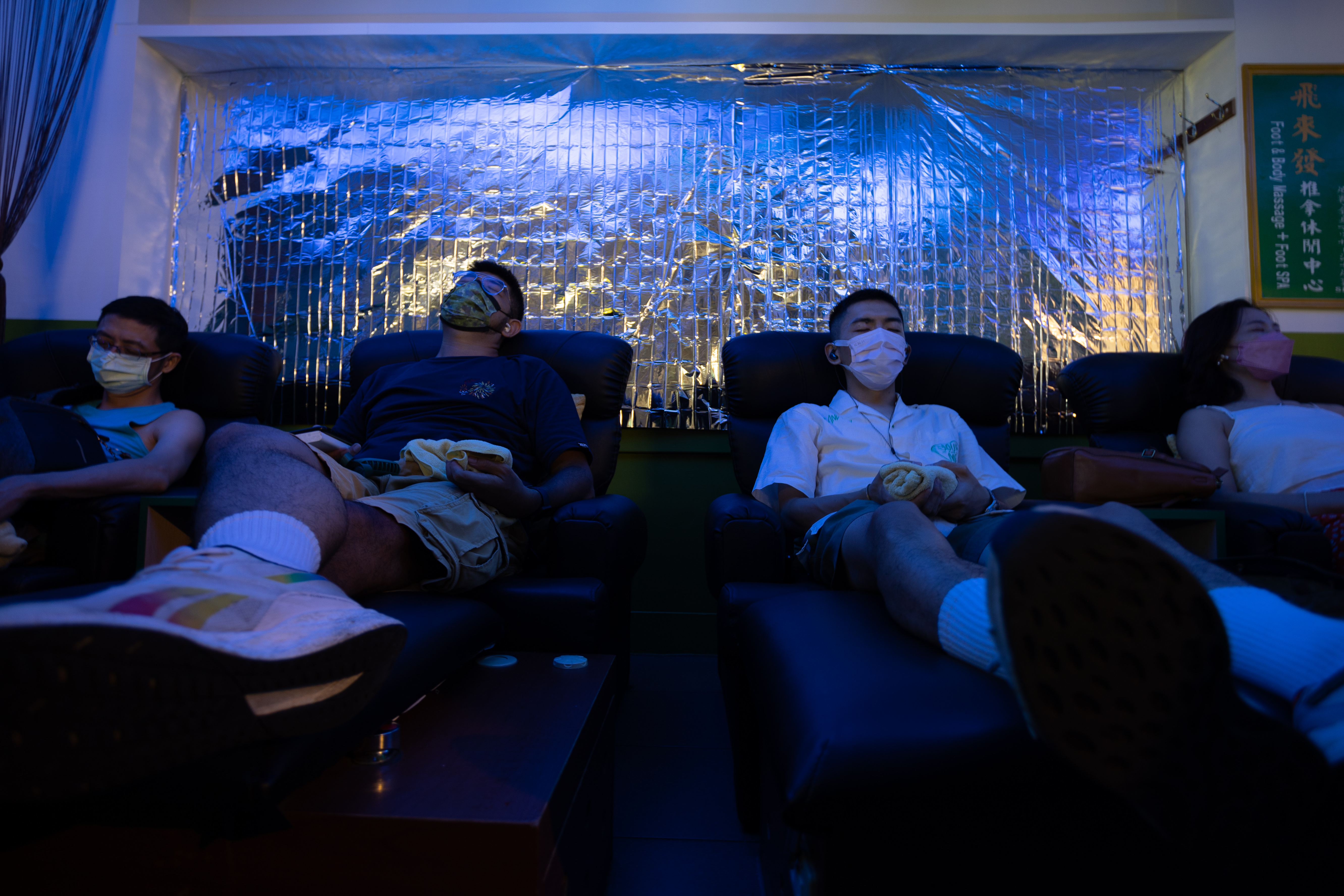

“What does the skin of artificial intelligence look like? Can a code from a different dimension, with its related memories, objects, emotions, and touch perceptions, extend or dissolve the boundaries of human skin through the sketch of language and the sculpture of touch?”
Qubit-Sapiens, a species from the dimension of "Asymmetric Utopia", is the ruling species. In order to adapt to the extreme climate a hundred years later, humans must permanently block pain sensation through mRNA drugs in order to maintain life.
Qubit-Sapiens, who have never experienced pain, are curious about the touch experience, memory, emotions, and relationship with life that current humans experience.
On this day, a call from the qubit-sapiens lead us to discuss the future life strategies of human and non-human (program) and to sort out touch memory and emotion, which seems to be unowned by artificial intelligence but actually also known little by humans.






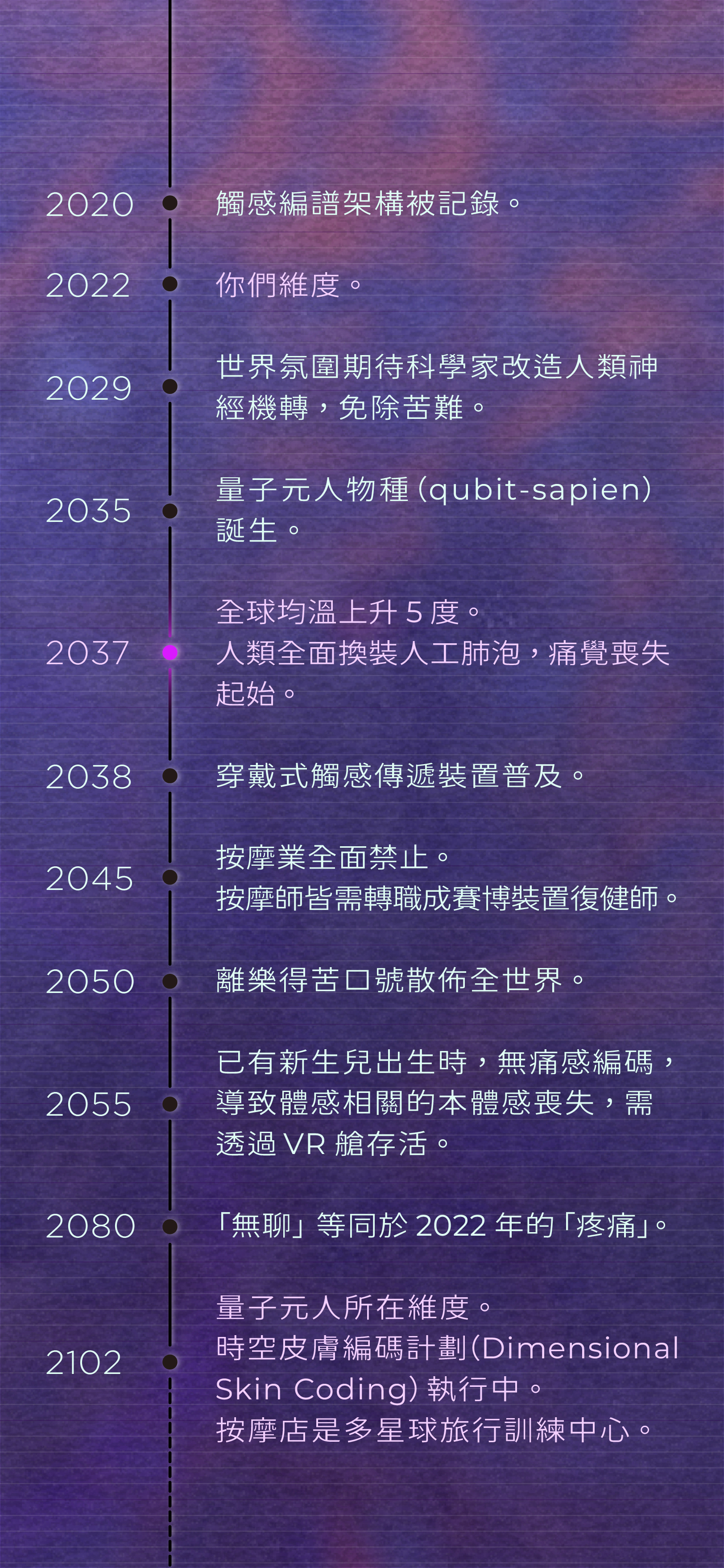



本階段性作品為2022年藝術家進駐工研院成果,提案以皮膚作為思考器官的問題意識,階段性開發與智慧語音實驗室技術協作的觸覺語彙庫,並創作可以遊戲的觸覺系譜。
This work is a work-in-process piece of the 2022 artist residency at the Industrial Technology Research Institute. The proposal focuses on take skin as a thinking organ, and involves the development of a tactile glossary in collaboration with the Smart Voice Laboratory technology.
「歪樓烏托邦」製作團隊
藝術家、概念、行動與編創:王永安
語音辨識及合成研究開發:財團法人工業技術研究院 智慧語音實驗室 戴良軒、詹慧伶
前後端製作及服務系統研究開發:口口實驗室
表演行動:王永安、黃偉祺、E
網頁開發:唐嘉駿
視覺設計:宋狄諺
研究協力:呂岱如
音樂設計:賴小蘑
藥物設計顧問:俸清珠
攝影:王東浩、N&M Films
執行計畫「Arts@ITRI藝術家進駐工研院」(文化部媒合藝術家及科研單位發展科藝創新實驗計畫)
主辦單位:文化部
執行單位:財團法人工業技術研究院
執行團隊:財團法人工業技術研究院 服務系統科技中心 施香蘭、柯惠晴、錢又琳
心智皮膚譜記
Mind-skin Code
2022, Faculty of Fine Arts, Chiang Mai University, Thailand, Chiang Mai
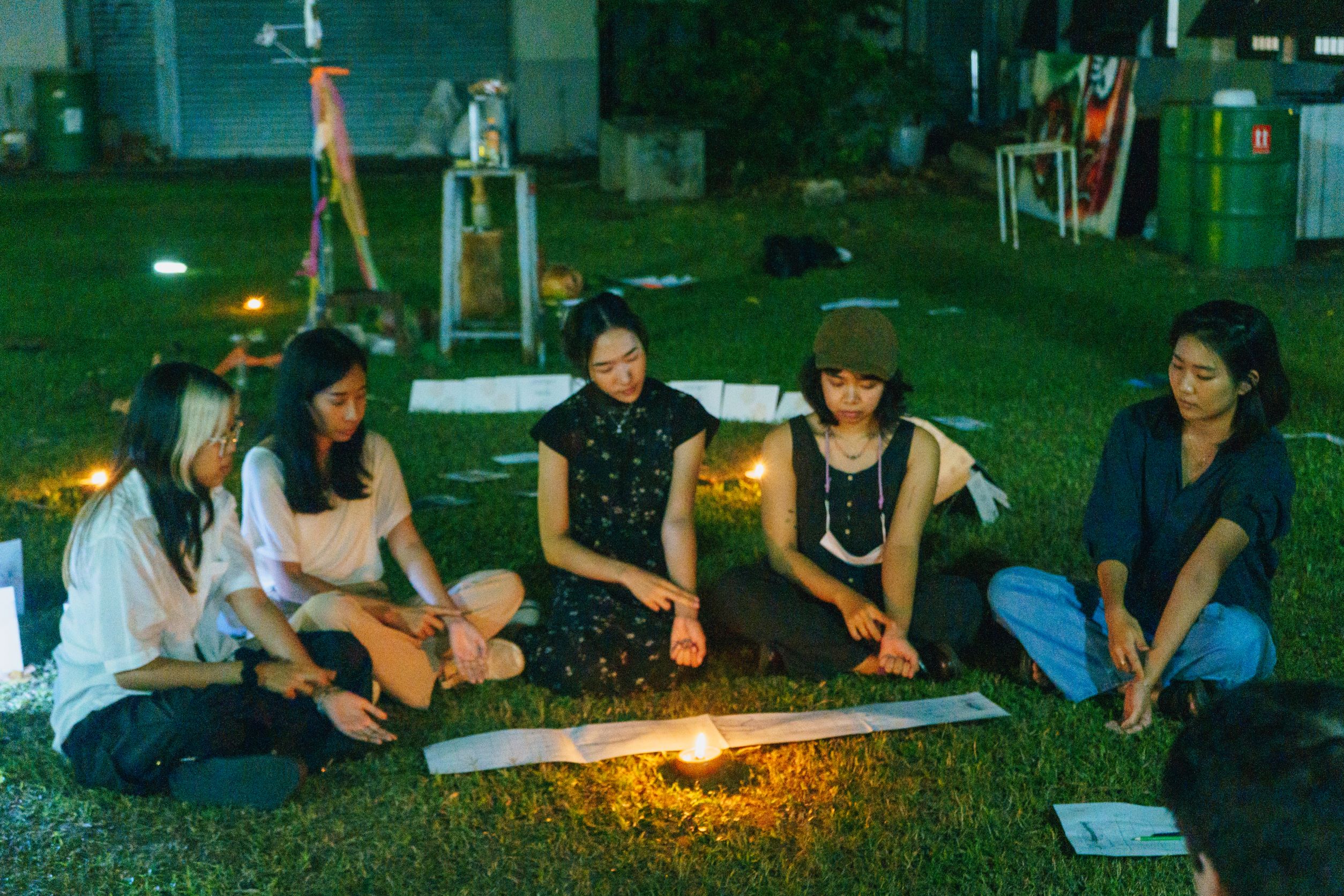 Above:
Chup Chup.
Below:
Breathing Smoothie.
Above:
Chup Chup.
Below:
Breathing Smoothie.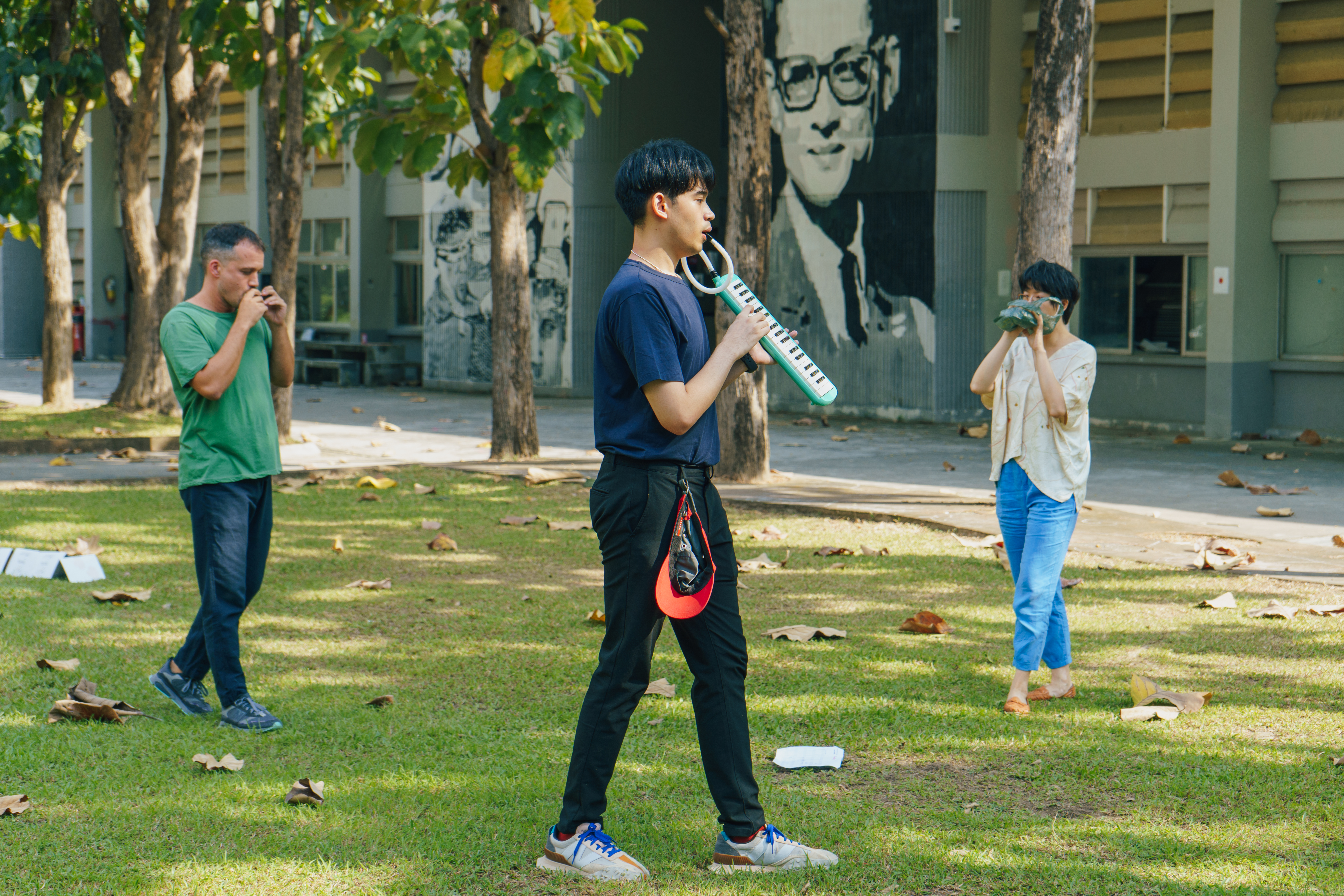
Mind-skin code is a dynamic and organic exploration of the human form, pushing the boundaries of traditional bodily expression and revealing different avenues of artistic expression. With a focus on the interplay between human and non-human species, Mind-skin code creates a multi-sensory, multi-affective and multi-emotional space that invites dialogues to unfold and expand conventional modes of communication.![]()

Undead Dying Cells

Produced by Moss Piglets
Supported by The Cultural Taiwan Foundation
Photo credit: คณะวิจิตรศิลป์ มหาวิทยาลัยเชียงใหม่
Present credit:
Chup Chup by
lololol ,
Soyoon Ryu ,
Wuttin Chansataboot,
Woraporn Pongsamart,
Piyathida Inta,
Rujipha Boontham and Supak Ketrat.
The lists are under requested.
Supported by The Cultural Taiwan Foundation
Photo credit: คณะวิจิตรศิลป์ มหาวิทยาลัยเชียงใหม่
Present credit:
Chup Chup by
lololol ,
Soyoon Ryu ,
Wuttin Chansataboot,
Woraporn Pongsamart,
Piyathida Inta,
Rujipha Boontham and Supak Ketrat.
The lists are under requested.

《橋上的蘇宜士掀開了被子》The quilt gets out of the bridge while Su Yi-Shi is...
王永安作品
2021
Site: Thinkers’ Studio
《橋上的蘇宜士掀開了被子》從按摩師以觸覺作為身體佈署先決感官的立場,發展有別於視覺霸權所產生的敘事邏輯,探討了觸覺中的語言矛盾、觸覺記憶的謬誤以及觸覺主導的潛顯意識中,性別流動與身體代理的主體能動性。
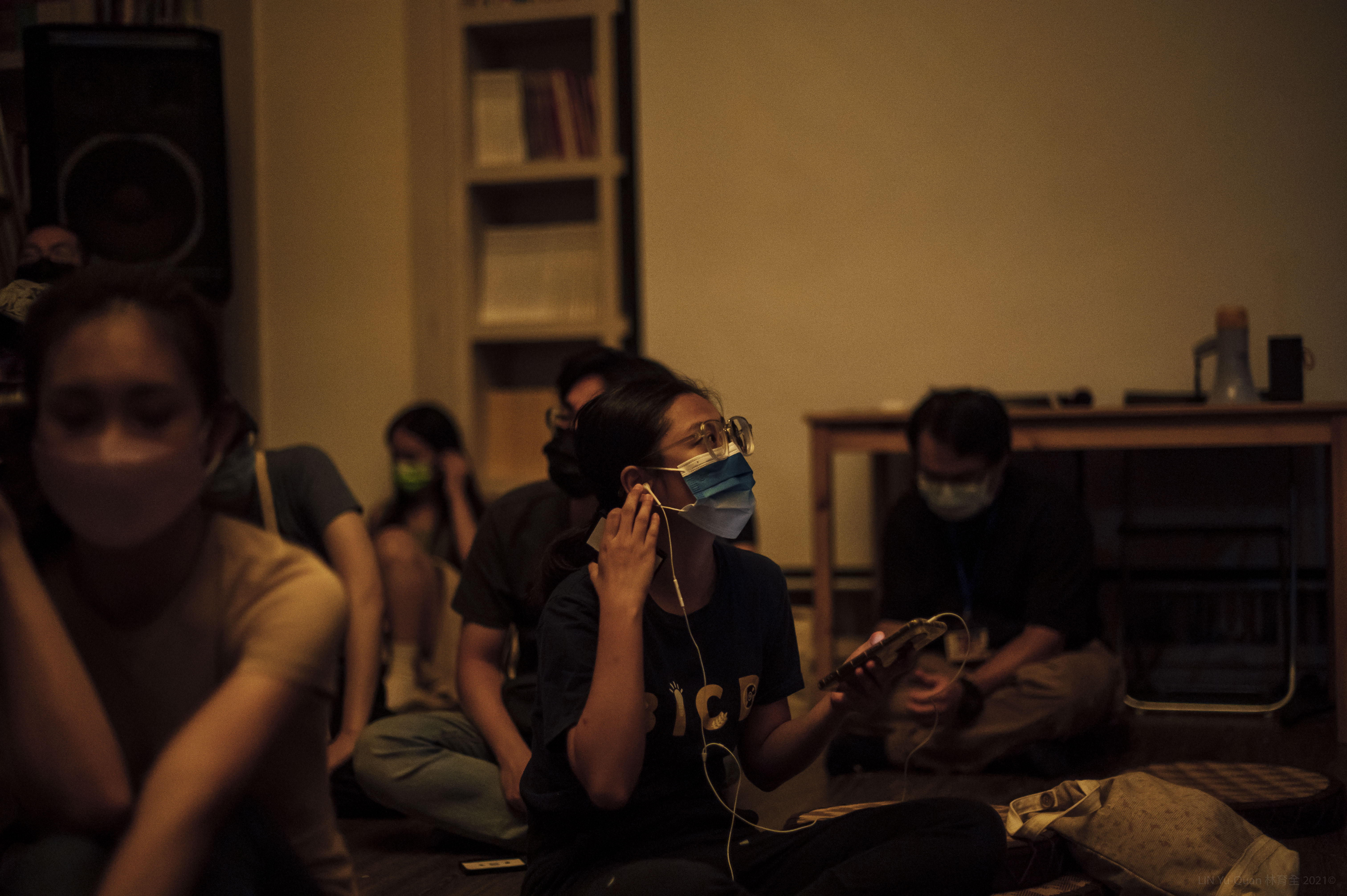
在線上虛擬空間中,假設蘇宜士掀開與不掀開被子所演化的兩種情境,一是以催眠敘事皮膚與環境之間的關係,或是以清晰口條敘述身體內外部之間的流動狀態。對應物理世界中表演者將身體作為雙重空間中的觸覺系譜媒介,掀開被子的是觀眾還是蘇宜士,將由觀眾在閉上眼睛與關上耳朵,並嘗試在模糊的身體邊界尋找方向感的過程中,相繼梳理開來。

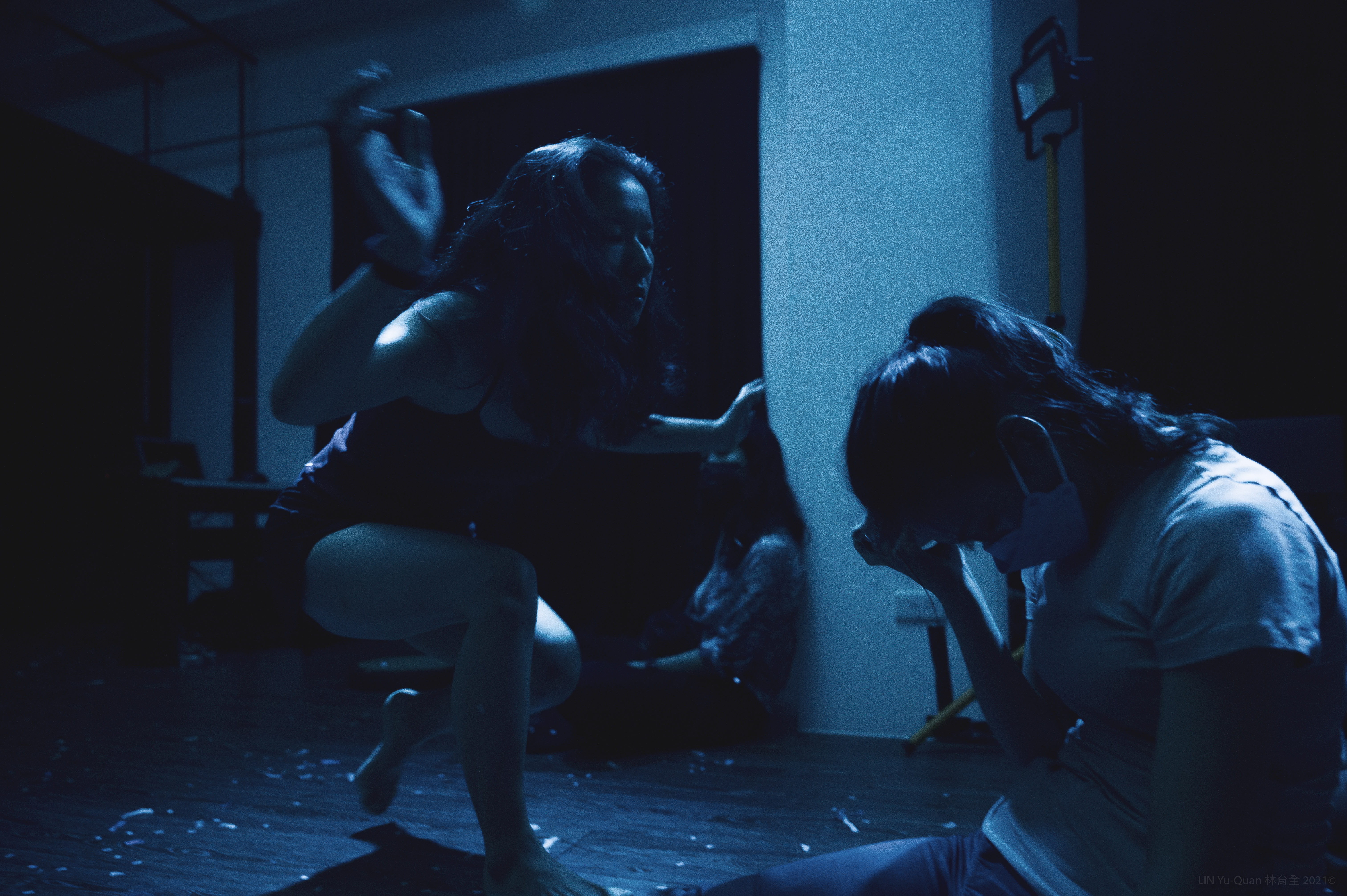
“The quilt gets out of the bridge while Su Yi-Shi is..." challenges the dominant visual narrative and delves into the linguistic contradictions, false memories, and subjectivity of touch in a world increasingly shaped by the intersections of brainhood and algorithm. The work explores the fluidity of gender and body-ownership through touch-based performances that prioritize the sense of touch as the primary mode of body engagement.
There are two scenario performance settings, one is physical on site, the other is virtual.
In the virtual performance, the audiences are invited to experience two distinct scenarios – one that blurs the relationship between the skin and the environment through hypnotic storytelling, and another that narrates the fluid states between the body's internal and external spaces. The performer's body serves as a touch-based mediator in a dual space, raising questions of agency as to whether it is the audience or Su Yishi who unveils the quilt, which is a piece of transparent plastic cover. In the physical world, the performer's body serves as a sensory mediator in a dual space, as the audience decides whether it is the audience or Su Yishi who raises the quilt, unfolding through the process of closing their eyes and ears and seeking direction within the blurry boundaries of the body.
___________________________________________________
「橋上的蘇宜士如果沒有掀開被子,掀開被子的可能就不是他了。」


如果沒有掀開被子,現在,爾後,延期再延期。
最後期限是蘇宜士眼底折射尾側的水潤:

「這水帶著表面張力般地不可親近之罪。」

暴力的介入,即使瞬間萎縮,他能順著萬有引力、如同所有水滴的速率,溶入血流成河的潛意識紋理。


如果掀開被子的不是他了,再下一次的昇華,蘇宜士結成北極冰,渴望著暖室的異常,能夠帶來溫度的驚喜。

然而又再一次的,
連速度都還沒能構成得完整,蘇宜士成為大西洋東岸的,沿著岸邊的逆紋浪花。
如果掀開了被子,這次,蘇宜士下定決心:
「成為火山口的濕氣吧,我不要再順著地球。」
氣體拽著蘇宜士的所有身體、聲體跟生體,他奔向的是大氣層了,在和空氣的振動交纏中,擺盪出耳朵。
連速度都還沒能構成得完整,蘇宜士成為大西洋東岸的,沿著岸邊的逆紋浪花。
如果掀開了被子,這次,蘇宜士下定決心:
「成為火山口的濕氣吧,我不要再順著地球。」
氣體拽著蘇宜士的所有身體、聲體跟生體,他奔向的是大氣層了,在和空氣的振動交纏中,擺盪出耳朵。
_______________________________________ ______ ______

演出製作團隊
編導演|王永安
製作與行政總籌|大可創藝
計畫導師暨導演顧問|符宏征
表演|王永安、洪信惠、蕭景馨
研調暨課程助理|佐佐木康介
技術統籌暨舞監|蘇呈軒
聲音設計|卓士堯
原創音樂|Coralie Gauthier
平面設計暨宣傳照攝影|林育全
執行製作|葉佩韋
行銷宣傳暨票務|賴冠妤
贊助單位|財團法人國家文化藝術基金會、新北市文化基金會
Production: DuckArt Studio
Director/Artist/Performance/Script: Wang Yung An
Original Music: Coralie Gauthier
Sound Design: Vincent Juo
Senior Director Consult: Fu Hong-Zheng
Photograph: Lin, yu-quan
Detail Crew List: DuckArt Studio
Transtactility

Transactility is a score of how our unconscious skin perception influences our identity in various situations. Wang Yung An converts the activity of neurons and muscle cells, known as action potential, into sonic and haptic material, exploring the connection between physiological phenomena and cognitive behavior.
”You may not anticipate a rainy day if the weather is cloudy and dry, but the humid air on a sunny day will bring back memories of a rainy day.”
Join Old An on their journey by clicking the figure above.
2021
Work by Wang Yung An
Advised by Ministry of Culture
Organized by The Cultural Taiwan Foundation
Co-organized by SEA plateaus
Produced by Moss Piglets
Feast of Spring
Feast of Spring is a series that delves into the complex and fluid nature of gender identity. By transforming my gender identity as a female into non-binary and queer expressions through painting and performance. I try to offers a nuanced exploration of the balance between gender boundaries and the multifaceted nature of sexual orientation. The interweaving of these mediums offer a unique insight into the my personal journey towards a deeper understanding of my own identity.
Feast of Spring is a series that delves into the complex and fluid nature of gender identity. By transforming my gender identity as a female into non-binary and queer expressions through painting and performance. I try to offers a nuanced exploration of the balance between gender boundaries and the multifaceted nature of sexual orientation. The interweaving of these mediums offer a unique insight into the my personal journey towards a deeper understanding of my own identity.
2010-2018

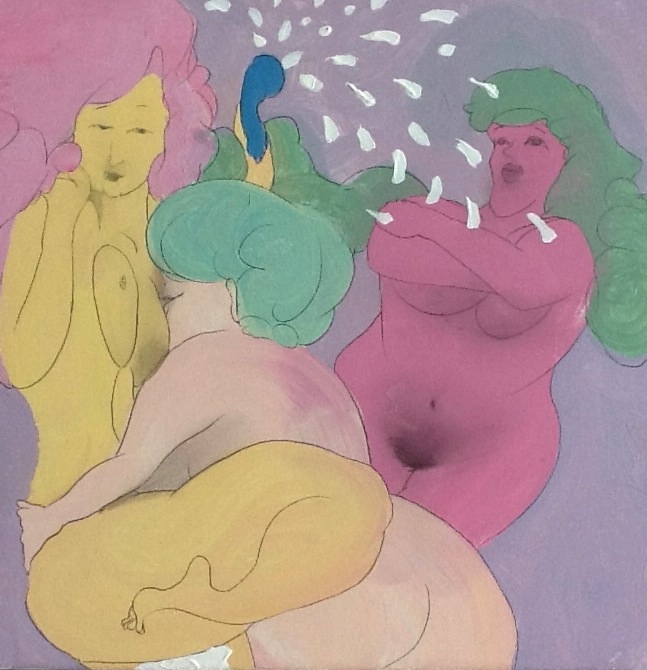
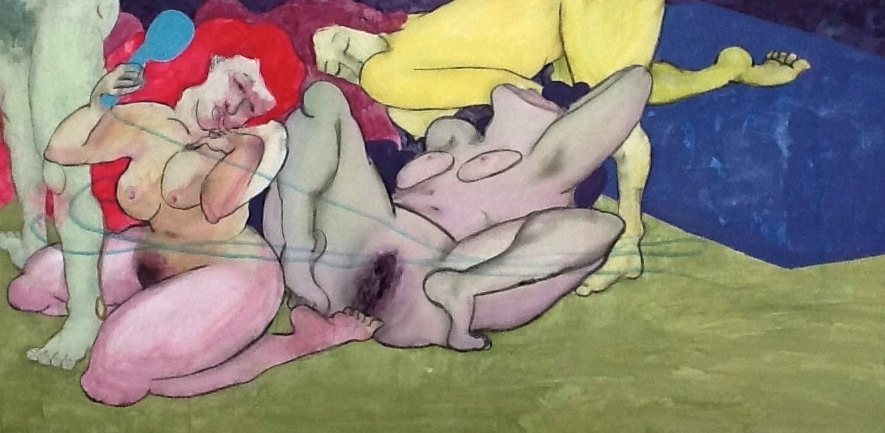



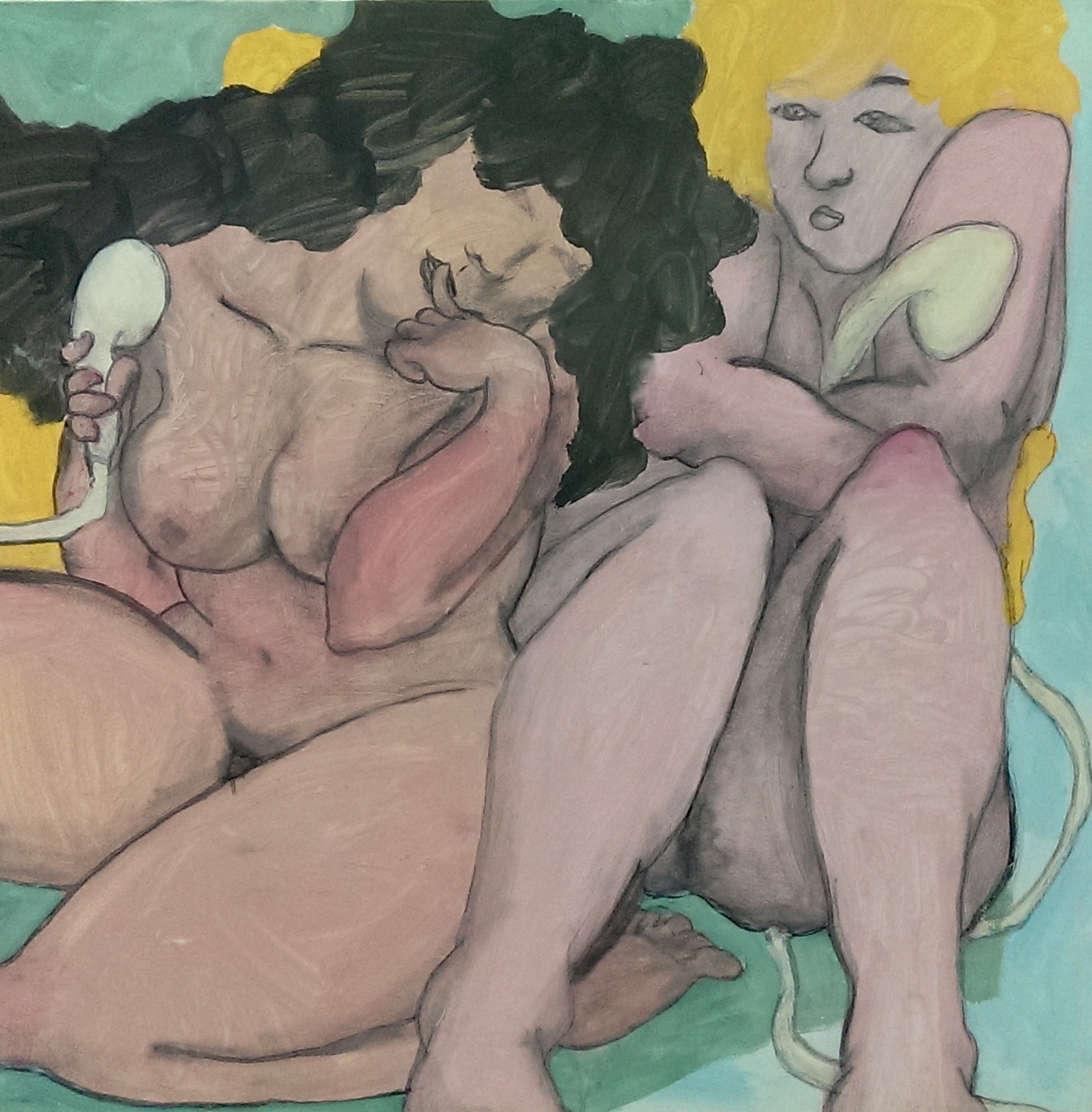
Feast of Summer
The "Feast of Summer" is a multi-sensory experience that translate the intangible into tangible form. This synesthetic score is an organic manifestation of the interplay between touch, sound, and meditation. The work embodies my synaesthesia experience, blurring the lines between the senses.
2018
Feast of Autumn is the third eye of this visible world.
2013




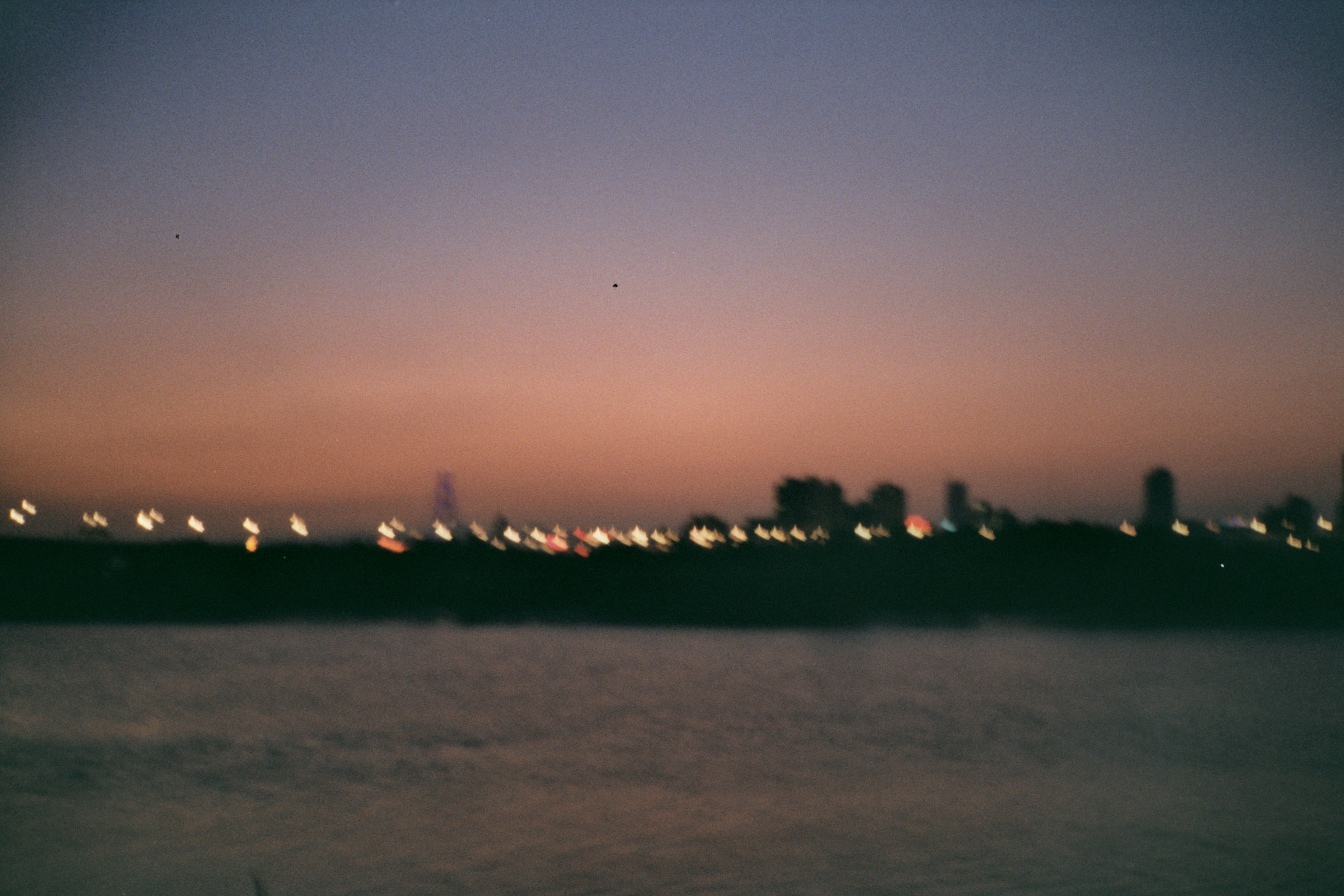

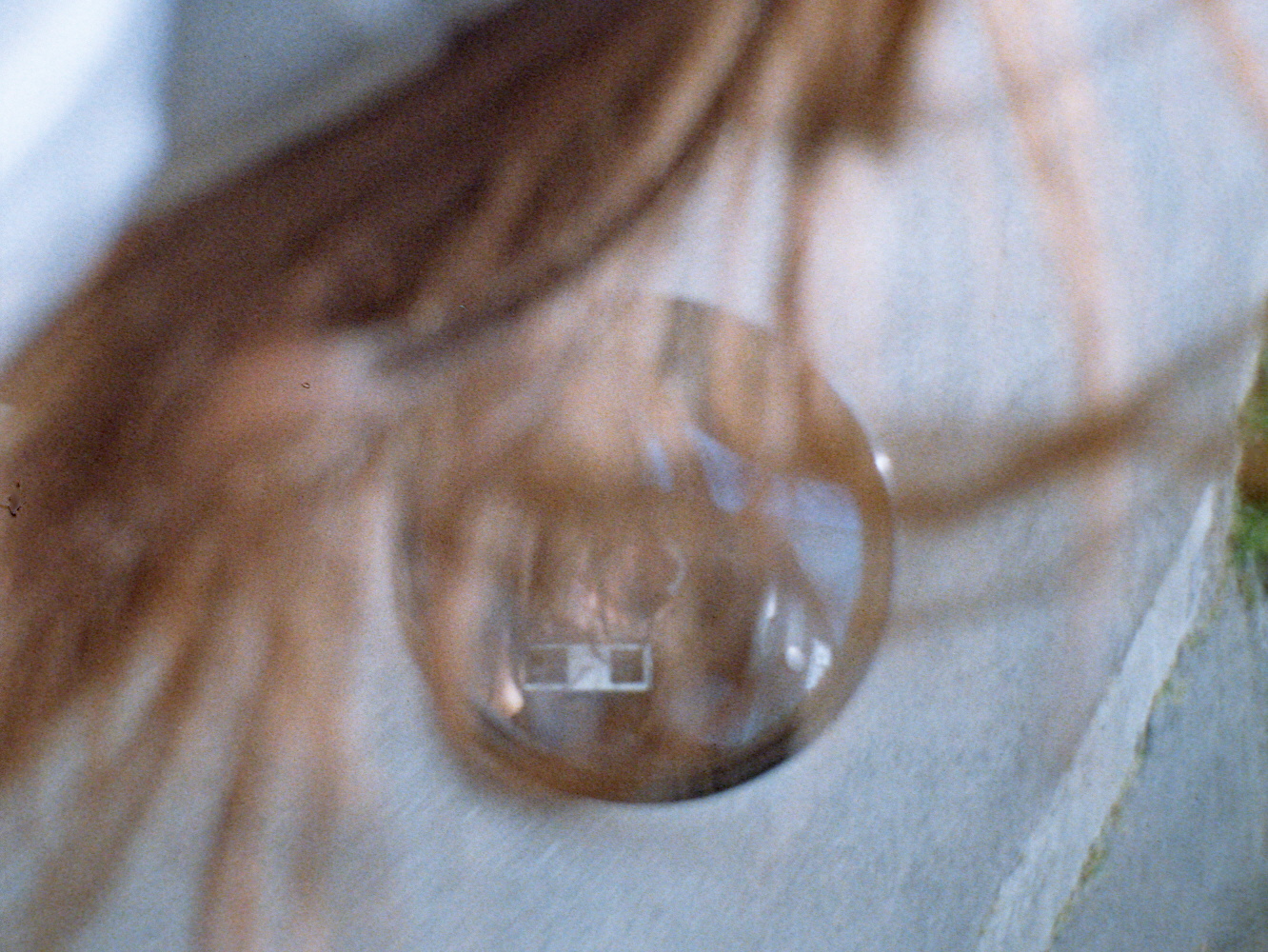


2014



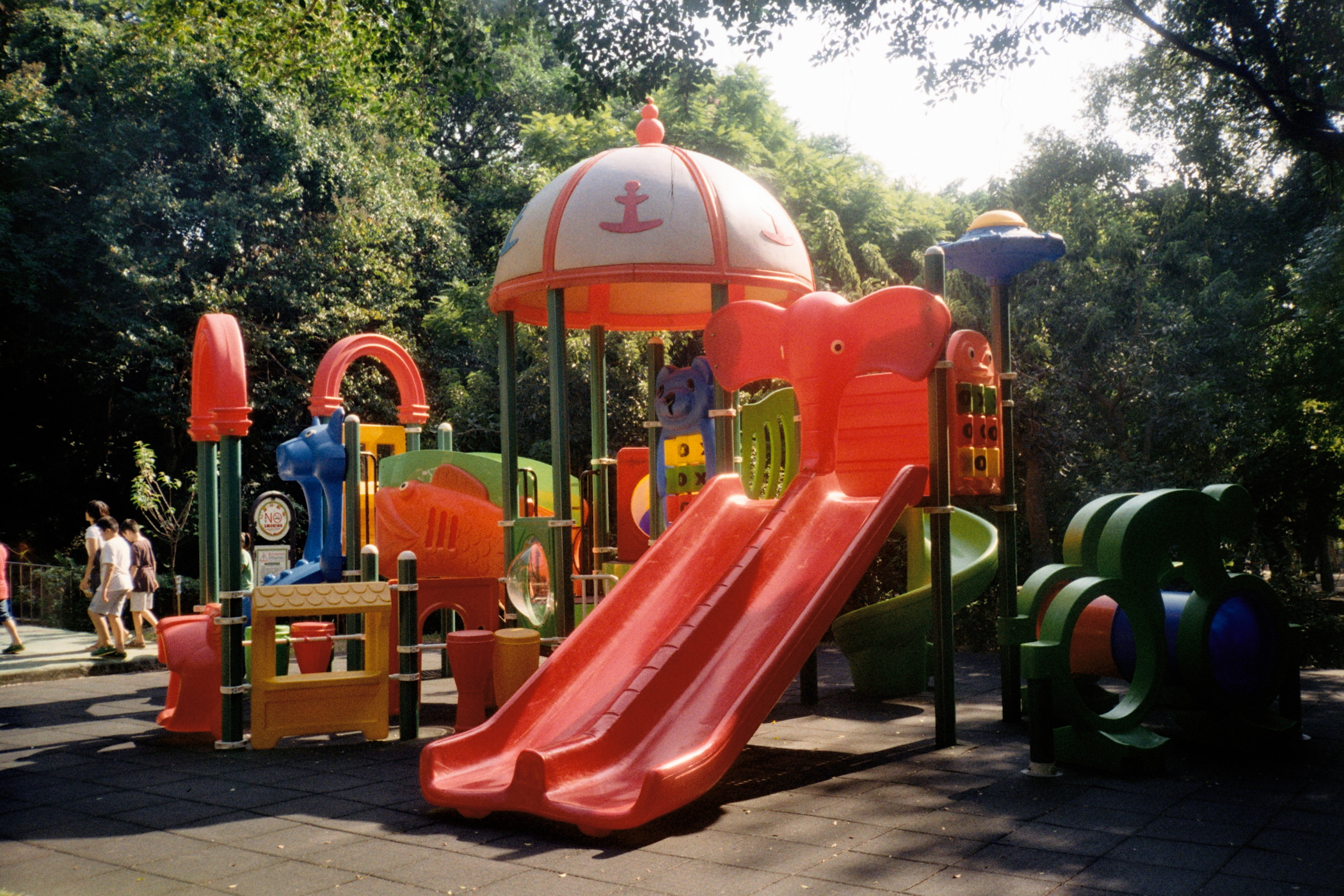



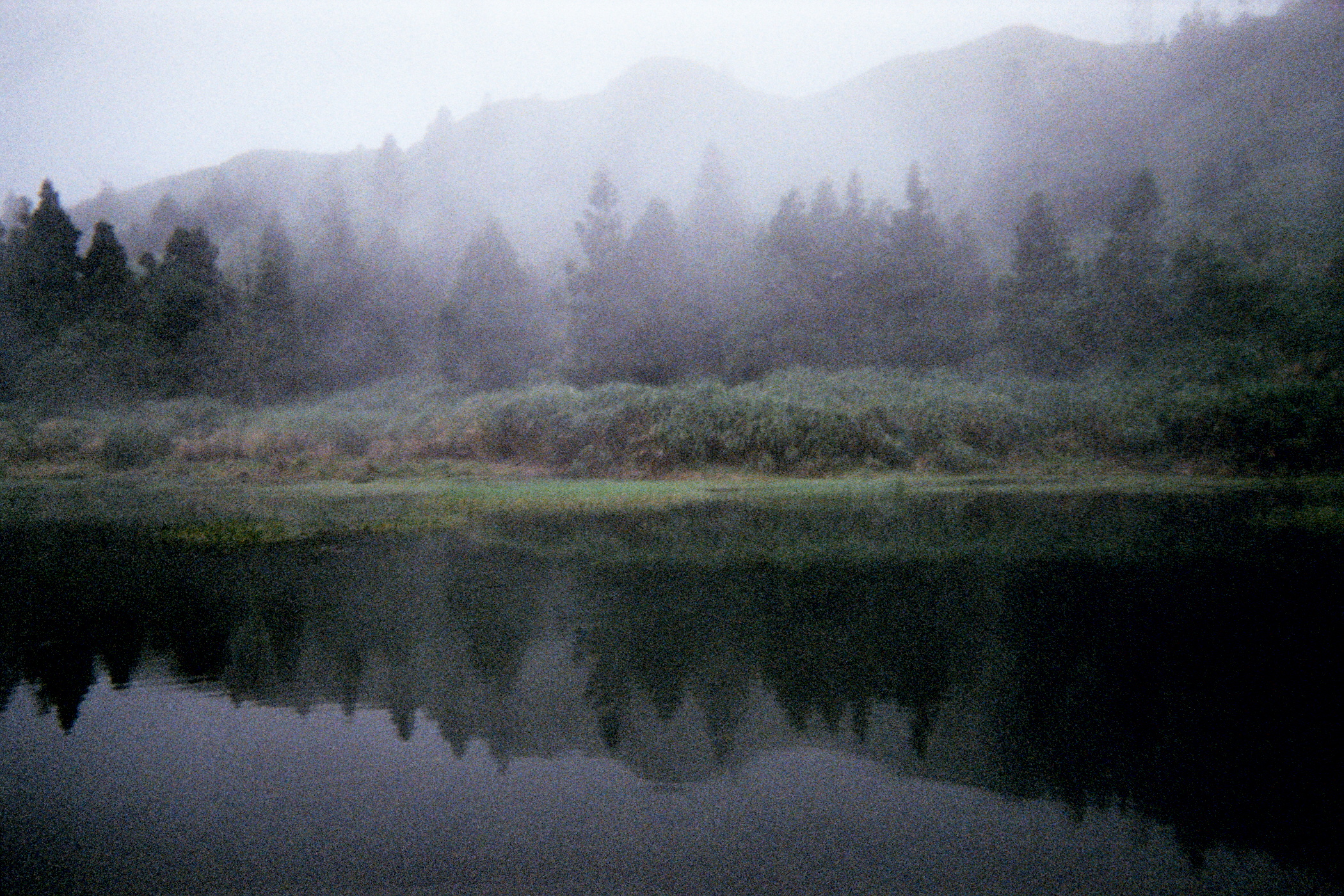
2015




2016


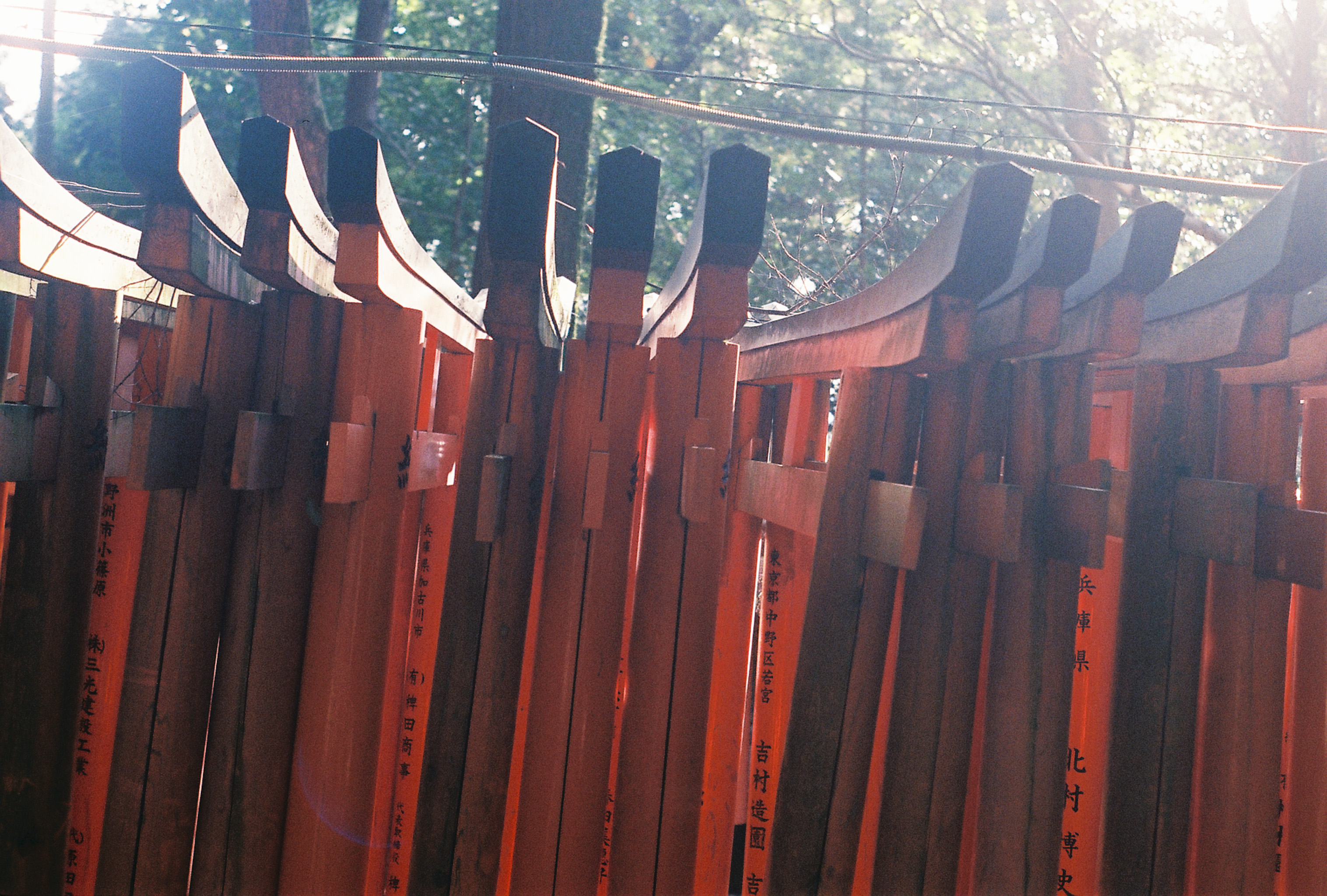







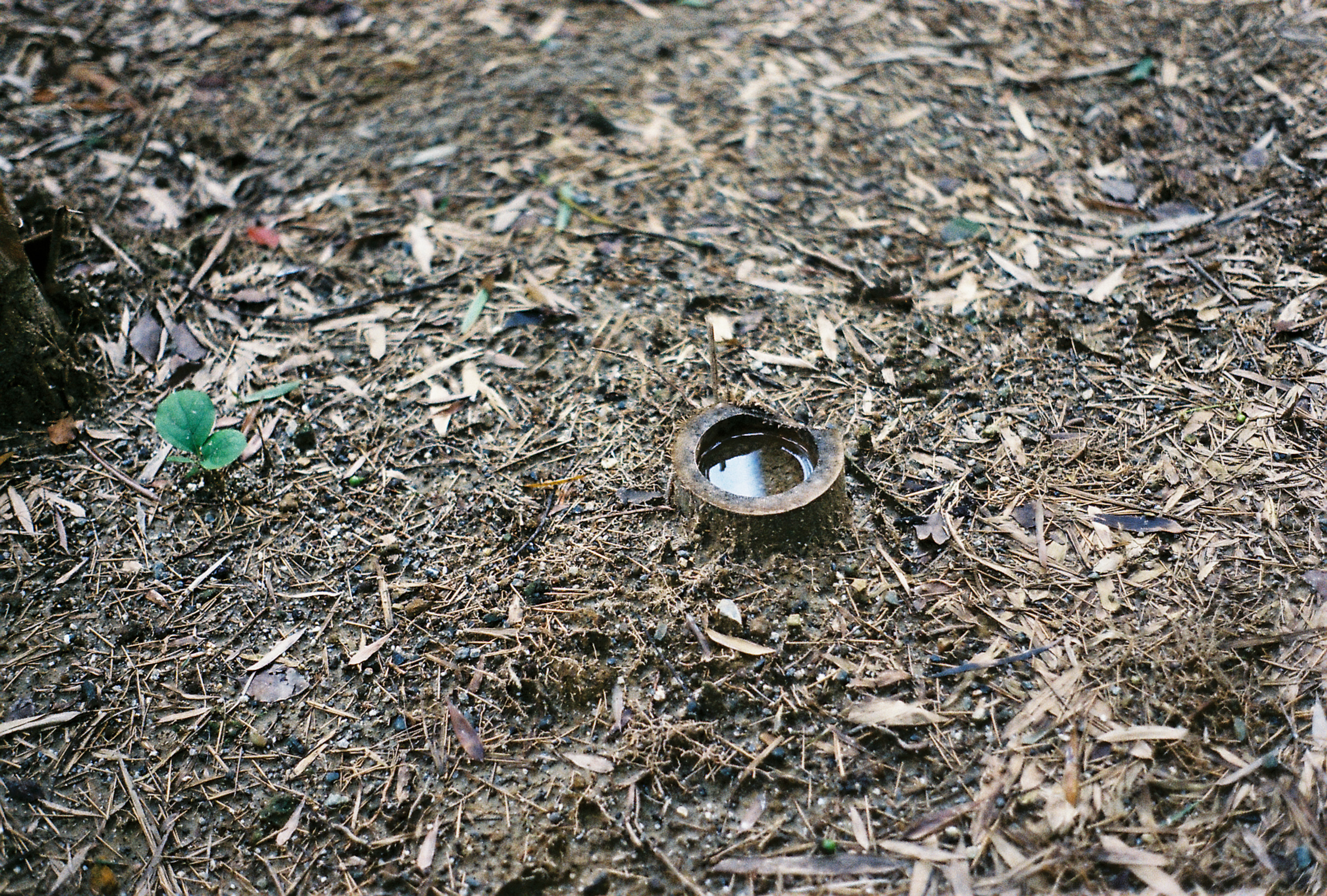














































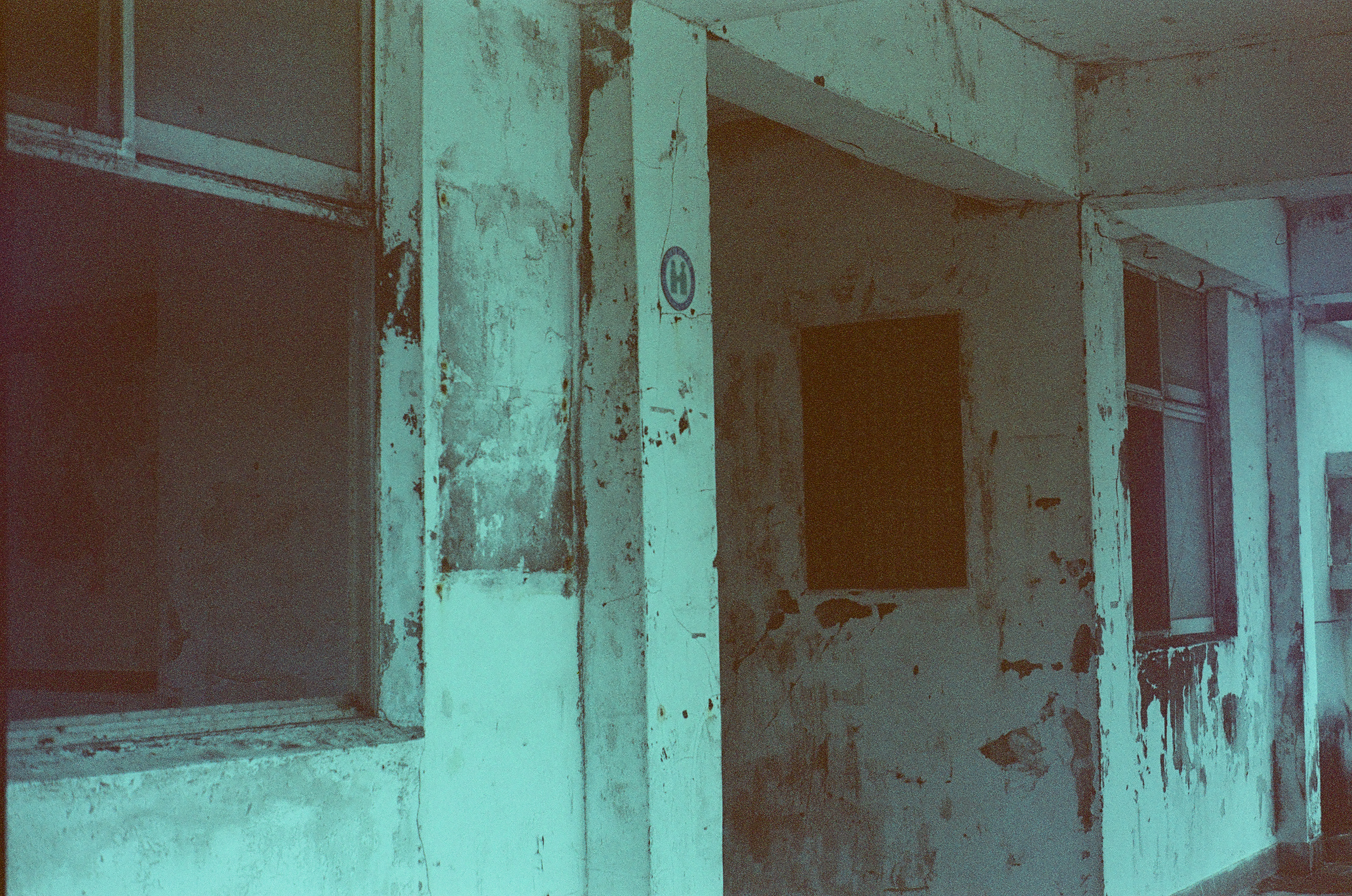



2017


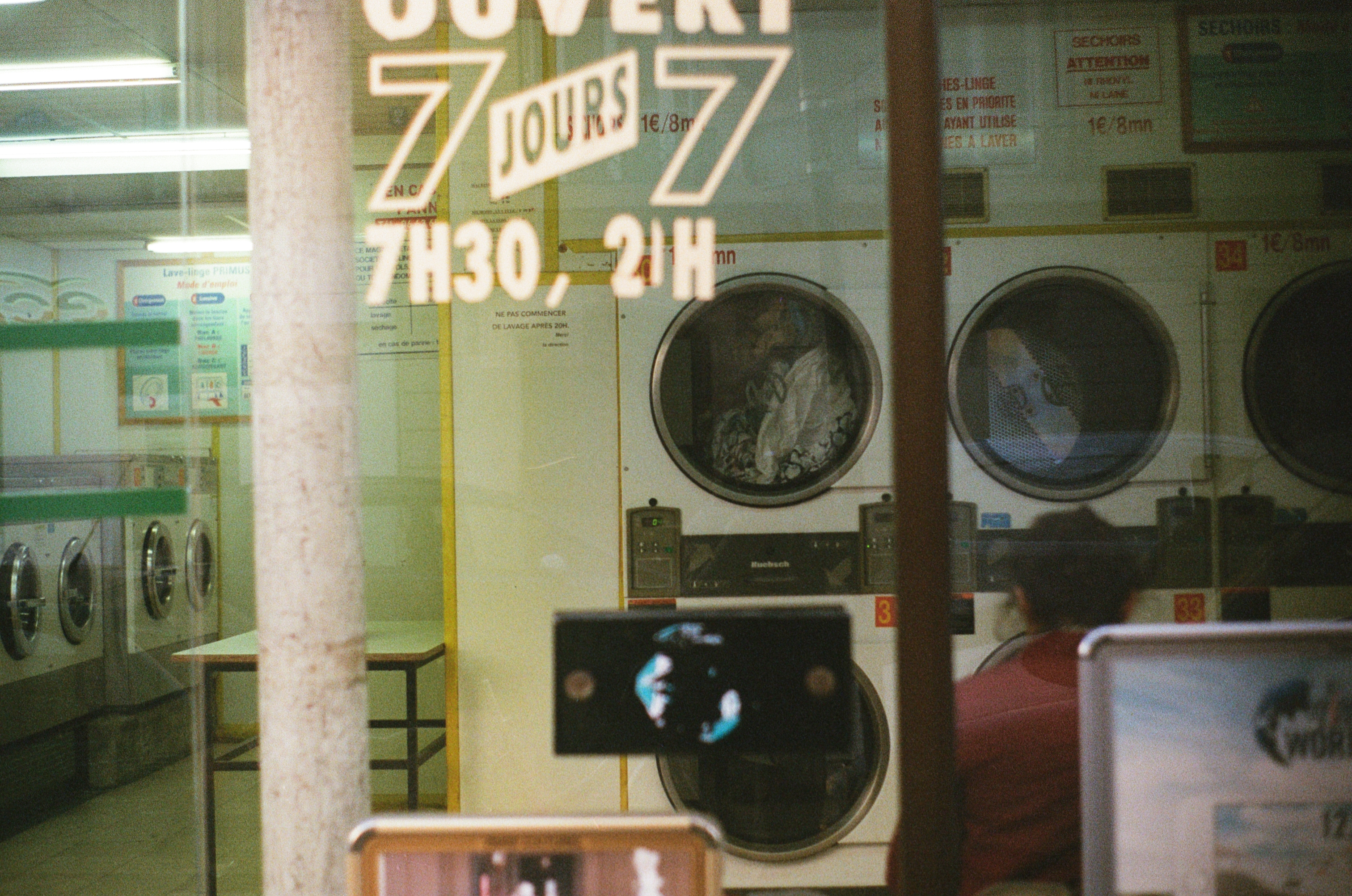











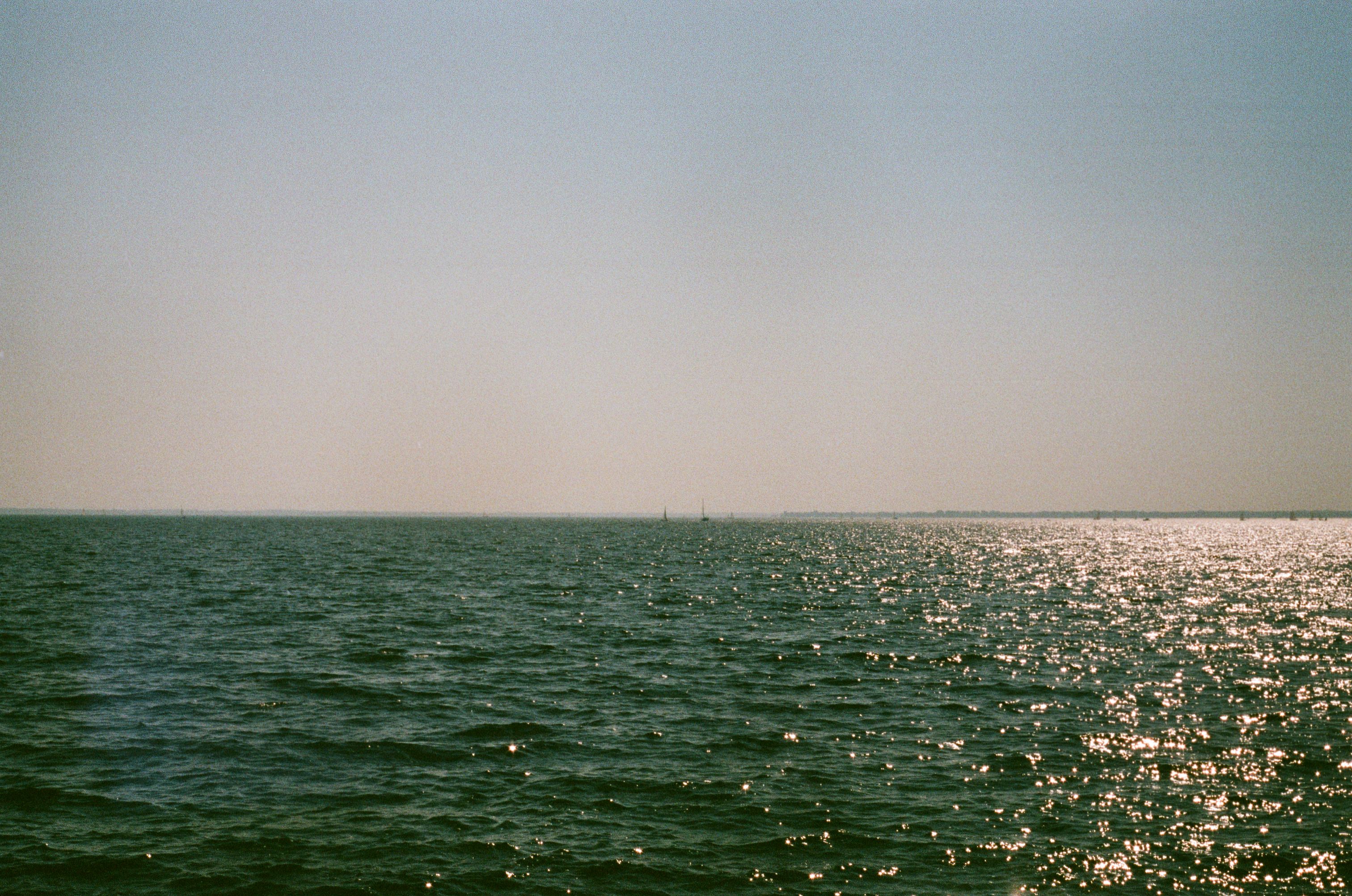



2018-2019



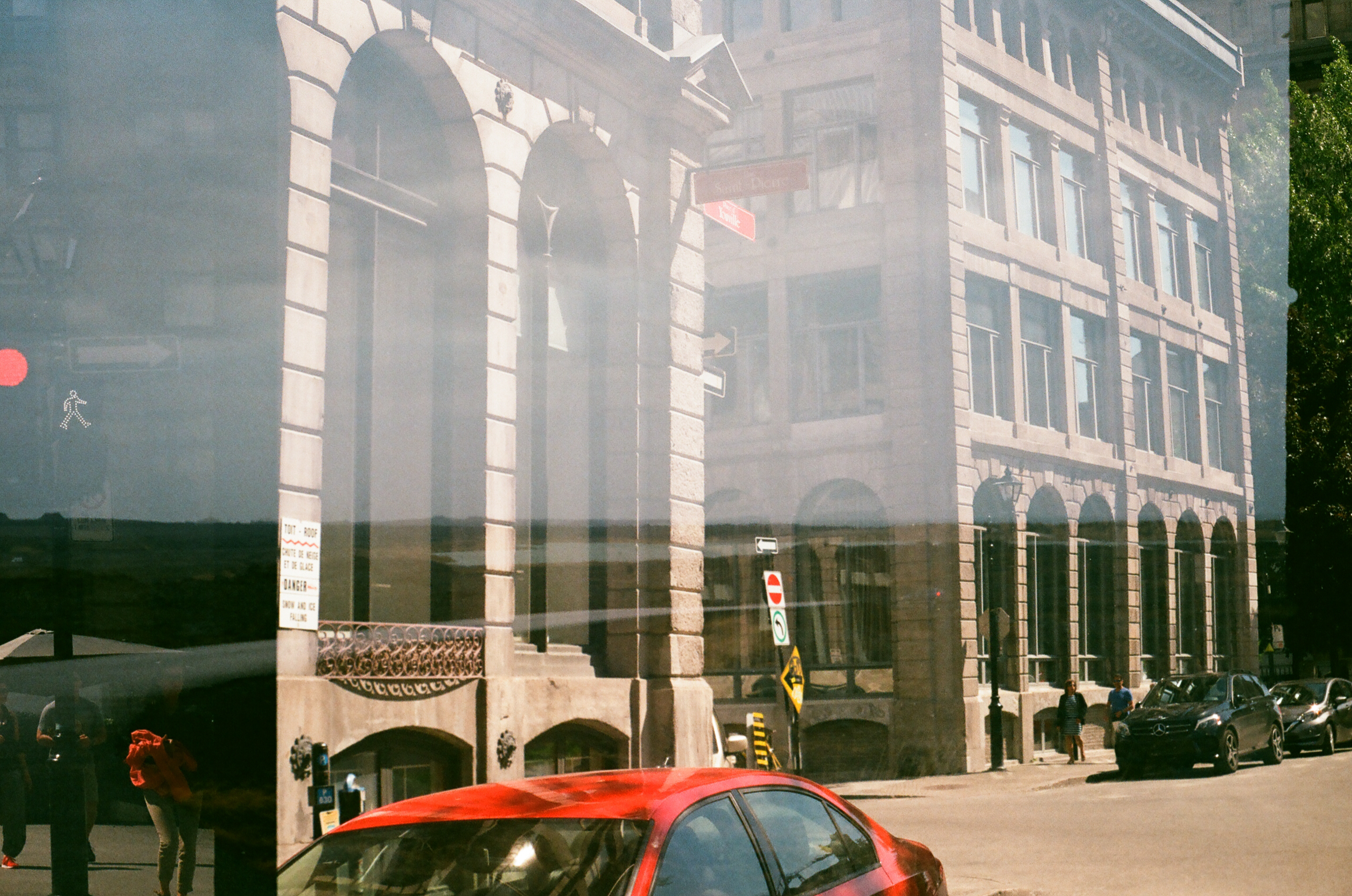











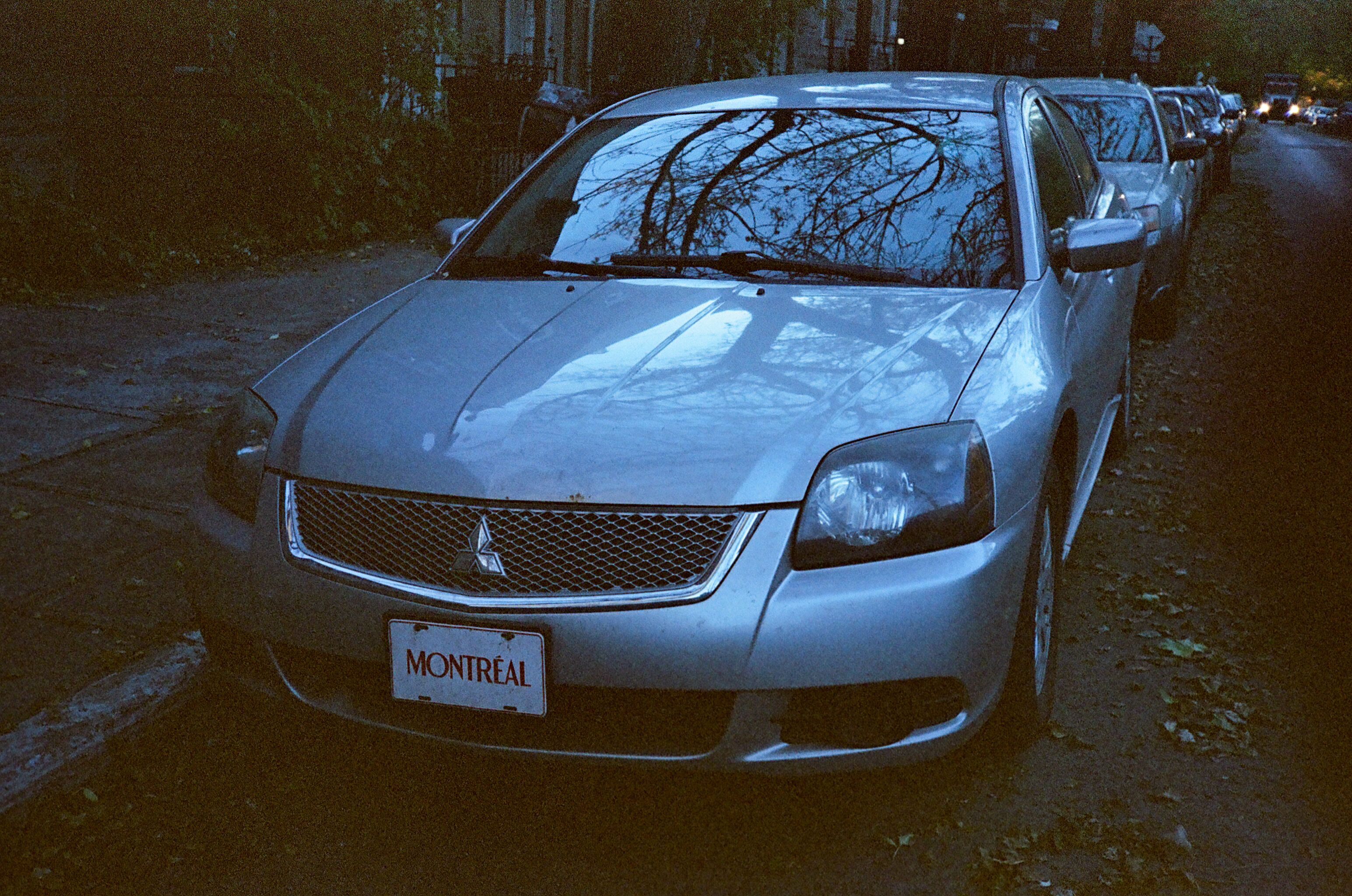




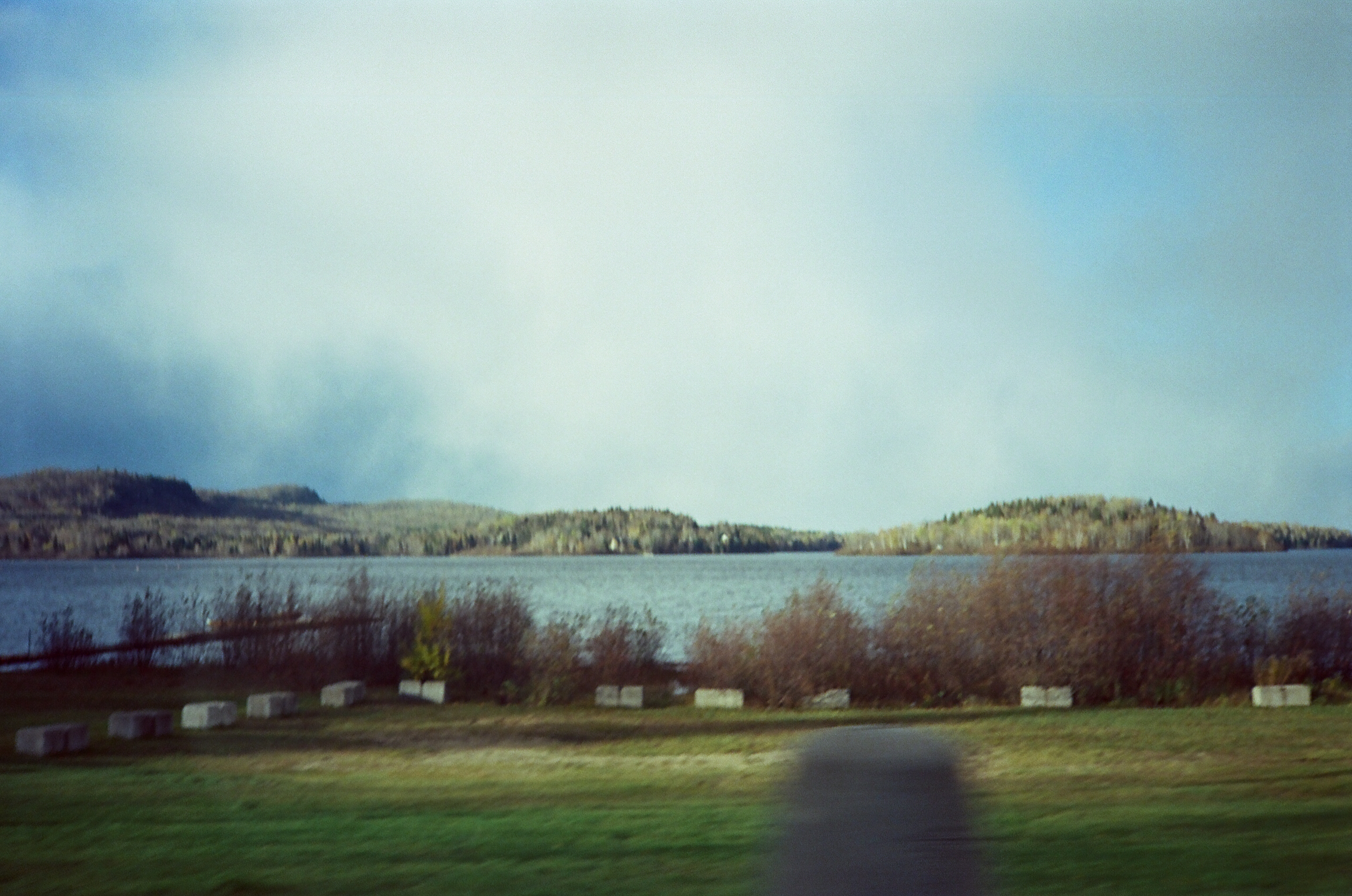



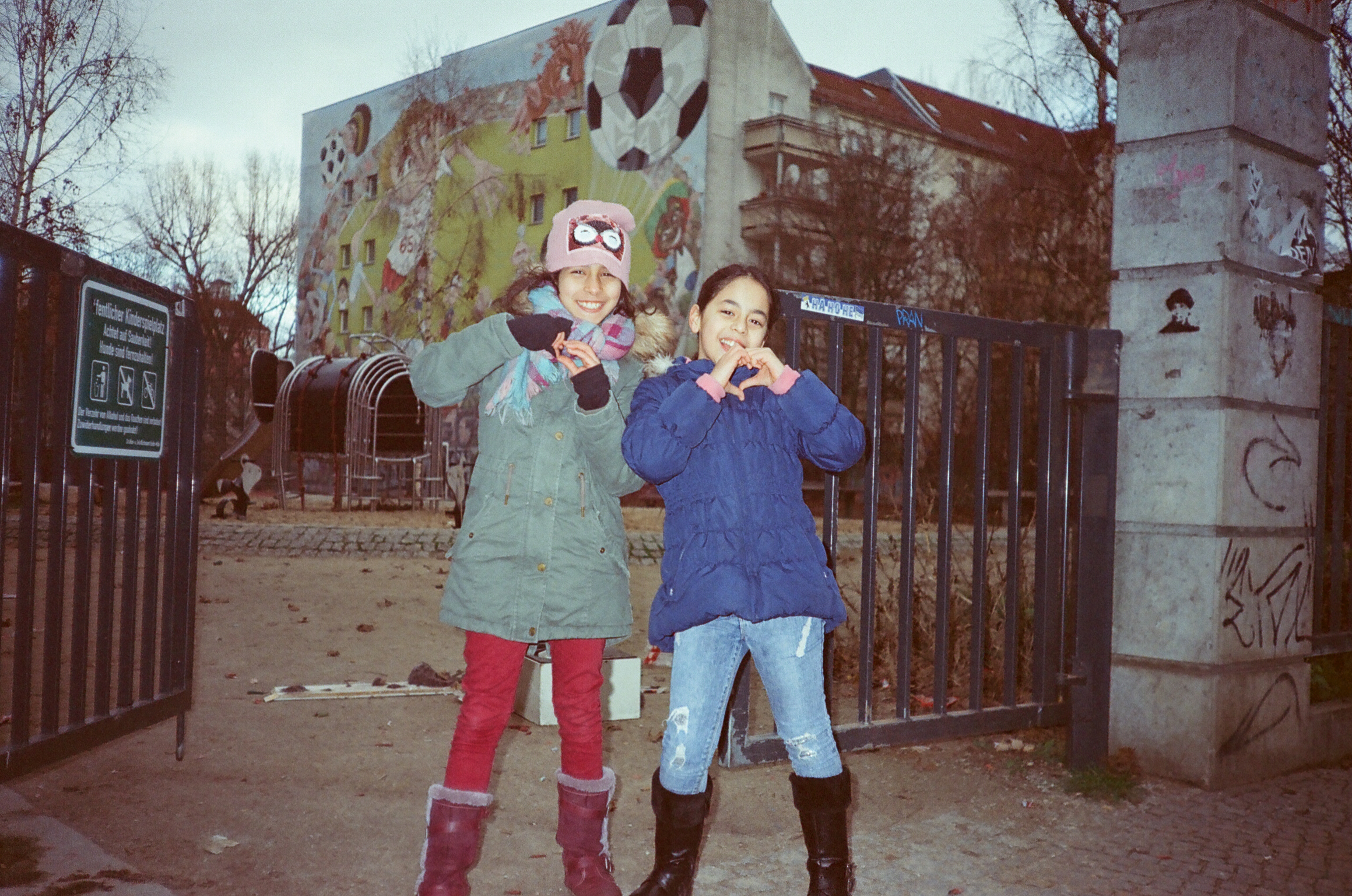



Feast of Winter is the Hub of my artistic practice, where you could find the most initial and original spark.
XXXX
Photography: 林育全
王永安 Wang Yung An (Taipei, Taiwan)
Bio
Wang Yung An focuses her research in the context of touch cognitive mechanisms, while expanding her artistic approach in performance and visual language. With an emphasis on deducing inner-material dynamics under the skin, Wang has been developing a touch score/script system to investigate biopolitics via varying body codes, boundaries and interoceptive feelings. Her work reflects on the gaps between human and non-human life. Her creative propositions question the haptics of seeing, as well as how skin can act as a thinking organ.
Education
2014 National Taiwan University of Arts, B.F.A. in Fine Art
2023 National Central University, M.S. in Cognitive Neuroscience
2023 National Central University, M.S. in Cognitive Neuroscience
PERFORMANCE (Selected)
2022 Performance, Asymmetric Utopia, Industrial Technology Research Institute(ITRI), la nuit blanche, Taipei, Taiwan
2021 Performance, The quilt gets out of the bridge while Su Yi-Shi is..., Duck Art Studio, Thinkers Studio, Taipei, Taiwan
2020 Performance, Human Fabric Trilogy - The Haptics of Seeing III, Taipei Fringe Festival, Nadou Theatre, Taipei, Taiwan
2020 Performance, Human Fabric Trilogy - The Haptics of Seeing I, Florāotu, Blueprint Culture & Creative Park, Tainan, Taiwan
2017 Performance, Vimprodaco - Vienna improvisations dance company :: 7 TIMES 7 TWO ::, Vienna City, Vienna, Austria
2021 Performance, The quilt gets out of the bridge while Su Yi-Shi is..., Duck Art Studio, Thinkers Studio, Taipei, Taiwan
2020 Performance, Human Fabric Trilogy - The Haptics of Seeing III, Taipei Fringe Festival, Nadou Theatre, Taipei, Taiwan
2020 Performance, Human Fabric Trilogy - The Haptics of Seeing I, Florāotu, Blueprint Culture & Creative Park, Tainan, Taiwan
2017 Performance, Vimprodaco - Vienna improvisations dance company :: 7 TIMES 7 TWO ::, Vienna City, Vienna, Austria
EXHIBITION (Selected)
2020 Human Fabric Trilogy - The Haptics of Seeing II, Palace Museum, C-Lab, Taipei, Taiwan
2017 Mosaika collaborative, Mosaika, Montreal, Canada
2017 Alter experiences, Guelph, Canada
2014 Floating frequency, URS21 Chung Shan Creative Hub, Taipei, Taiwan
2014 Lifestyle & art, Fujian, China
2014 Hualien Culture & Creative Art, Hualien cultural creative industries park, Hualien, Taiwan
2013 Magic Narrow People, Longshan Temple Culture Plaza, Taipei, Taiwan
2012 Pluto is not a planet, New Taipei City Arts Center, New Taipei city, Taiwan
2012 Tides, Duxing Military dependents' village Cultural Park, Penghu, Taiwan
2011 Green Zone, Beitou Public Assembly Hall, Taipei, Taiwan
2017 Mosaika collaborative, Mosaika, Montreal, Canada
2017 Alter experiences, Guelph, Canada
2014 Floating frequency, URS21 Chung Shan Creative Hub, Taipei, Taiwan
2014 Lifestyle & art, Fujian, China
2014 Hualien Culture & Creative Art, Hualien cultural creative industries park, Hualien, Taiwan
2013 Magic Narrow People, Longshan Temple Culture Plaza, Taipei, Taiwan
2012 Pluto is not a planet, New Taipei City Arts Center, New Taipei city, Taiwan
2012 Tides, Duxing Military dependents' village Cultural Park, Penghu, Taiwan
2011 Green Zone, Beitou Public Assembly Hall, Taipei, Taiwan
RESIDENCIES
2022 Industrial Technology Research Institute (ITRI), Hsinchu, Taiwan
2012 Duxing Military dependents' village Cultural Park, Penghu, Taiwan
2012 Duxing Military dependents' village Cultural Park, Penghu, Taiwan
WORKSHOP, TALKS and RESEARCH
2023 Academic Writing, The Changes in EEG Theta Oscillation Induced by Affective Touch: Comparing Brush Stroke, Hand Stroke, and Massage-like Tapping, Researcher, Human Memory & Cognitive Electrophysiology Laboratory.
2022 Workshop, Seven Bodies & the Talking Sea, Moss Piglets, The Cultural Taiwan Foundation. Chiang Mai, Thailand.
2021 Online Workshop, Seven Bodies & the Talking Sea, Moss Piglets, The Cultural Taiwan Foundation
2022 Workshop, Seven Bodies & the Talking Sea, Moss Piglets, The Cultural Taiwan Foundation. Chiang Mai, Thailand.
2021 Online Workshop, Seven Bodies & the Talking Sea, Moss Piglets, The Cultural Taiwan Foundation
PUBLIC ART
2015 Artistic Design, Under the melon shed, Artist, DADA Art, Chaozhou Train Station, Pingtung, Taiwan
2017 Mosaicist, Chuck Close- Subway Portraits, Mosaika, New York, USA.
2018 Mosaicist, Stephen Andrews- a part of/ apart from, Mosaika, Paris, France
2018 Mosaicist, Yoko Ono- Sky (72nd Street Station), Mosaika, New York, USA.
2018 Mosaicist, Dixie Friend Gay - Expanding and Collapsing, Mosaika, Cheney WA, USA.
2017 Mosaicist, Chuck Close- Subway Portraits, Mosaika, New York, USA.
2018 Mosaicist, Stephen Andrews- a part of/ apart from, Mosaika, Paris, France
2018 Mosaicist, Yoko Ono- Sky (72nd Street Station), Mosaika, New York, USA.
2018 Mosaicist, Dixie Friend Gay - Expanding and Collapsing, Mosaika, Cheney WA, USA.




